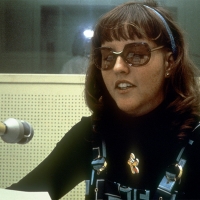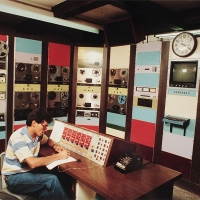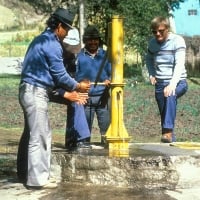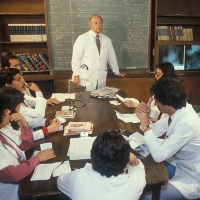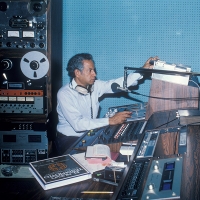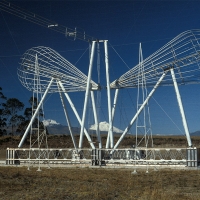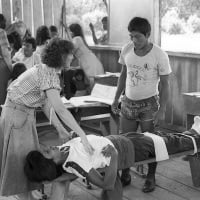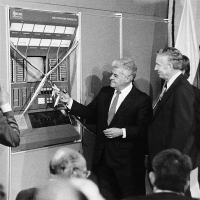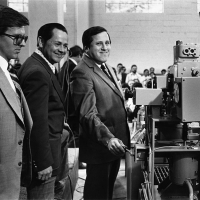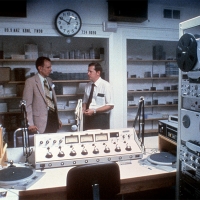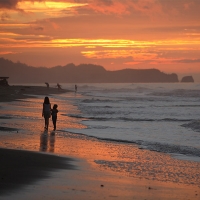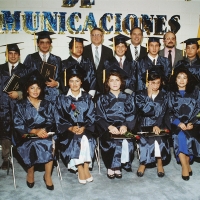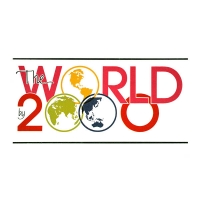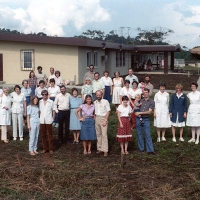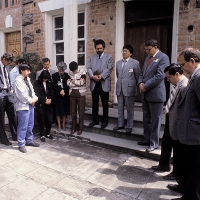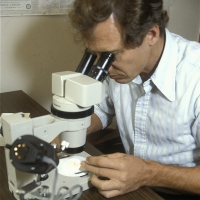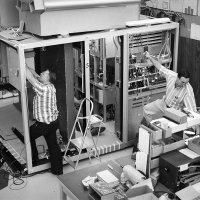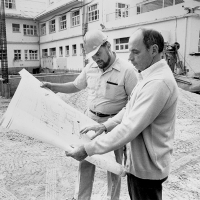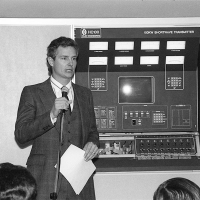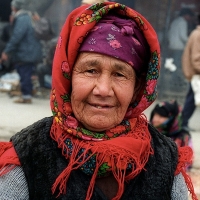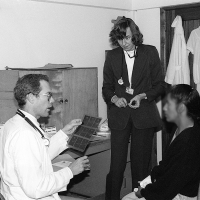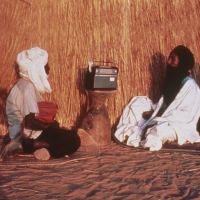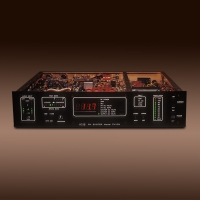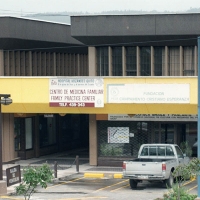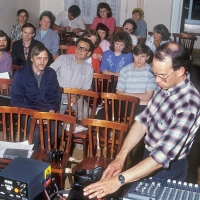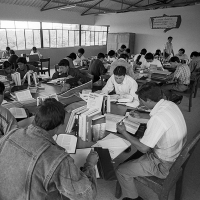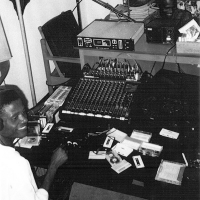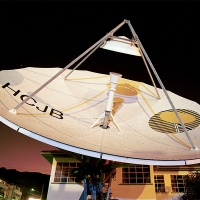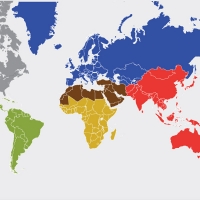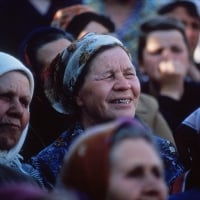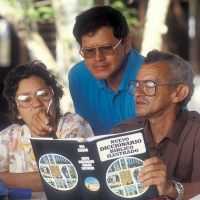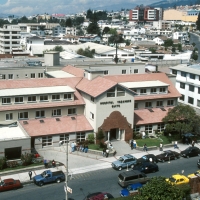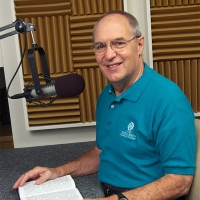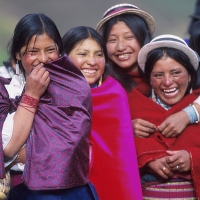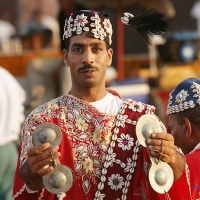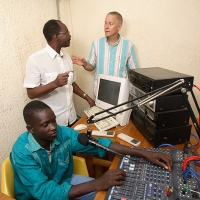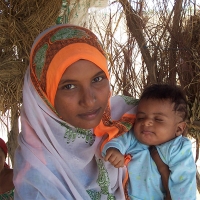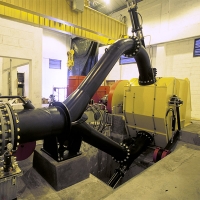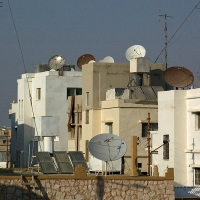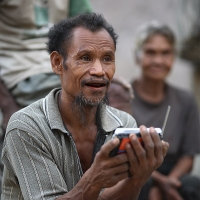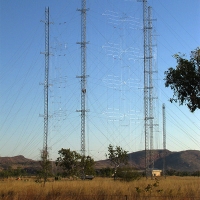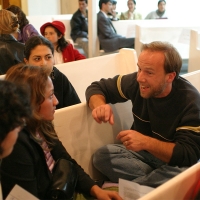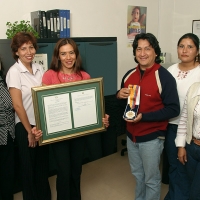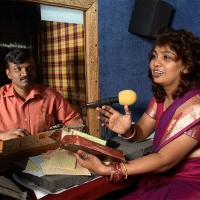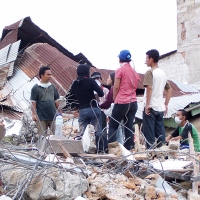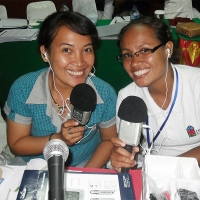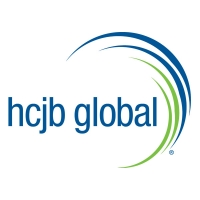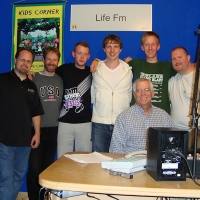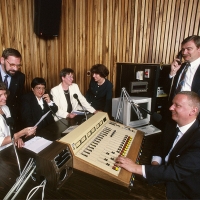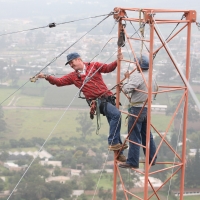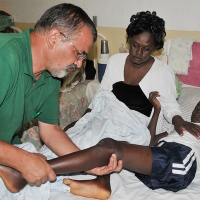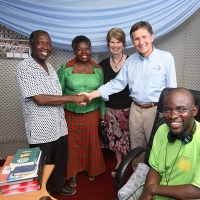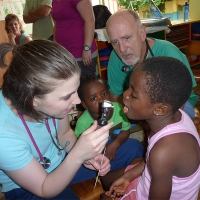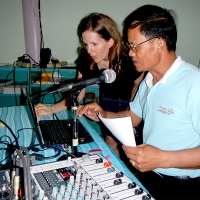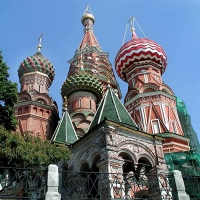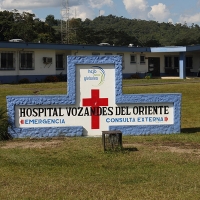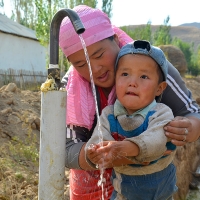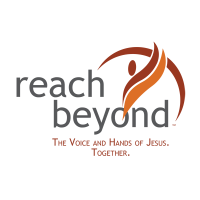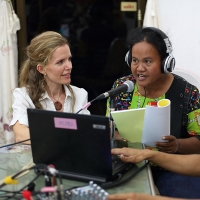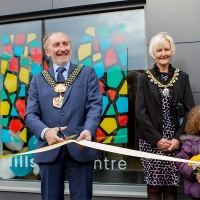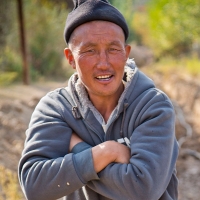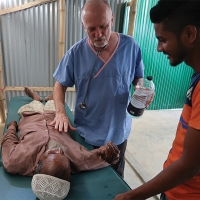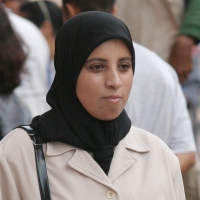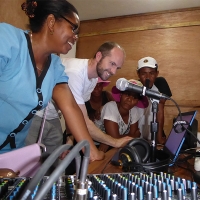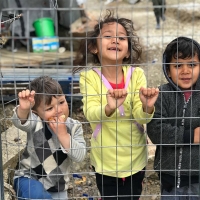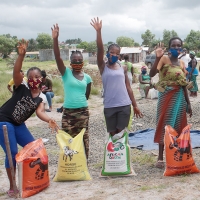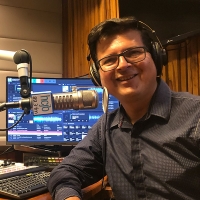In 1927, God called Clarence Jones to "Arise and go south with the Gospel... using Radio." Clarence would start Radio Station HCJB in Quito, Ecuador in 1931. The mission would grow into a global ministry, known as HCJB World Radio, that was guided by these two foundational verses:
"Call unto me and I will show you great and mighty things which you do not know." Jeremiah 33:3
"Not by might nor by power, but by my Spirit,’ says the Lord Almighty." Zechariah 4:6
Reach Beyond began as the world's first missionary radio station, but our founders were willing to use any means, tools or technologies available to help present the Gospel. The mission also recognized the need to demonstrate the Gospel in practical ways which led to the development of medical and community development ministries. Our goal was never to just present or demonstrate the Gospel, rather to obey Jesus's command to go make disciples. One of the strengths of Reach Beyond is that from the very founding of the mission, we were committed to doing ministry through partnership with national believers, the local church, and like-minded ministries.
Join us in celebrating God's faithfulness and what He has done since our beginnings as Radio Station HCJB through what He is doing through Reach Beyond today.
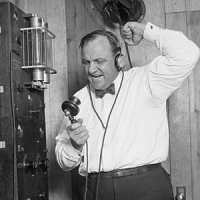

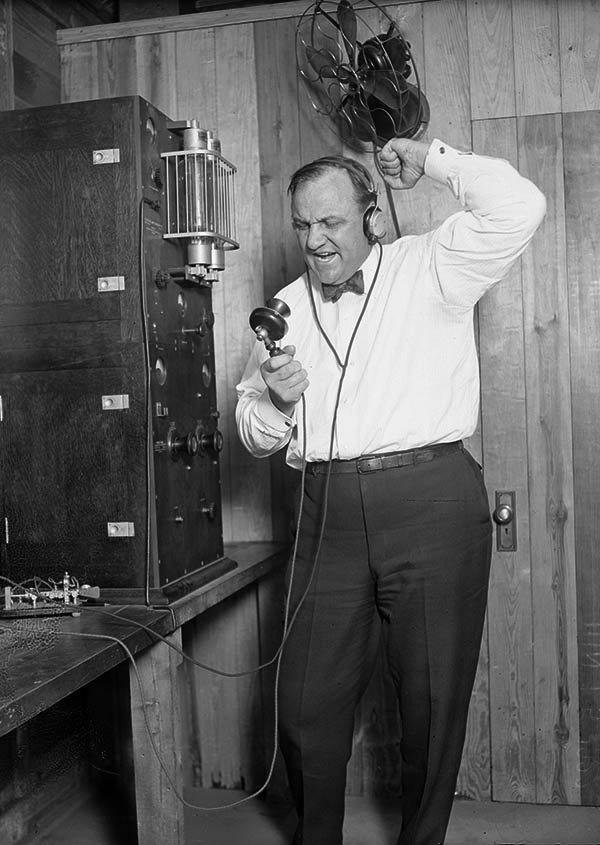 |
As a young man living in Chicago, Illinois, Clarence Jones played trombone in a Salvation Army band often led by his father. Clarence was a gifted musician and was invited to play in the band at Moody Church, where Paul Rader was pastor. It was there that God began working in Clarence's heart. One Sunday when Rader gave an invitation, Clarence stood up and truly gave his life to God. Within a week Clarence felt God's calling to full-time Christian service. Clarence studied at the Moody Bible Institute in Chicago and graduated as president of his class.
Clarence became part of the founding staff of the Chicago Gospel Tabernacle led by evangelist Paul Rader in 1922. Rader took to the airwaves to announce the upcoming opening of the Chicago Gospel Tabernacle. While many thought radio to be a tool of the Devil, Rader was determined to use radio to spread the Gospel.
For two weeks, Rader brought Clarence Jones and the Chicago Tabernacle's newly formed brass band along with him to radio station WBU. At that time, WBU was located in a wooden shack on top of Chicago's City Hall. Clarence Jones recalled that the band stood outside the shack on the roof, and on cue, literally played into a small hole in the wall where a microphone was held from the other side. This was the start of Paul Rader's and Clarence Jones' radio ministry.
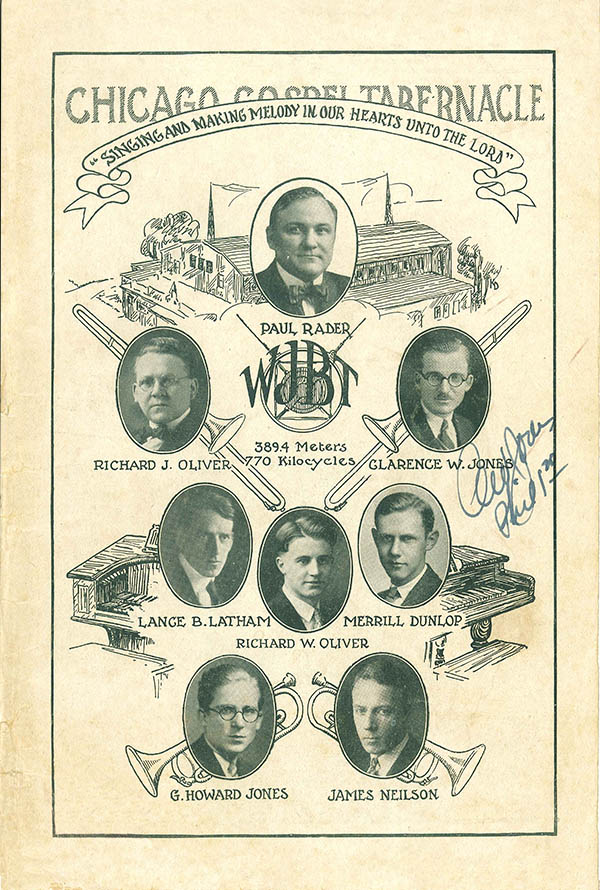
Rader was not afraid to use unconventional tools to tell people about Christ. His services were unusual and have been described as almost having a circus-like atmosphere. People were drawn to the spectacle that combined popular music, drama and the larger-than-life cowboy, athlete and boxer turned evangelist.
This atmosphere was perhaps the perfect training ground for Clarence whose talent, determination and vision for ministry had few limits.
In the following years, Rader and the Chicago Gospel Tabernacle staff, under the direction of Clarence Jones, regularly produced some 14 hours of programming each Sunday on the Chicago Gospel Tabernacle's station WJBT (Where Jesus Blesses Thousands) using a shared frequency with WBBM.
While Rader and WJBT were not the first to broadcast a Christian program via radio, [Radio station KDKA in Pittsburgh aired a Sunday evening service from Calvary Episcopal Church on Jan 2, 1922.] Rader went beyond simply airing a church service and embraced the medium of radio to speak to people outside of church. Rader's radio programs included "The Breakfast Brigade", which was aired daily on many local stations and even nationwide through CBS affiliates. Because of this, Paul Rader is recognized as the first religious broadcaster.
Paul Rader's Global Influence
Rader's willingness to use any tool to reach people for the sake of the Gospel left an indelible impression on those he mentored. Rader impacted many thousands of people during his time as an evangelist, pastor of Moody Church, president of The Christian and Missionary Alliance, founder of The Chicago Gospel Tabernacle, and The World-wide Christian Couriers missionary society.
Rader's pioneering spirit continued in Clarence Jones who sought to use the latest tools in missions including radio, movies, aviation, and eventually television, to reach the regions beyond.
Rader inspired and mentored many world changers including:
Clarence Jones – HCJB/Reach Beyond
Peter Deyneka – Slavic Gospel Association
Howard Ferrin – Providence Bible Institute
Paul Fleming – New Tribes Missions
Charles Fuller – Fuller Theological Seminary
Torrey Johnson – Youth for Christ
Lance Latham – AWANA
Next: 1927 - Arise and Go South with Radio!
Back to timeline
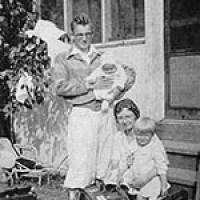

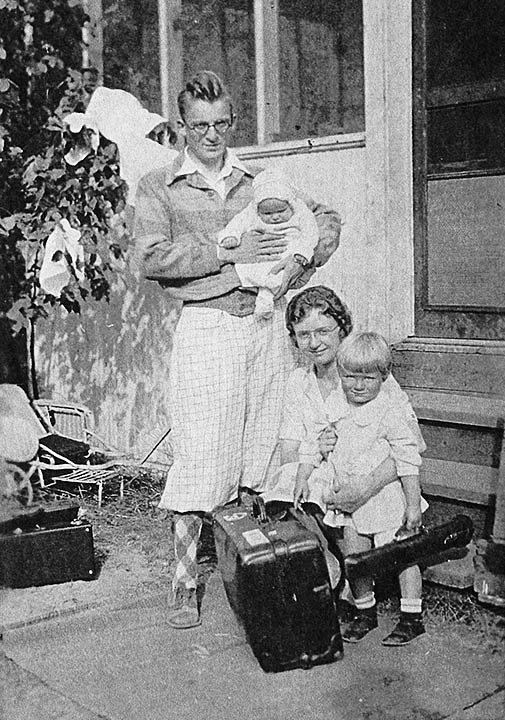 |
While Clarence Jones was an associate pastor at the Chicago Gospel Tabernacle, he was in charge of the radio ministry, music and young men’s ministries. At one point Clarence was asked to develop work with boys and girls. He had little experience in that area, so he would recruit help from fellow Chicago Gospel Tabernacle musicians and long-time friends, Richard Oliver, Lance Latham, and Virginia Highfield (who Lance would later marry).
Together they developed what they called the Tabernacle Scouts program which was loosely based on the Boy Scouts, but added more scripture. Lance and Virgina Latham would later develop the Tabernacle Scouts program into the AWANA program. (The AWANA theme song was written by Clarence Jones)
Of course, what does every good scouts program need? A camp! The Chicago Gospel Tabernacle bought ground along Lake Michigan near Muskegon, MI (present day site of Maranatha Bible and Missionary Conference). Lake Harbor was for more than just children. Clarence was placed in charge, repairing and constructing new buildings, and even adding a golf course. Clarence scheduled speakers, musicians, hired staff and did all of the things that camp director does to run a camp. That is when he wasn’t in Chicago for Rader’s weekly radio program, or playing trombone at one of Rader’s evangelistic crusades.
One Sunday morning at Lake Harbor, Paul Rader gave a missionary challenge, and at the invitation, Clarence, who had been leading the singing, went forward to give his life for missionary service. Rader was greatly moved. “God bless him. We need Clarence Jones here in this work. But if God wants him in missionary work, that is what we want for him.”
Not long after, Clarence was sitting in the service at Lake Harbor as missionaries Ed and Carol Carlson told of their work in Tibet; but what tugged at Clarence’s heart was their personal tragedy in having both of their children die on the long trek home. Yet tears of joy were on their cheeks as they told of their experiences of walking with God in very difficult situations. Despite their sorrow and loss, they were going right back to the place where God had called them.
Clarence recalled, “I thought of my two little girls in the cottage with Kath—Marian had just turned two and the new baby. What if I had been them? Would I be willing to give them up?”
The Lord spoke to Clarence Jones that night in a voice so clear that Clarence was sure it was audible to all around. Just as God had said to Philip in the book of Acts [8:26], “Arise and go south” to Clarence He spoke the same words, but added “with radio.”
“Go South with radio? Is that what God has been training me for? What about Kath? Often she has said that one reason she was content to marry me was that she knew with the work I was involved I, I would never be a missionary. And that suited her just fine.”
Clarence walked along the beach after the service, his head and heart whirling, yet he felt a strange quiet certainty. “Here I was in a fervor of missionary zeal, setting up conferences and programs for missions, and now it was turned around, pointing right at me. Would I leave this fruitful work, an area where God was obviously blessing, and set out for a spiritual desert?”
When Clarence returned to the cottage, he didn’t tell Kath of God’s call, nor that he had answered yes. But at breakfast the next morning, Clarence broached the subject: “Kath, if the Lord were to call us to the mission field, would you be ready to go?” Kath came around the table and wrapped Clarence in her arms. “It’s all right, dearest heart. Last night while I was putting the babies to bed and you were in the service, the Lord came to me, and very plainly He asked, ‘Kath, will you go?’ Yes, my love, we will go.”
Later that day, Clarence and Kath left the little girls with Paul Rader’s mother, and walked the path through the sand dunes to the Prayer Tower overlooking Lake Michigan. There they climbed the thirty steps to the first level, then up another eighteen to the privacy of the higher platform where they knelt together. Clarence was twenty-six years old, and Katherine was not quite twenty-three. “We wanted to be absolutely sure that this was not just an emotional ‘upsurge’ but was truly a call from the Lord himself. After half an hour, we knew beyond any doubting.”
But there were many doubts ahead for Clarence and Katherine. In 1928, Clarence traveled to Venezuela, Colombia, Panama and Cuba, seeking permission to start a missionary radio station. Finding all doors closed, Clarence returned to Chicago questioning his calling.
Next: 1930 - Permission granted for a radio station in Ecuador
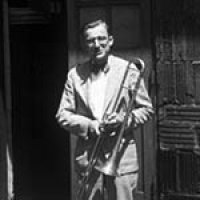
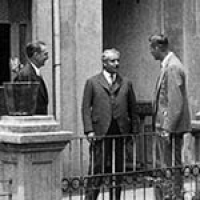

Through a series of “chance encounters” around the U.S. during 1929 and 1930, Clarence and his wife Katherine met several missionaries who were working in Ecuador. The first were John and Ruth Clark who had moved into the same apartment building where the Jones lived in Chicago. Clarence and Katherine would later meet Reuben and Grace Larson, as well as Paul and Bernice Young, who were all missionaries with the Christian and Missionary Alliance (C&MA).
These missionaries encouraged Clarence to try to start his radio station in Ecuador, and committed to help him found the station.
In Ecuador, the director of the C&MA, Stuart Clark and his wife Erma also enthusiastically joined the effort.
(All four of these missionary couples would have an active part in HCJB’s Gospel radio broadcasts from the very beginning. The Larsons and both Clark families would eventually join Radio Station HCJB full-time.)
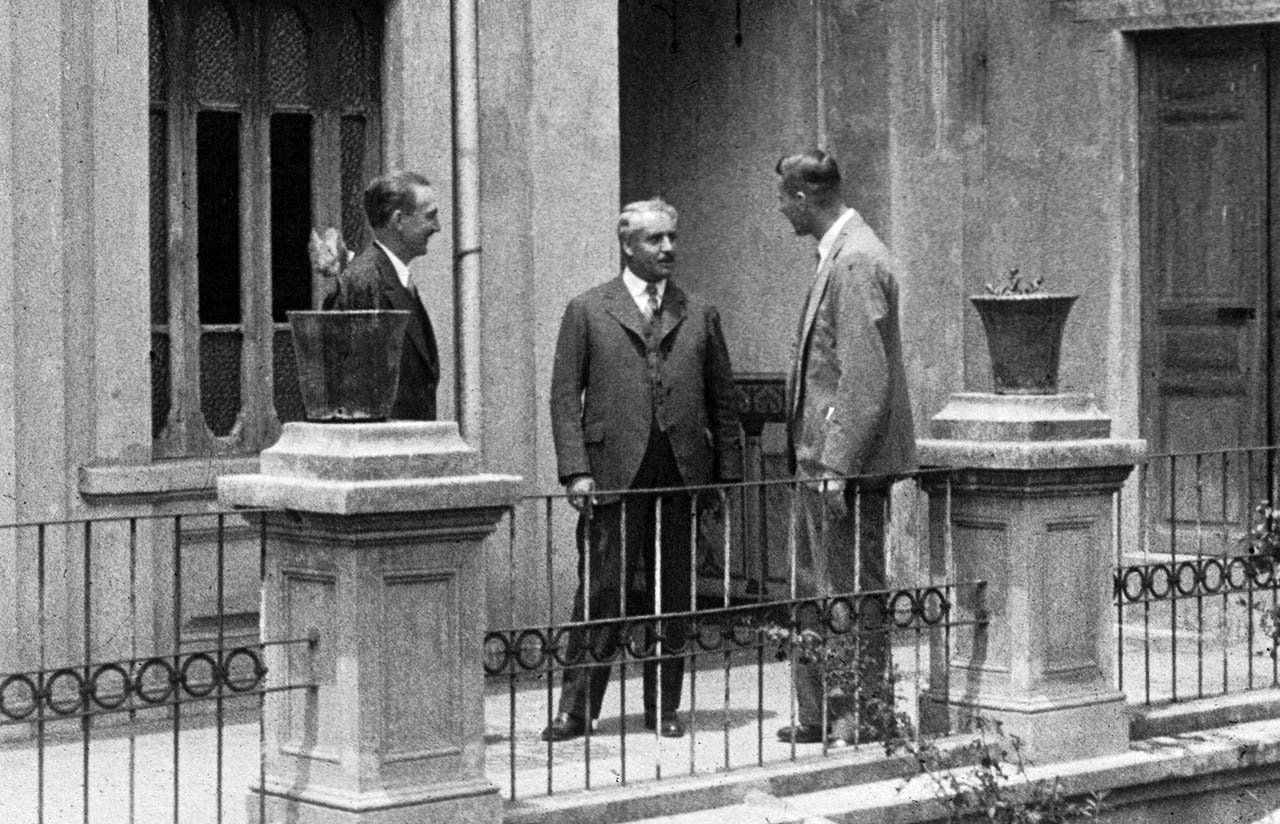 |
Stuart Clark, Reuben Larson and Luis Calisto, a very influential and well-connected Ecuadorian lawyer, then set about the task of getting government permission for the evangelical and cultural radio station. This was not a simple task as there were no radio stations in Ecuador and the government had not yet established any laws governing radio.
With God's help, the proposed contract gathered signatures and seals of approval as it traveled all the way to President Isidro Ayora’s office. However President Ayora was reluctant to approve the contract for a Protestant radio station and so he sent it back unsigned.
The Deputy Secretary for Public Education and Wireless Communications in Ecuador was Dr. Carlos Andrade Marín, who was enthusiastic about the possibility of Ecuador’s first radio station. Undaunted, Dr. Carlos Andrade Marín placed the proposed contract back on top of the documents to be sent to the president to sign. This continued several times until the president finally signed the document. Ecuador’s congress then ratified the contract in August of 1930.
Meanwhile Clarence Jones was finding it difficult to raise funds for the station, since the United States was in the midst of the Great Depression.
Clarence traveled to Ecuador in October of 1930 to finalize documents and find a location for the station. Clarence had no sooner gotten off the boat when he met commercial radio experts who described Ecuador as being a radio desert. As far as it could be determined, there were only 5 or 6 radio receivers in the entire country. The radio experts told Clarence if he wanted to do radio in the region, he should stay away from the equator, stay away from the mountains and forget Ecuador altogether. Discouraged, Clarence called out to God and he heard Him say, “Come up to this mountain.”
By worldly wisdom, the whole radio station project seemed to be complete foolishness. Yet Clarence was learning to be obedient as he called out to God for wisdom, and God was faithful to show him “great and mighty things.”
So Clarence decided he would trust God over the radio experts and start the radio station in the capital city of Quito, located at 9200 feet, along the Equator and surrounded by the Andes Mountains.
A Radio Desert
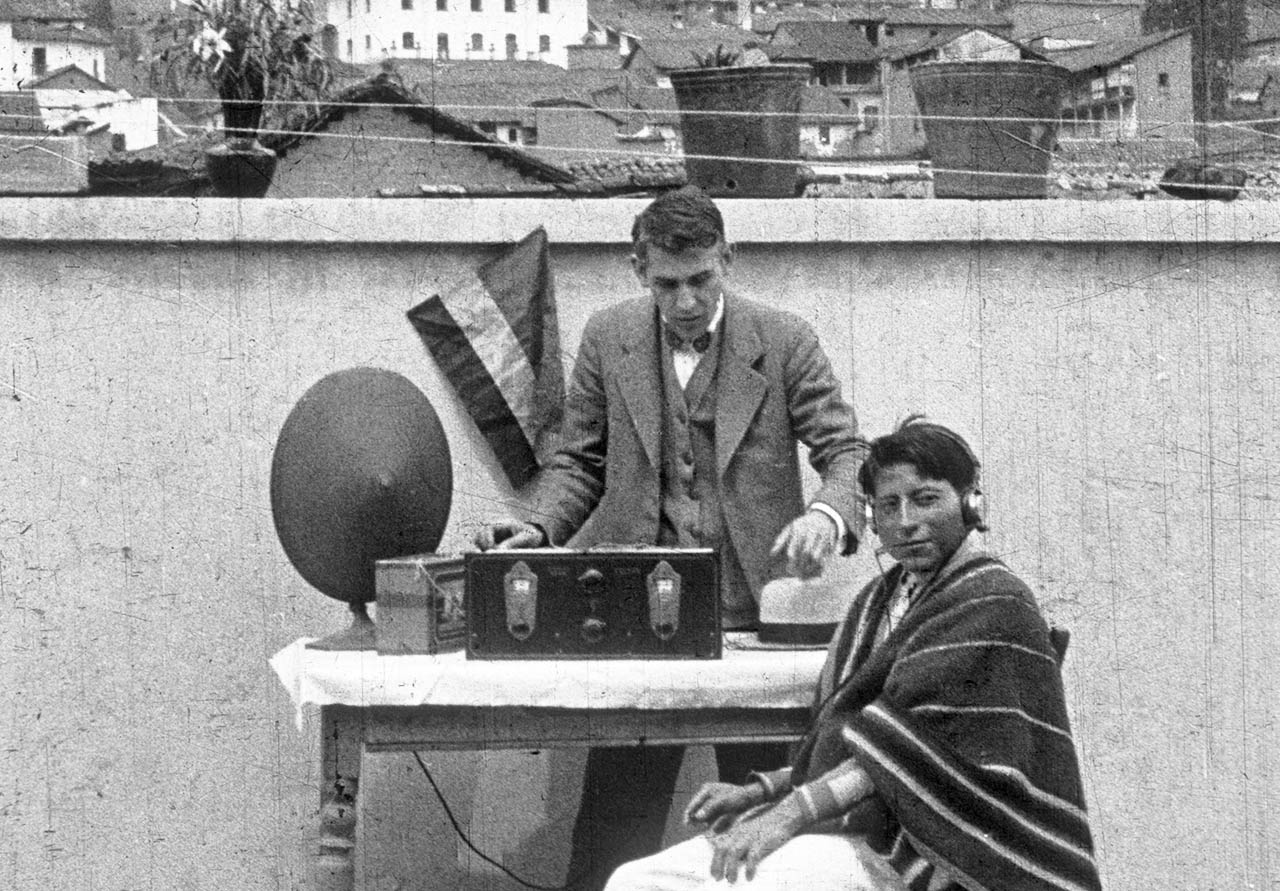 |
Radio was virtually non-existent in Ecuador in 1930. As far as it could be determined, there were only 5 or 6 radio receivers in the entire country. So Clarence Jones arranged for the Reed brothers to import and distribute radios through their stores in Quito and Guayaquil. Jones also sold radios personally through his “Quito Radio Agency”.
HCJB and the Silver Screen
 |
While Clarence Jones was visiting Ecuador in 1930, he used a borrowed movie camera to make what was perhaps the world’s very first missionary film. The movie introduced the diverse people, customs and landscapes of Ecuador, as well as the proposed pioneer missionary radio station to audiences across the United States.
The film also introduced the future radio station’s call letters and slogan:
HCJB - Heralding Christ Jesus Blessings.
Spanish - Hoy Cristo Jesus Bendice (Today Christ Jesus Blesses)
Jungle Pioneers
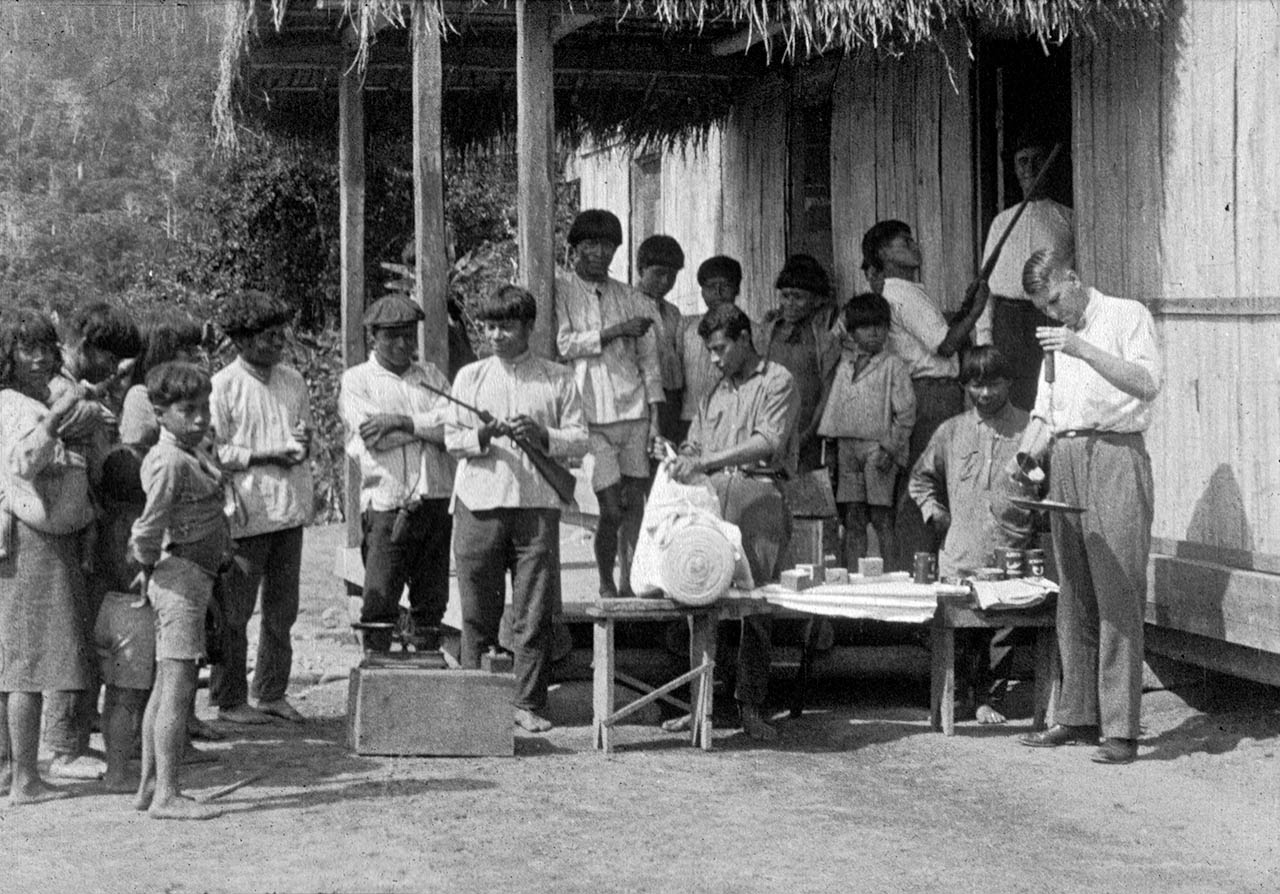 |
Sharing the Gospel in the jungle was difficult for CM&A missionaries Reuben and Grace Larson since the Quichua Indians in the area hid from them. Reuben decided that building a trading post at Dos Rios could bring people right to his doorstep. They also traded matches, machetes and various trinkets for food for their family. As the Larson’s reputation for honesty grew, they bought gold, distributed salt and delivered mail for the Ecuadorian government. Reuben also oversaw the maintenance of trails in the area and the local schools.
Reuben and Grace were integral in the founding and programming of Radio Station HCJB in the early years. The Larsons joined the mission full-time in 1937, where Reuben would serve as co-director with Clarence Jones and also serve as president.
Next: 1931 - The World Radio Missionary Fellowship, Inc.
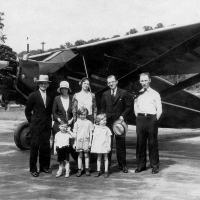

Founding Purpose
The World Radio Missionary Fellowship, Inc. was originally incorporated in Ohio on May 9th, 1931:
"This pioneer missionary organization is interdenominational in character, evangelistic in purpose and fellowship, world-wide in scope."
Howard Jones - Vice-President
Ruth Churchill - Sec/Treasurer
Katherine Jones
Lance Latham
Early Newsletters
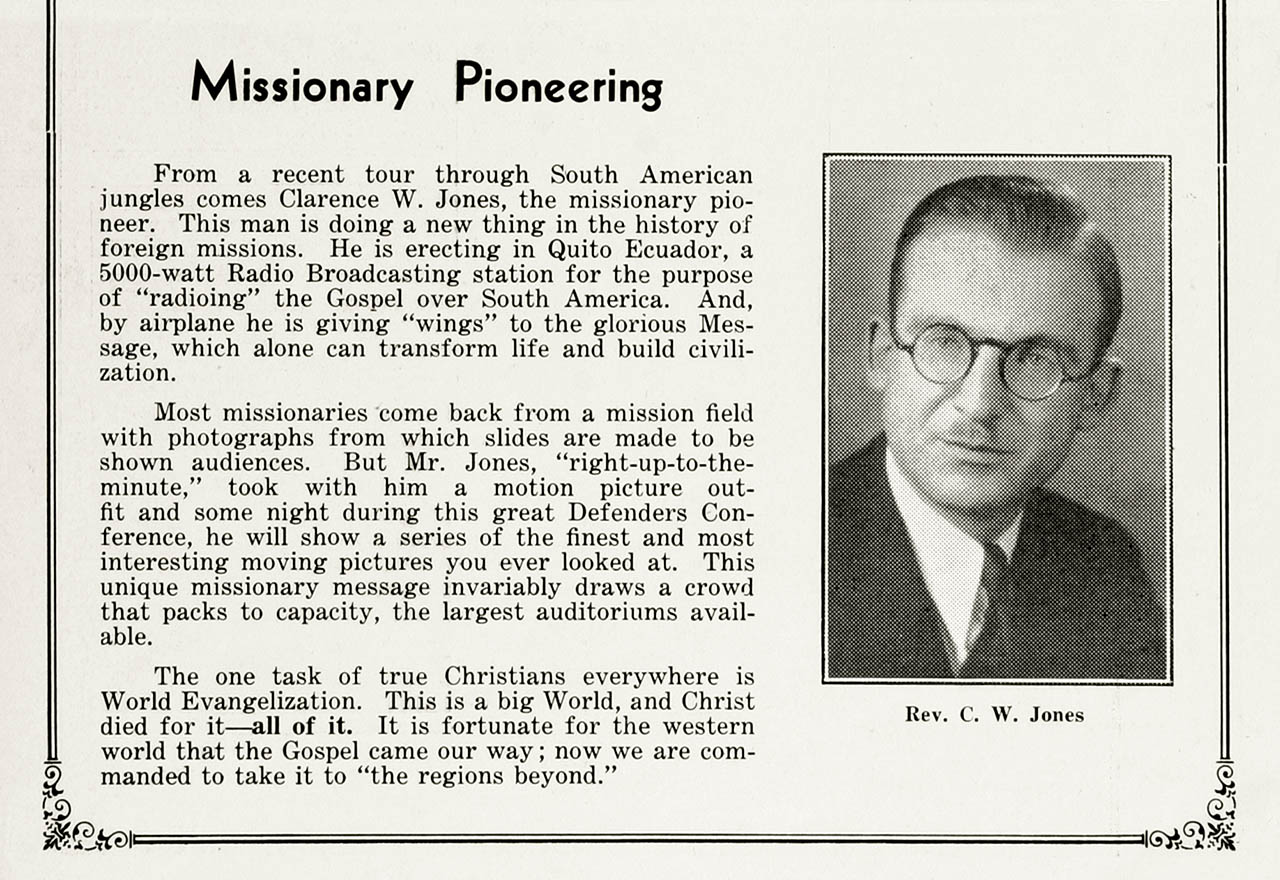
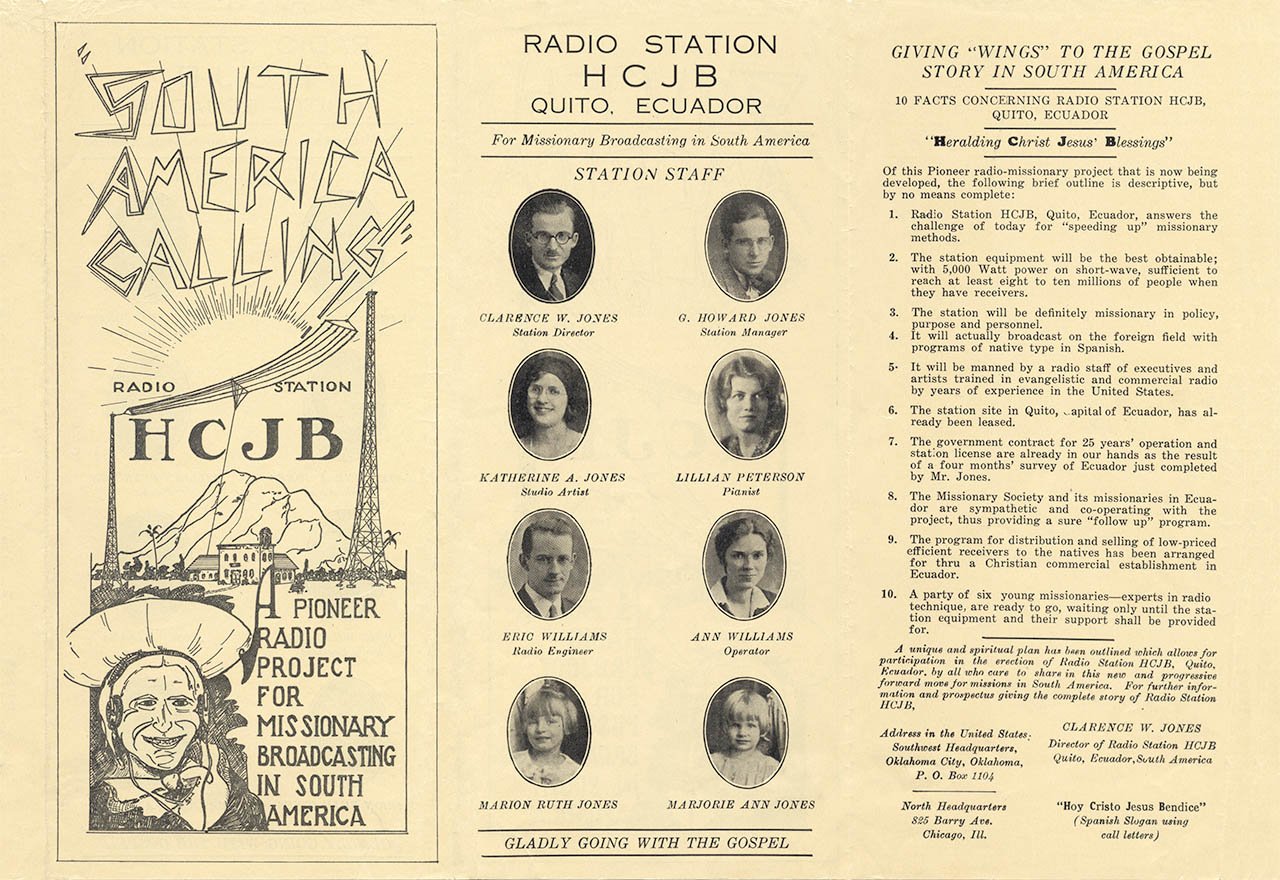
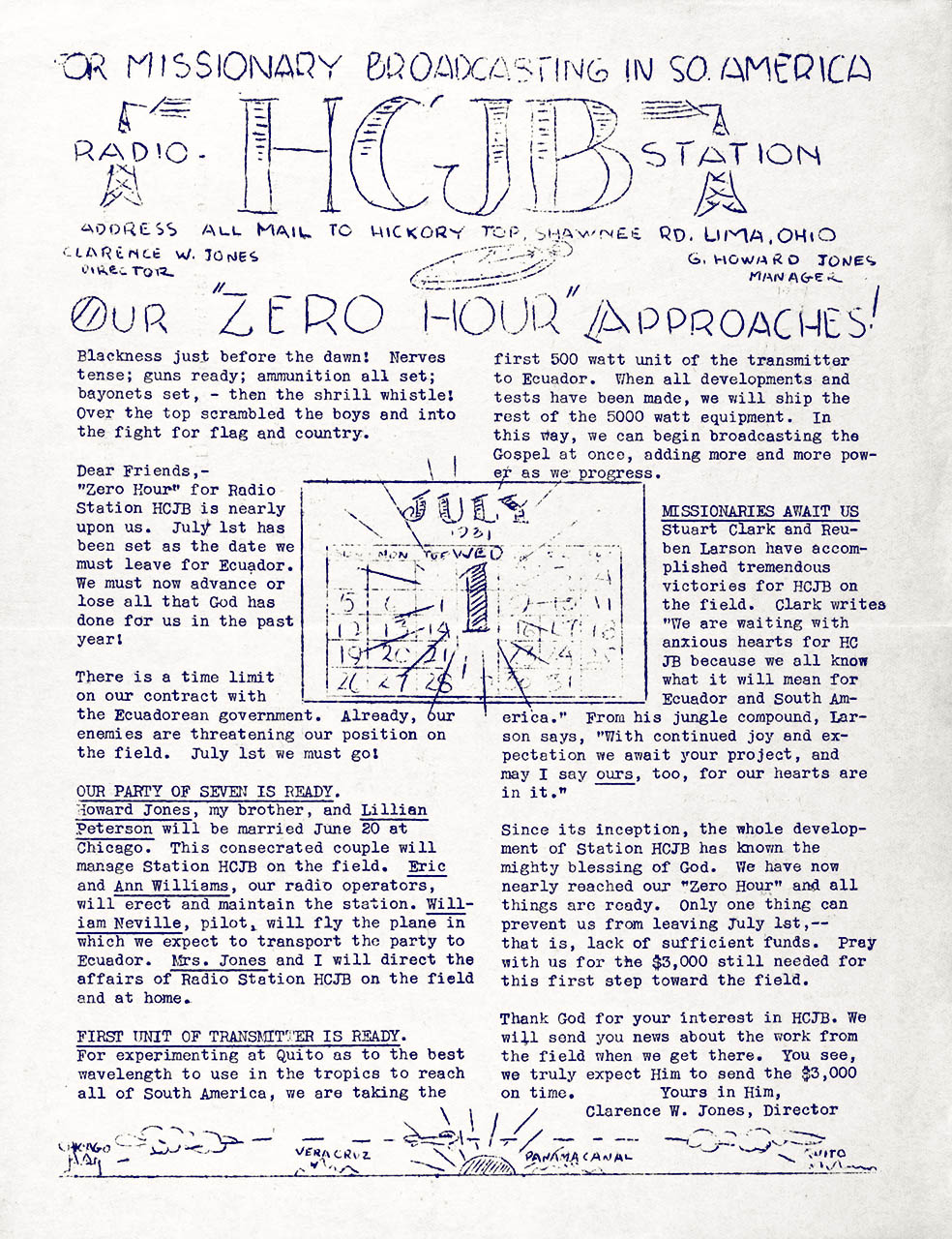
The Plane, The Plane
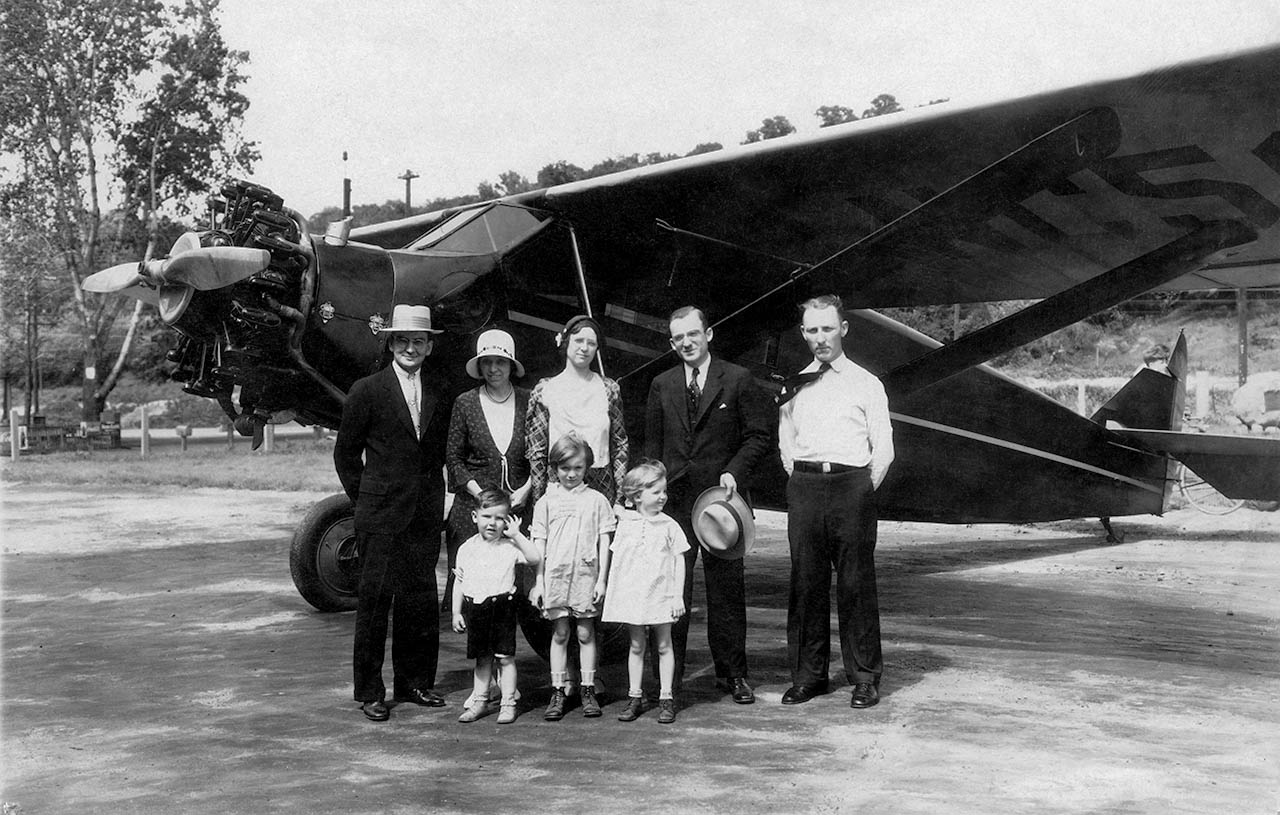 |
Why spend nine days slogging through the Ecuadorian jungle when you could fly there in less than hour? That was the question Clarence asked during his trip to Ecuador in 1930. Clarence borrowed $2500 to buy a used Stinson Airplane in 1931. He planned to use the plane to take his team to Ecuador.
Traveling by plane would not only help them avoid the long and more expensive boat passage, but then they could use it to pioneer missionary aviation in the region. Unfortunately Clarence loaned the plane to a friend for a trip and it crashed near Wheaton, IL.
In some ways, the crash was perhaps fortunate even though it severely strained Clarence financially. With 7 people and extra fuel, the plane undoubtedly would have been overloaded--making the journey even more risky with the pilot inexperienced in dealing with unpredictable tropical weather, jungle terrain and the Andes Mountains.
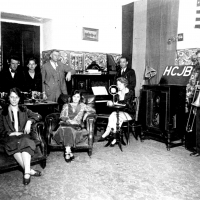

Starting a pioneer missionary radio organization in the midst of the "Great Depression" was a giant leap of faith.
Clarence had tremendous vision, but virtually zero would go as he expected. Clarence planned that his party of seven would leave July 1st, 1931 flying in the mission's own plane. It would be just three; Clarence Jones, Eric and Ann Williams who traveled by boat in late August to set up the station.
Katherine Jones was expecting their third child, so on the advice of her doctor, she stayed behind.
Clarence had planned to start HCJB with a 5,000-watt commercial transmitter from the finest manufacturer, instead he got what he could afford, a 200-watt transmitter built by former CBS engineer Eric Williams in his garage. It would be nearly 10 years before HCJB would have high-powered transmitter.
Can You Think of a Better Place?
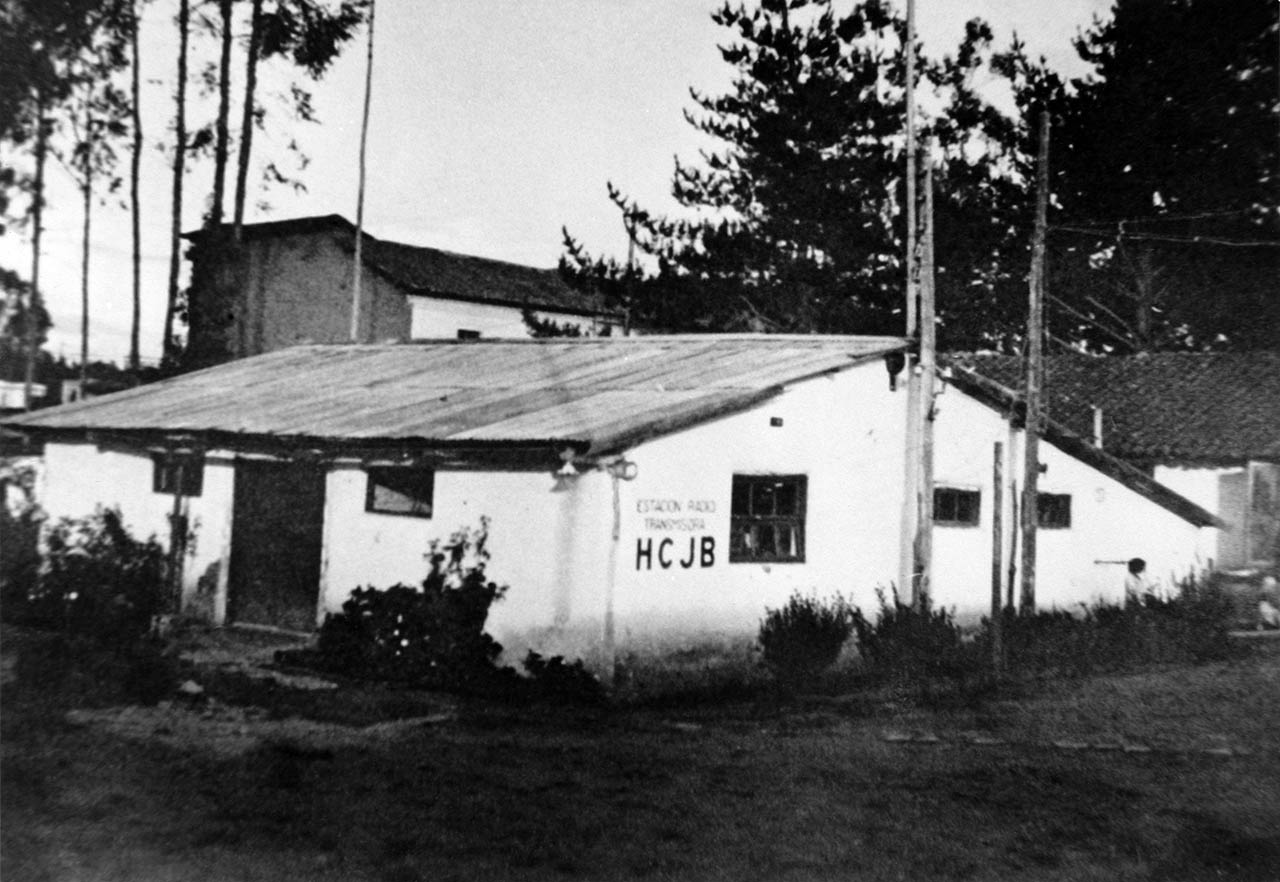 |
Radio station HCJB had a humble beginning. Money was tight and Clarence had to be resourceful. They needed a suitable place for the transmitter and for a workshop.
On the Quinta Corston property was an old sheep shed that consisted of little more than two mud walls and a thatched roof. Jones and his helpers closed in the open walls, added windows, poured a concrete floor, put on a tin roof and whitewashed the whole building.
Clarence told of a time when finances were so tight that he literally had no money to pay the $6.15 electric bill. The bank holding all of the Chicago Gospel Tabernacle's funds had folded. He went to transmitter building to pray and talk to God. As he looked around what had once been a sheep shed and the humbleness of it all, he thought about the successful radio ministry he had left in Chicago and the 5,000 people they had been ministering to each week at the Chicago Gospel Tabernacle. Was this all a mistake? Discouraged, Clarence cried out to God and God answered, “Can you think of a better place to broadcast about the Lamb of God than from a sheep shed?” God reminded Clarence again of Jeremiah 3:33, "Call unto me and I answer you and show you great and mighty things which you do not know."
In what can only be described as God's timing, God led missionary Stuart Clark to stop by, and upon hearing of the need, advanced Clarence the funds needed to pay the electric bill.
From that moment on, Clarence had no doubt that God was in this new missionary endeavor.
The Workshop
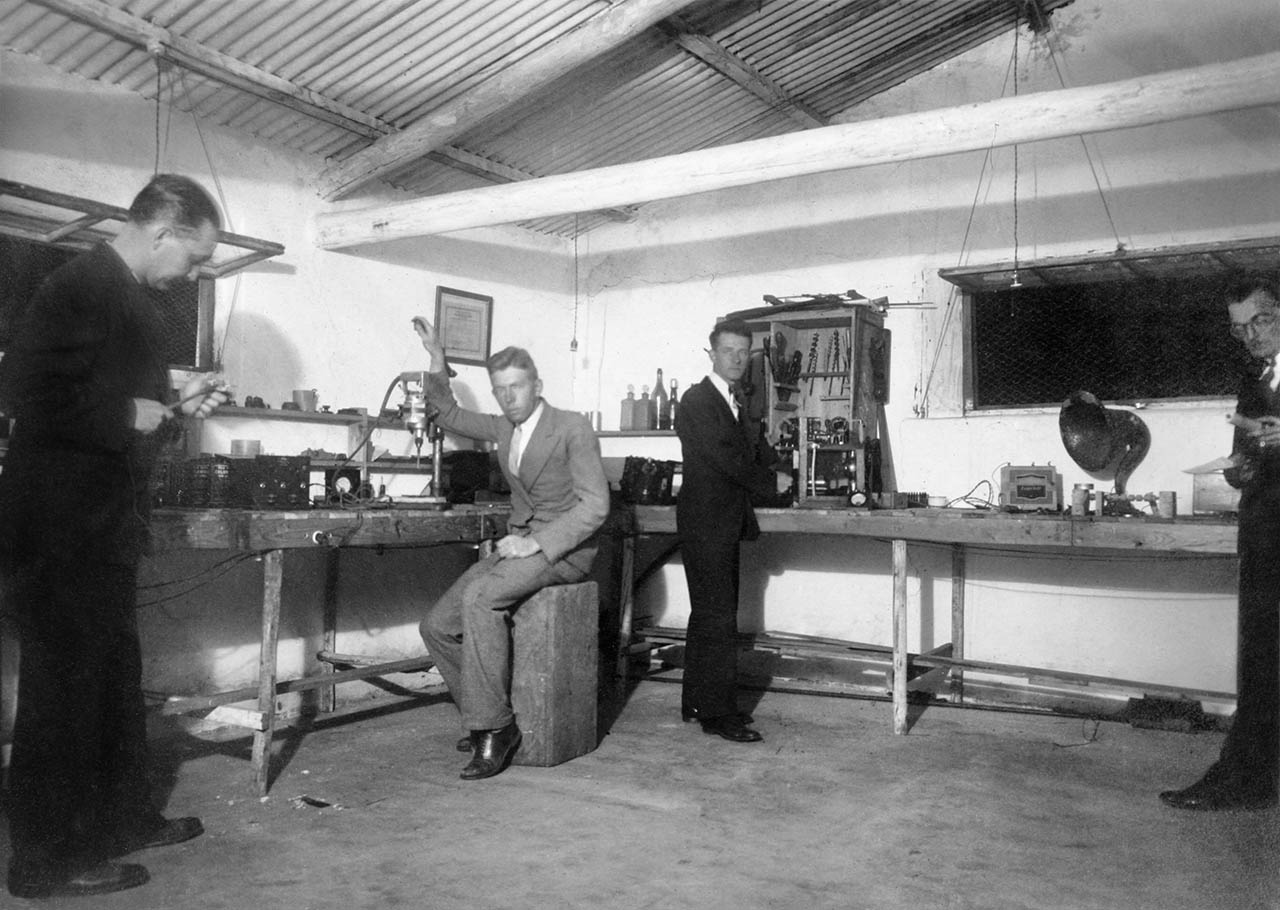 |
The sheep shed not only housed the station’s transmitter but also included a workshop where they hoped to build and repair radios.
With perhaps just 5 or 6 radios in the country when he arrived, Clarence figured there was enormous potential to sell radios to generate monies that he desperately needed to fund the station.
Clarence started the Quito Radio Agency to manufacture and distribute radios. He also arranged to sell the finest radios made at the time (by E.H. Scott), to wealthy land and business owners throughout Ecuador.
For One Sucre
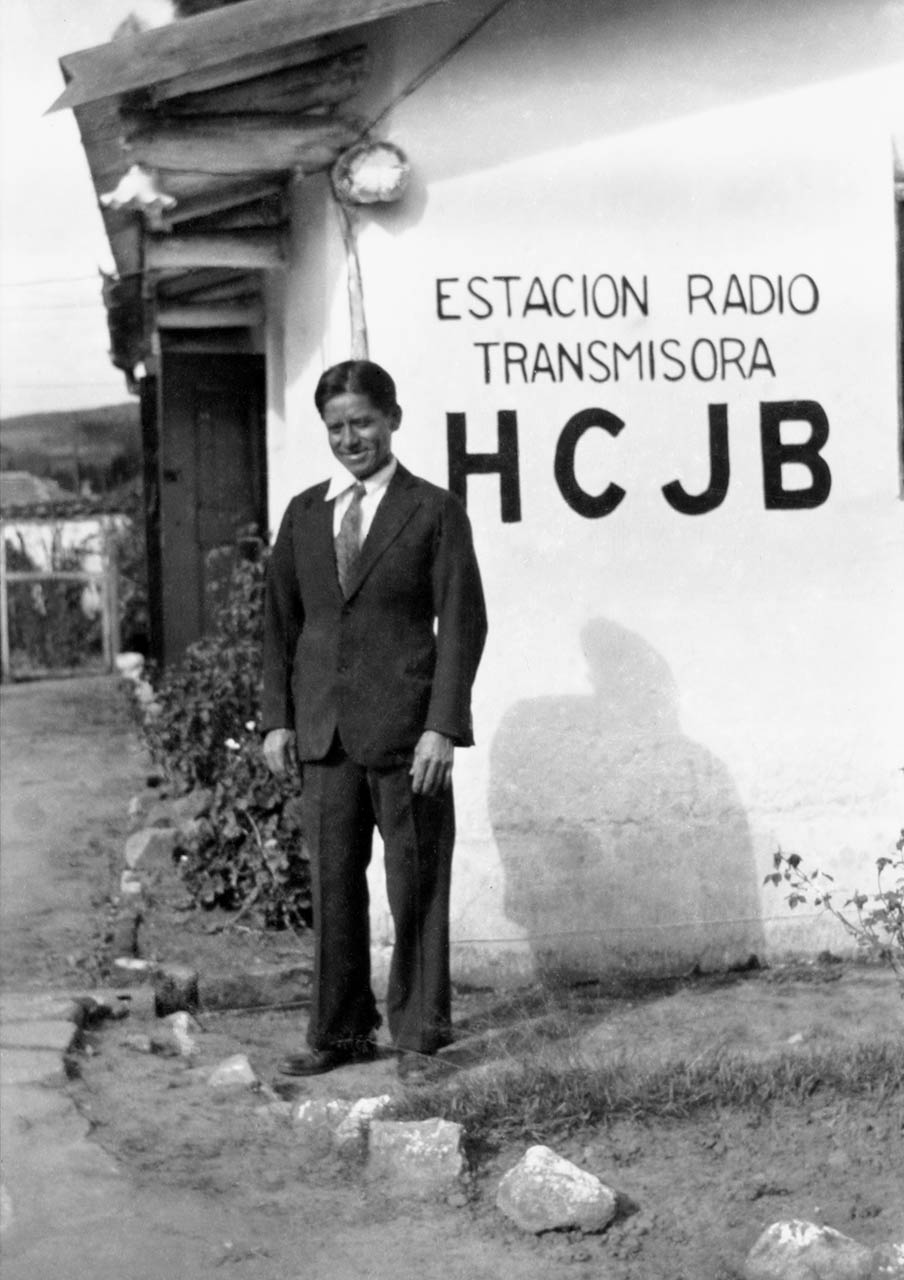 |
Clarence had envisioned the station with two stately steel towers supporting the antenna, and he drew this out in his early letters and logos. The reality was much more humble.
Clarence called the Quito Electric company and asked for the longest poles they had. Two 85 ft. poles arrived at Quinta Corston. Holes were dug 200 feet apart, pulleys attached to the top and the poles hastily put into place. Jones and Williams soon realized however that in their haste to raise the poles, they had not strung rope or anything through the pulleys, so they could raise the antenna to the top.
For one Sucre, (essentially a silver dollar) the gardener's son Pedro placed a rope between his teeth and shimmied up to the top of each pole. Pedro threaded the rope through the pulleys, which allowed them to lift the simple wire antenna into place.
More Than a Home
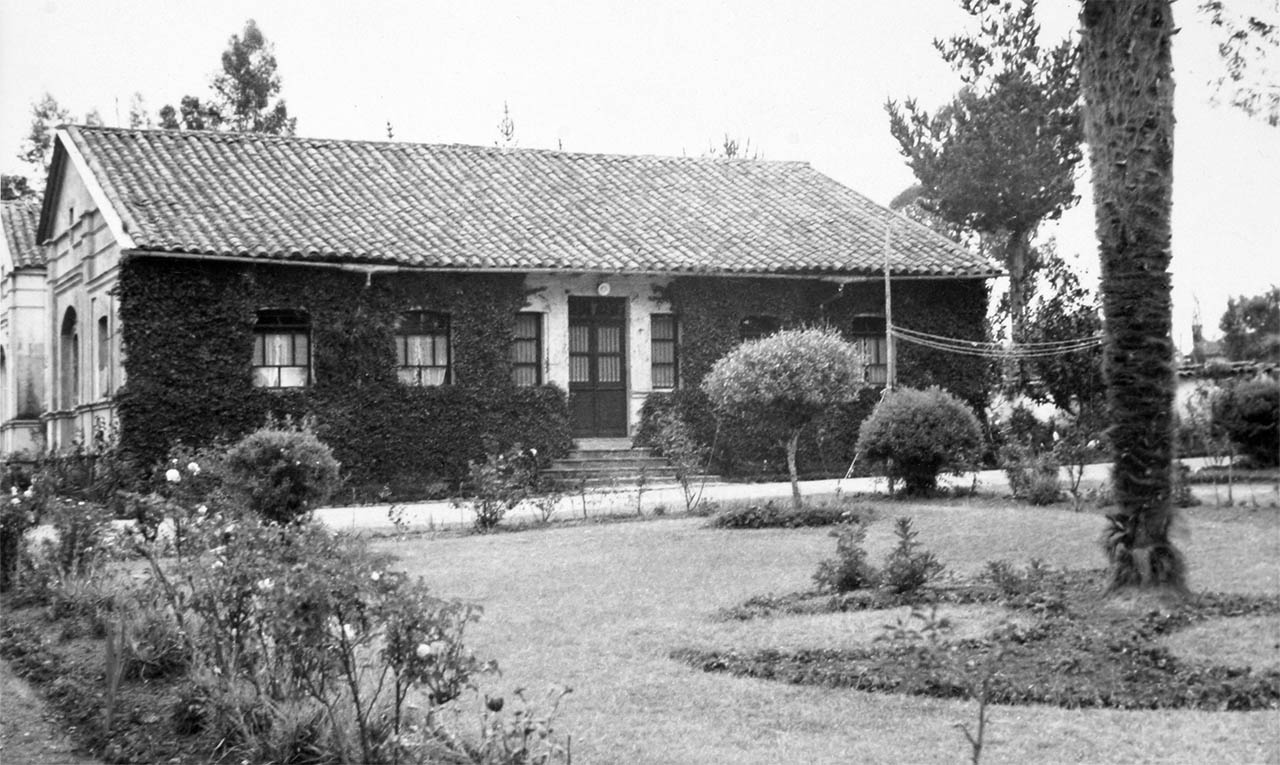 |
On the Quinta Corston property was an ivy covered “cottage” built by the former Scottish owner. The Jones’ shared their home with other staff and it was frequently crowded with guests.
The formal sitting room was used as the original HCJB radio studio. The adjoining enclosed porch was converted into the control. They cut an opening through the thick adobe wall and installed a single pane of glass to make it more soundproof.
The studio controls consisted initially of two simple switches, one for the record player and one for the single carbon microphone.
The First Program
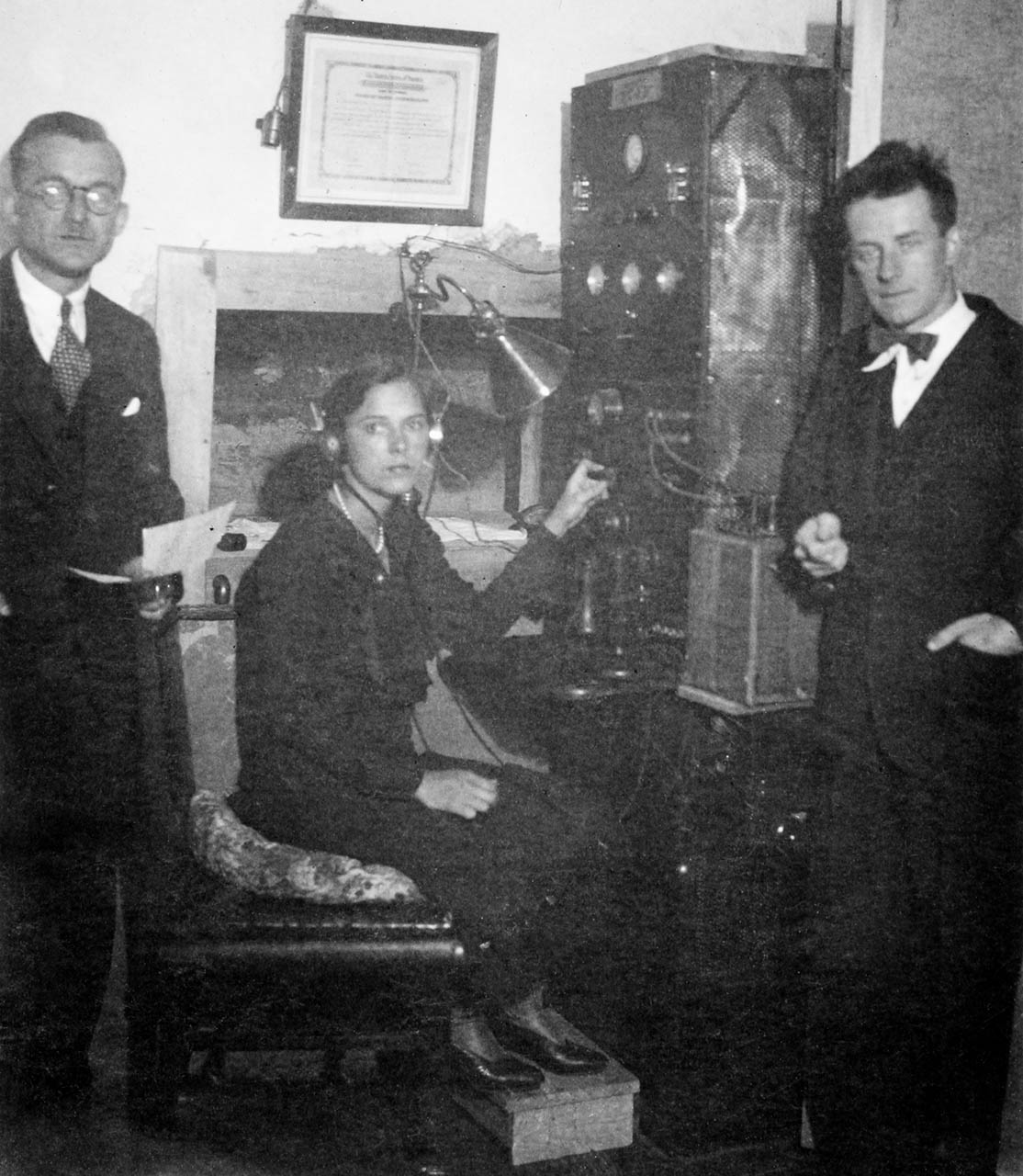 |
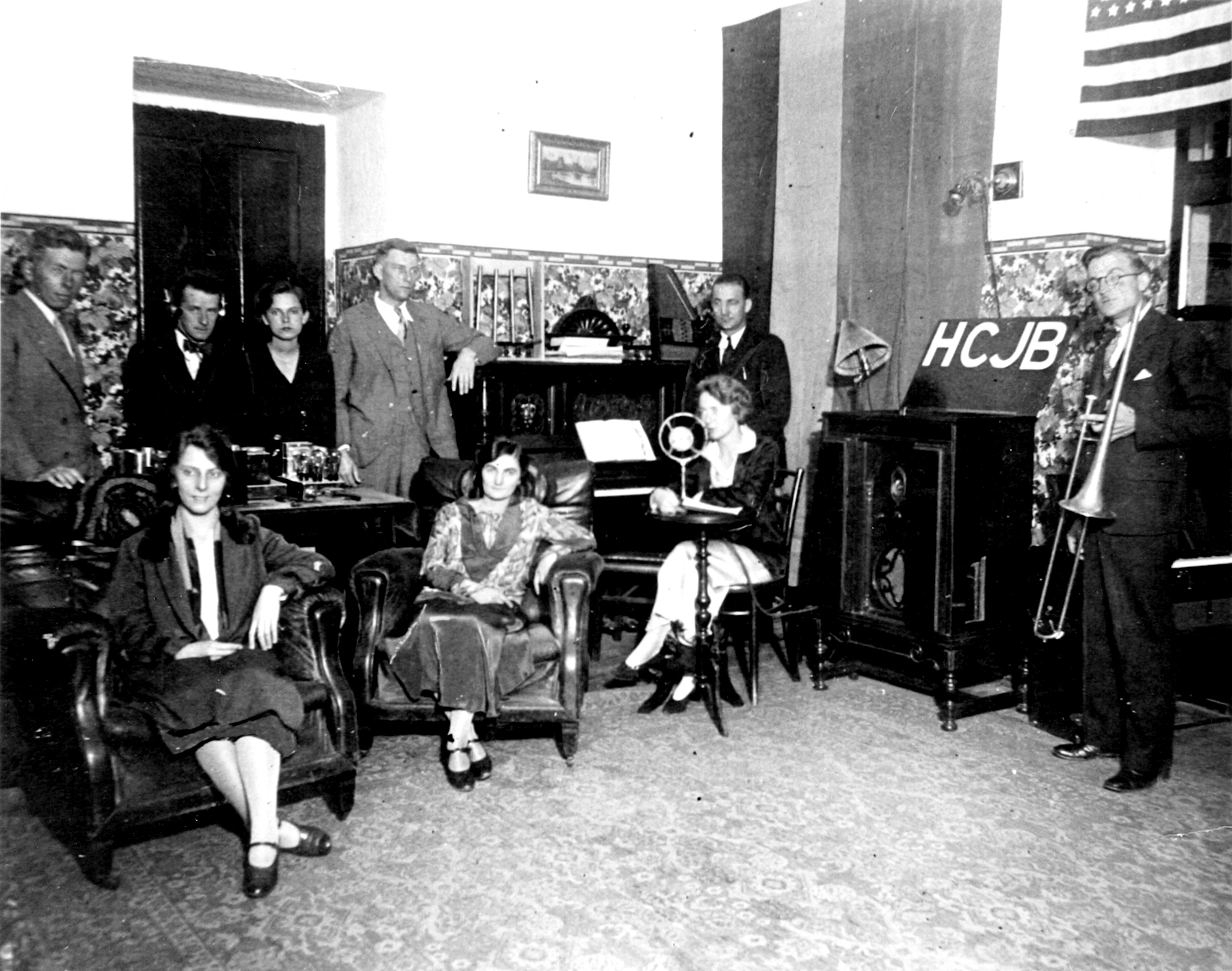 |
December 25, 1931 was a special day in Quito, Ecuador as all of the missionaries (16) along with their children (18) came to “La Quinta Corston” to celebrate Jesus' birth. They had a dinner with two turkeys and two chickens with all of the fixings. They played games and then had a prayer service to end their day together.
That evening a smaller group gathered in the Jones’ sitting room radio studio for a Christmas night program. Edna Figg sang "Great is thy Faithfulness", they sang some Christmas carols in English, had a few solos, Clarence played the trombone and then Stuart Clark gave a short message in English, and Reuben Larson gave the first Spanish message. Together these people launched the first program on Radio Station HCJB.
Both of these Christmas day events, although centuries apart, had humble beginnings. Yet both had the same purpose: to proclaim to the world that Jesus is the Savior.
Writing Home
Because Catherine Jones was expecting, she stayed in Chicago while Clarence and Eric & Ann Williams traveled to Ecuador to set up the station in August, 1931.
Clarence wrote frequent letters home giving rich details of the joys and frustrations of starting a pioneer radio ministry. Clarence also wrote expressing his love and longing for his family to be together once again. This letter written on Dec 30th, 1931 gives details about the Christmas celebration, the first Christmas program and being on and off the air that first week.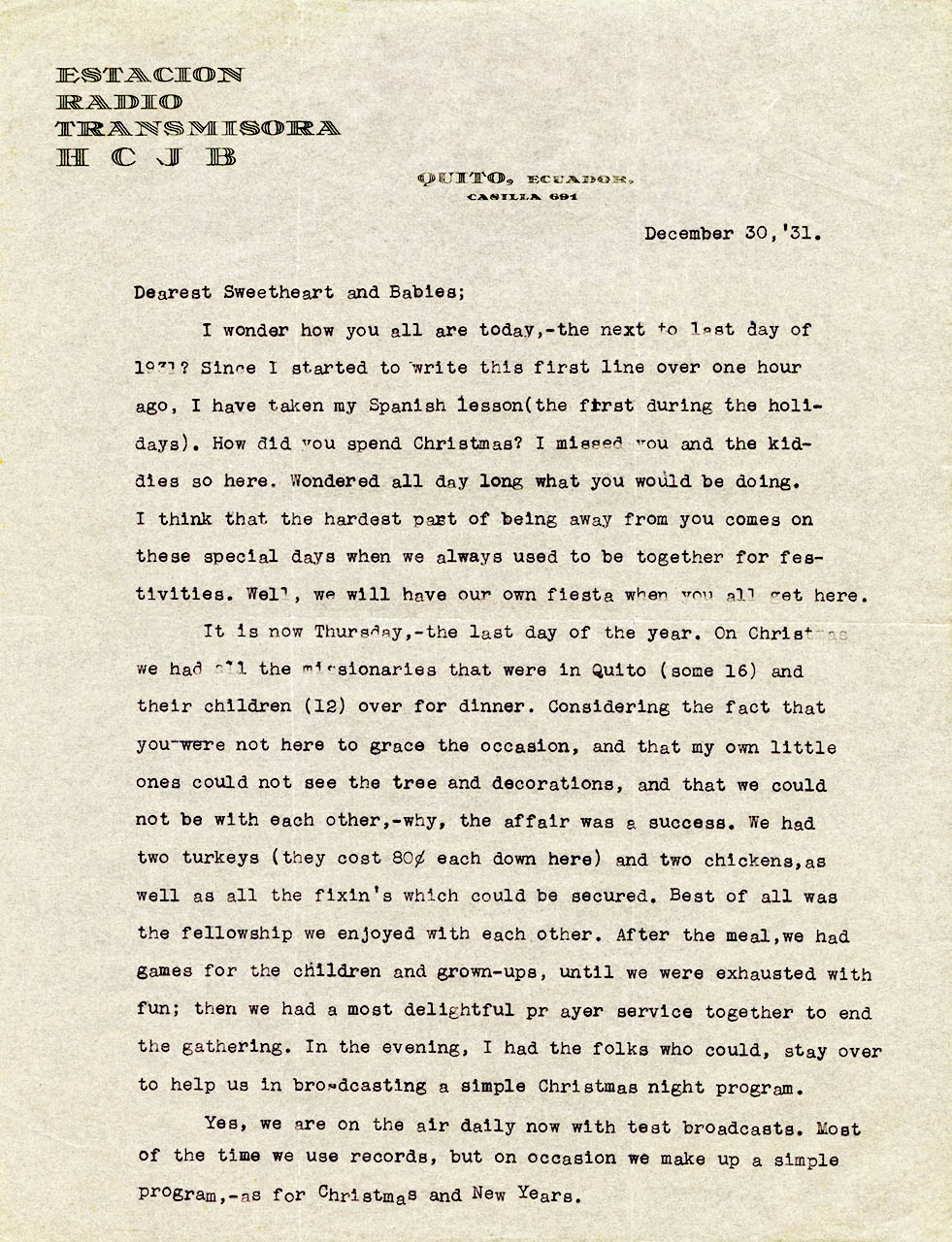
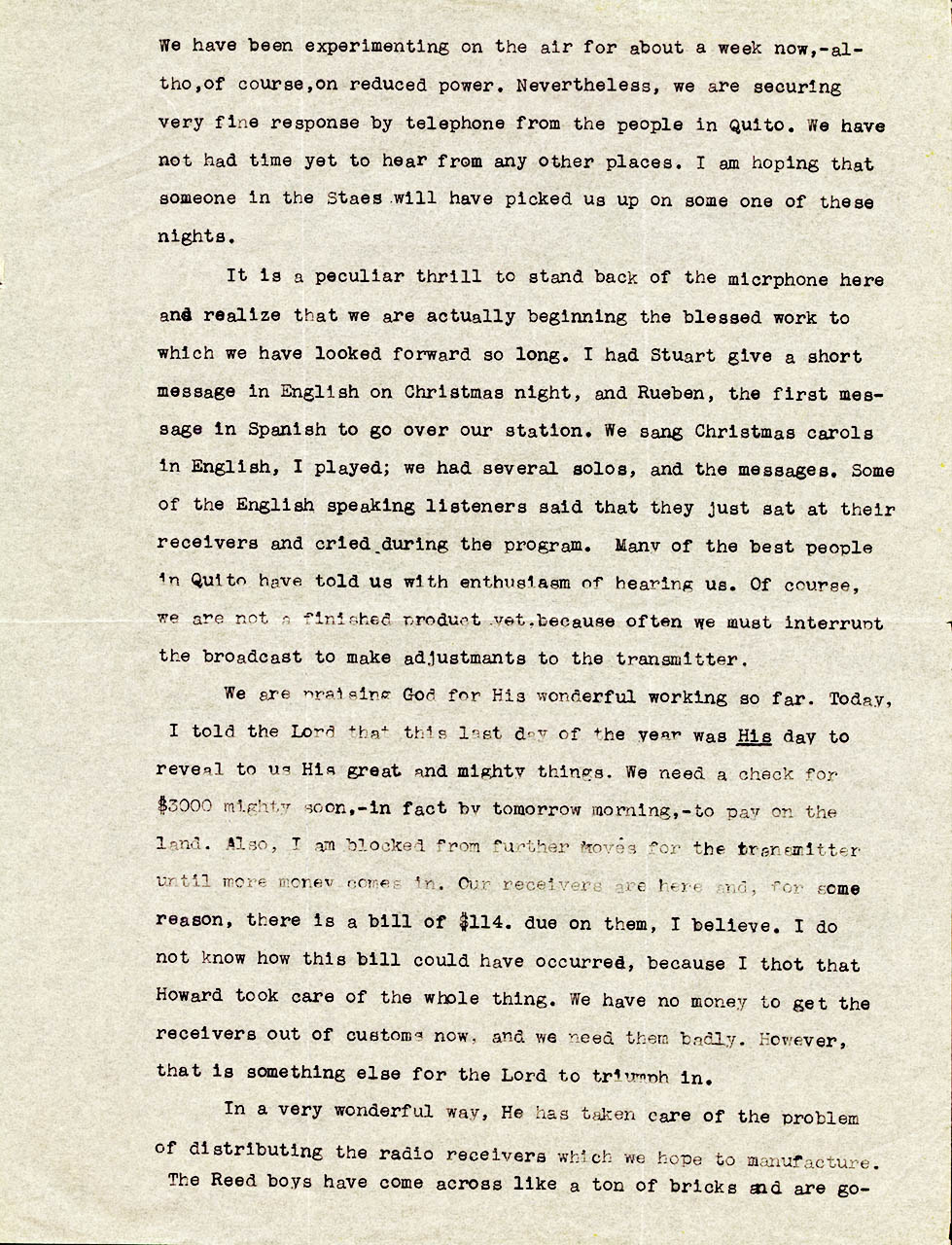
Next: 1932 - The Voice of Quito and the Whisper of the Andes
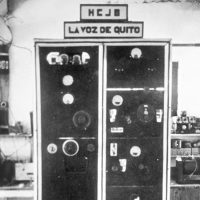

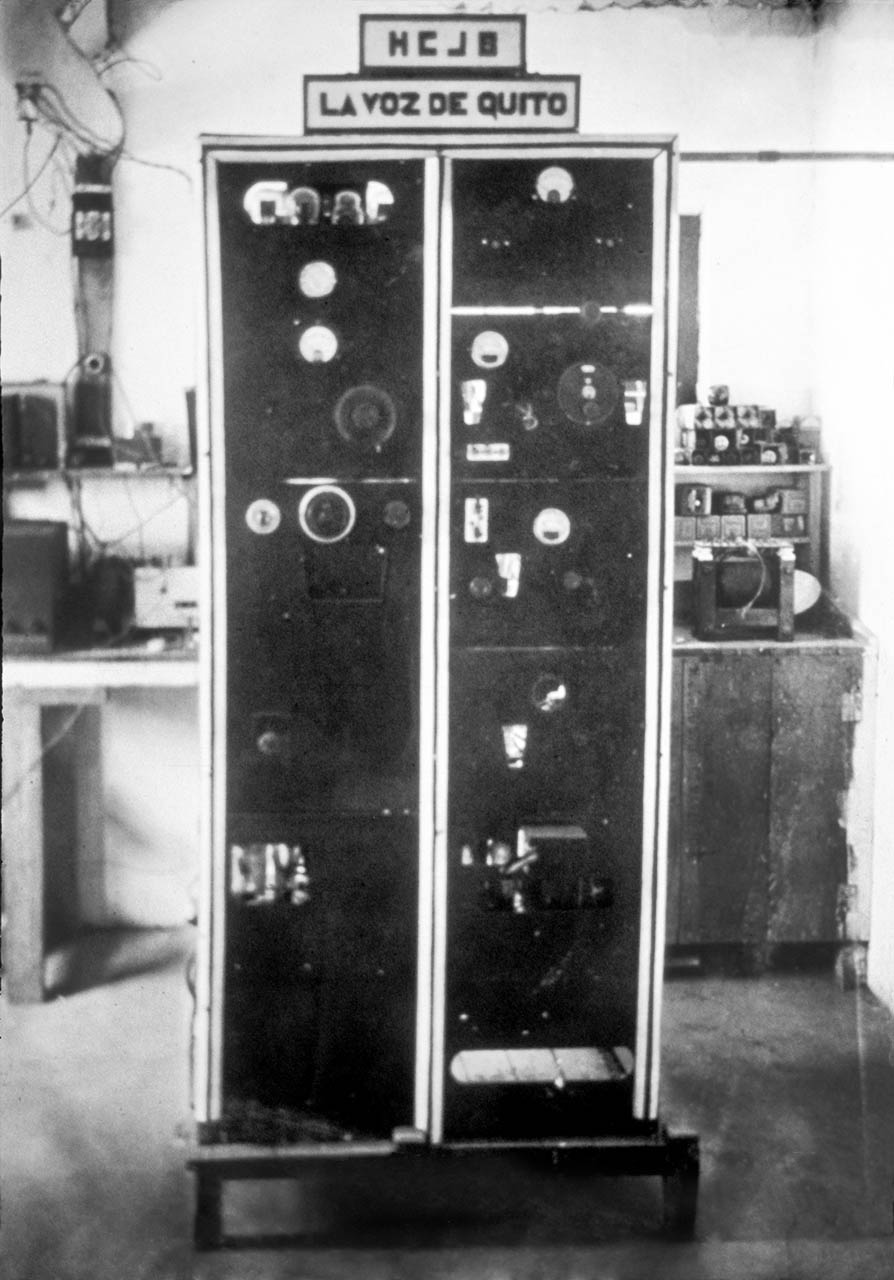 |
The Whisper of the Andes
HCJB is well known as being the Voice of the Andes. But Clarence Jones recalled how the station probably should have initially been called "The Whisper of the Andes" as it barely had more power than a couple of lightbulbs.
Clarence had ambitious plans to use a commercial 5,000-watt transmitter built by Marconi or RCA, but he couldn’t raise enough funds to buy one. Instead HCJB had a transmitter built by former CBS Engineer Eric William in his garage that would allow them to test different frequencies. The transmitter would be rebuilt in an attempt to gain more power and be more reliable. Dubbed “the Voice of Quito”, the transmitter had an effective power of between 200 and 400 Watts.
It had taken nearly four months to get the station and the tiny 200-watt transmitter operational. Amazingly HCJB’s signal could often be picked up at night in far away places including Chicago, New Zealand and even Europe.
HCJB’s first official broadcast almost didn’t happen…
The day before HCJB’s first official scheduled broadcast on Feb 23, 1932, which was to include American diplomats and high-level Ecuadorian government officials, the main power tube burnt out and they had no spares left. Clarence drove to Riobamba to see if Carlos Córdovez might have what they needed. Córdovez graciously gave Jones a replacement tube from his own transmitter, allowing HCJB’s first official broadcast to happen as planned.
Working Together
|
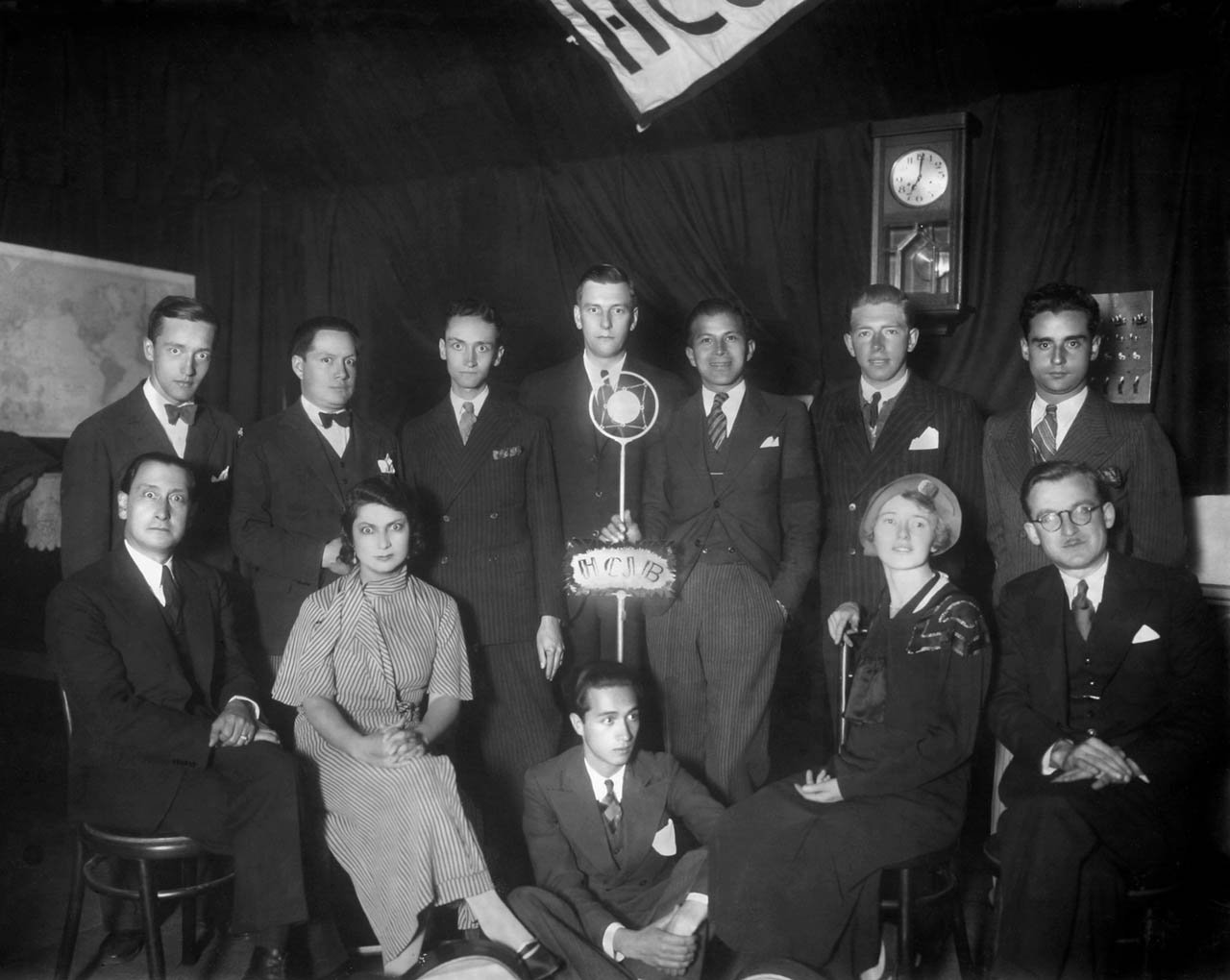 |
During the early years, Radio Station HCJB was largely operated by Ecuadorian staff.
Missionaries serving in Ecuador like Stuart Clark (at microphone) and Grace Larson (seated on right) helped present the Gospel message. However with departure of the Williams, the station's only full-time missionaries were Clarence (seated far right) and Katherine Jones.
Francisco Cruz (seated far left) was one of the first Ecuadorians to join Radio HCJB. Cruz served as the station manager for many years. Announcers Raul Cedeño and Luis Fernando Ayora became familiar voices to listeners. Local musicians and singers were an integral part of HCJB programming. Engineer Victoriano Salvador had the essential task of keeping the station on the air. (standing third from left)
Orquestra Vozandes
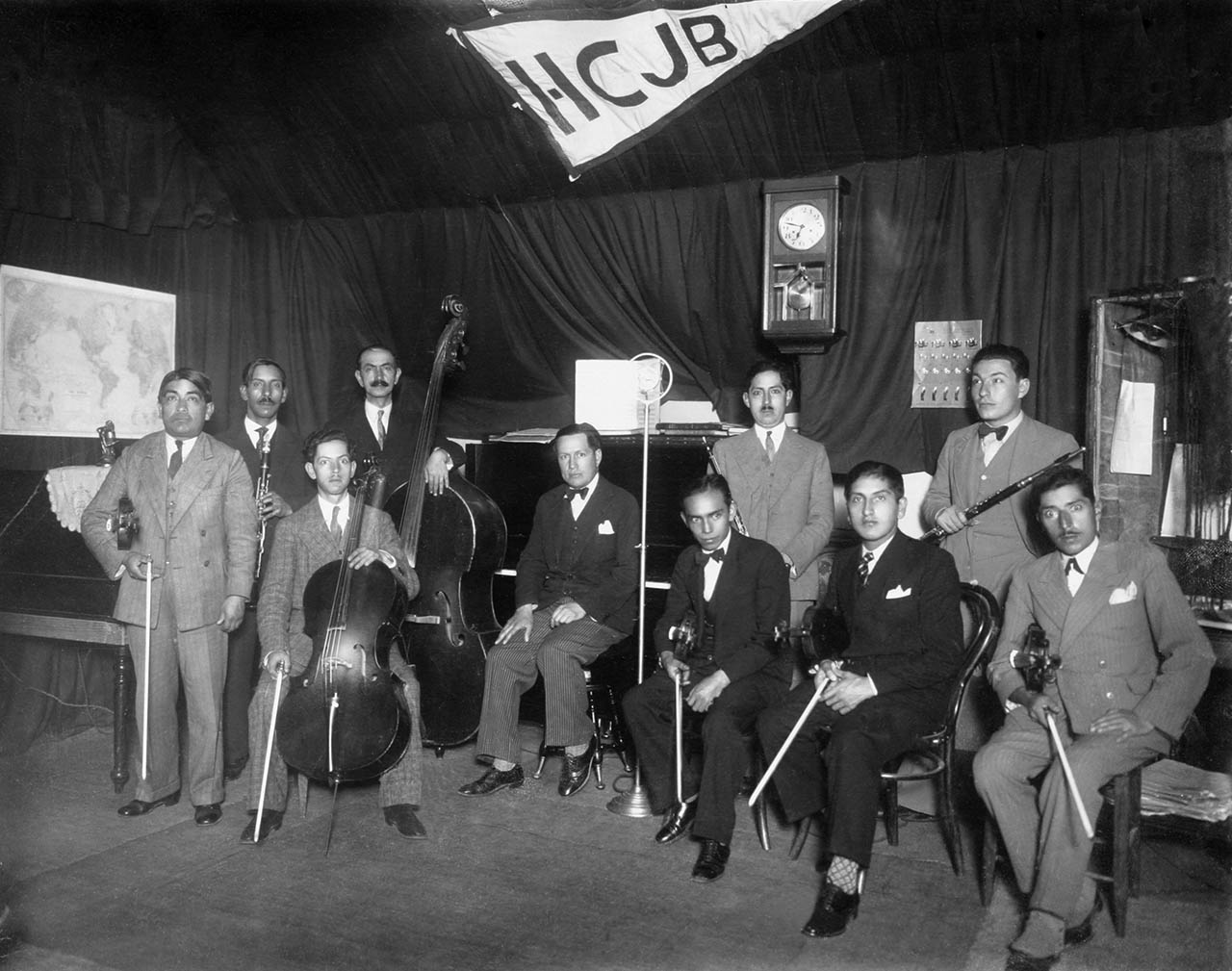 |
When HCJB began in 1931 there were no tape recorders. Virtually all of the station’s programming was done live. Clarence contracted the best local musicians to form “la Orquestra Vozandes.” (the Vozandes Orchestra)
Clarence had a deep appreciation for classical music. He had taken classes at the American Conservatory in Chicago and even played on occasion with the prestigious Chicago Symphony at Orchestra hall.
Clarence realized that the radio station needed to provide a wide variety of musical programming. Composers from all over Ecuador sent new sheet music to HCJB for its musical staff to perform on the air. Local groups were invited to the station to perform traditional Ecuadorian music. In the following years, HCJB recorded many of these sessions, creating an extensive archive that helped both promote and preserve Ecuador’s musical heritage. 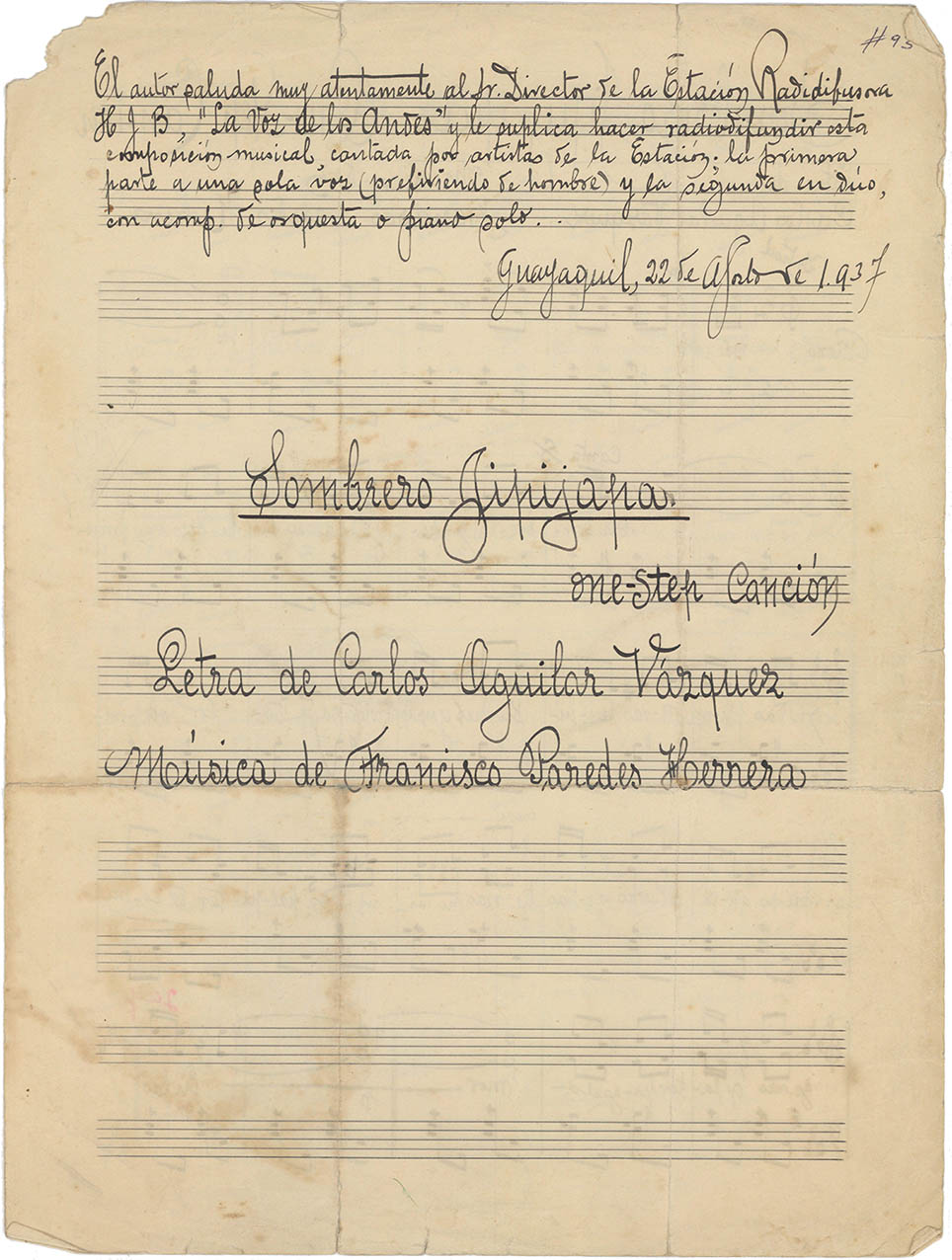
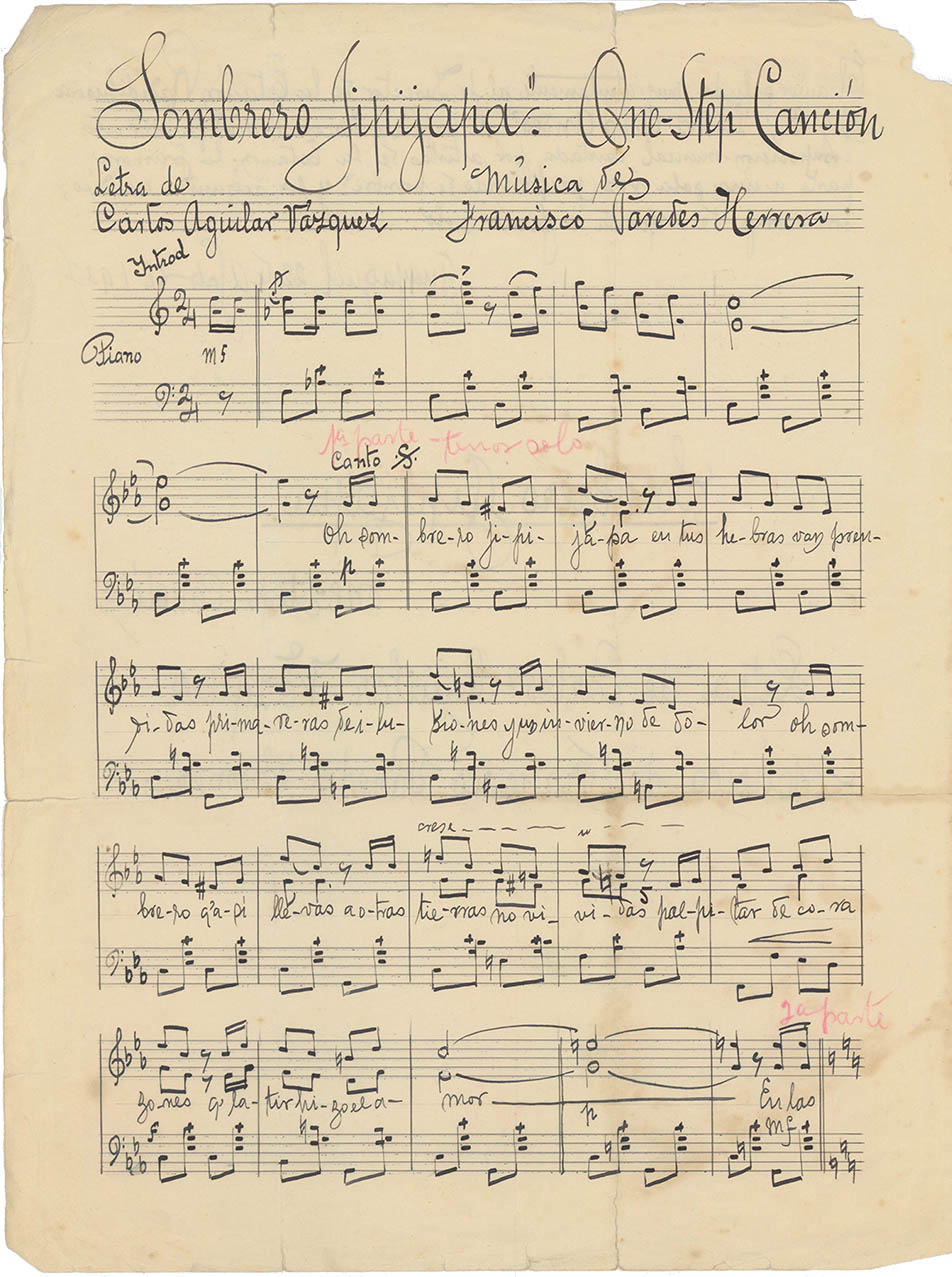
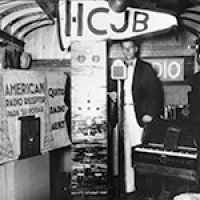

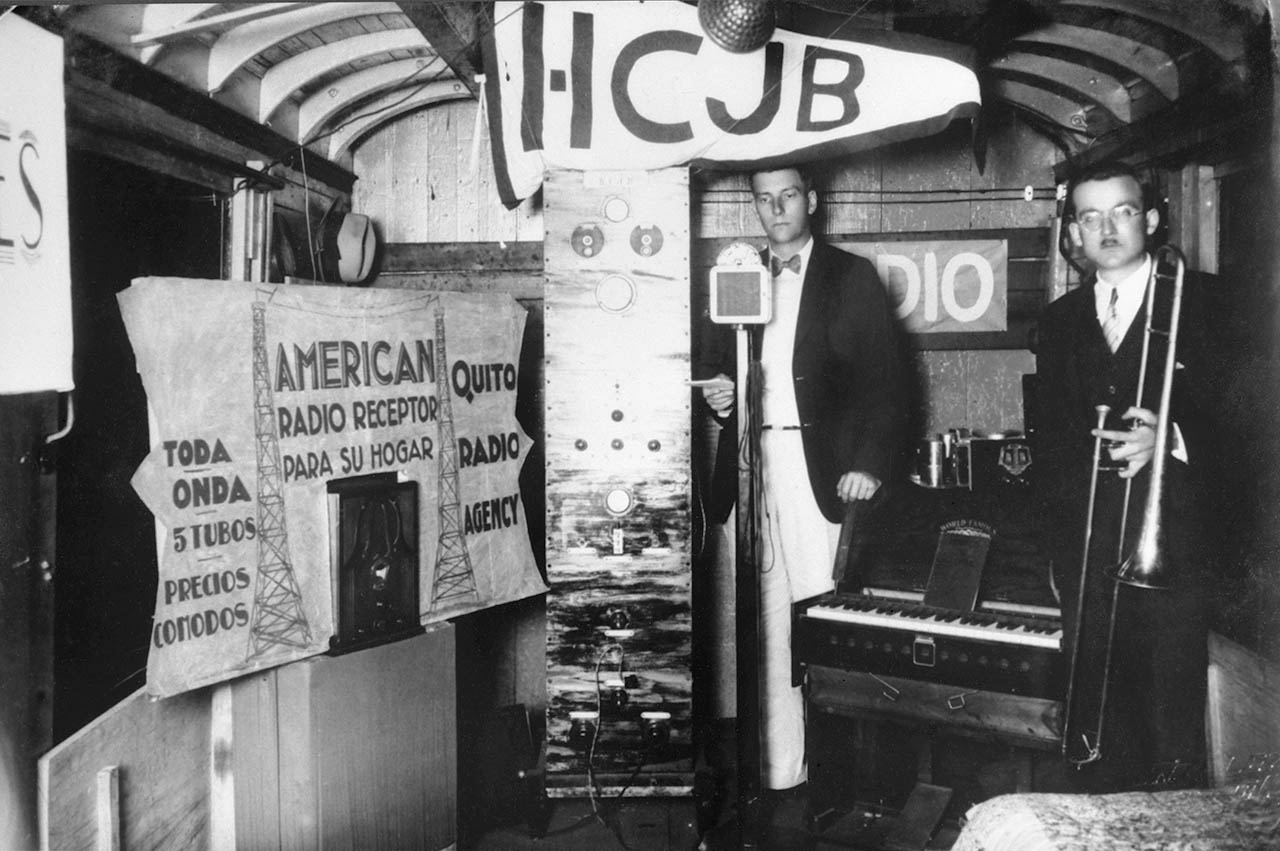 |
In 1933, Radio Station HCJB joined the “Silver Anniversary Exposition Train” commemorating the 25th anniversary of the completion of “the world’s most difficult railroad.”
For two months, the train traveled from Quito to Guayaquil showcasing Ecuador’s agriculture, industry, and commerce.
A specially built HCJB transmitter and loud speaker system aired speeches by dignitaries and live music by Clarence Jones on the trombone, as well as recorded music. Few people along that route had ever seen a radio.
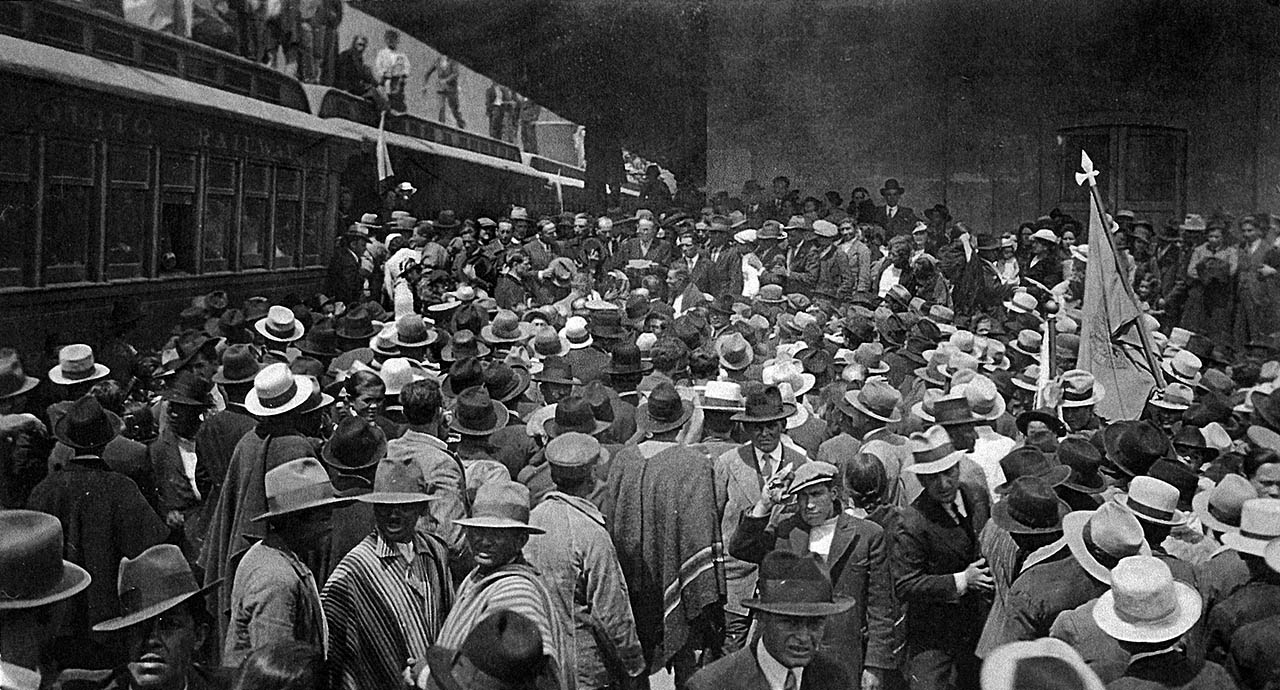
As D.S. Clark demonstrated the marvel of radio, he shared the marvelous story of Jesus to thousands of curious people. Crowds gathered around HCJB’s boxcar and missionaries handed out tracts and portions of Scripture.
Jones Mortgaged the Transmitter
Financial support had dwindled because of the Great Depression. Clarence's sending church apologized for the exceedingly small amount of money they were sending, less than 20% of what they had committed per month. It got worse. The bank holding all of the church's (and Clarence's) funds went under.
Desperate to keep Radio Station HCJB on the air, Clarence Jones risked everything and mortgaged the station's transmitter in 1933.
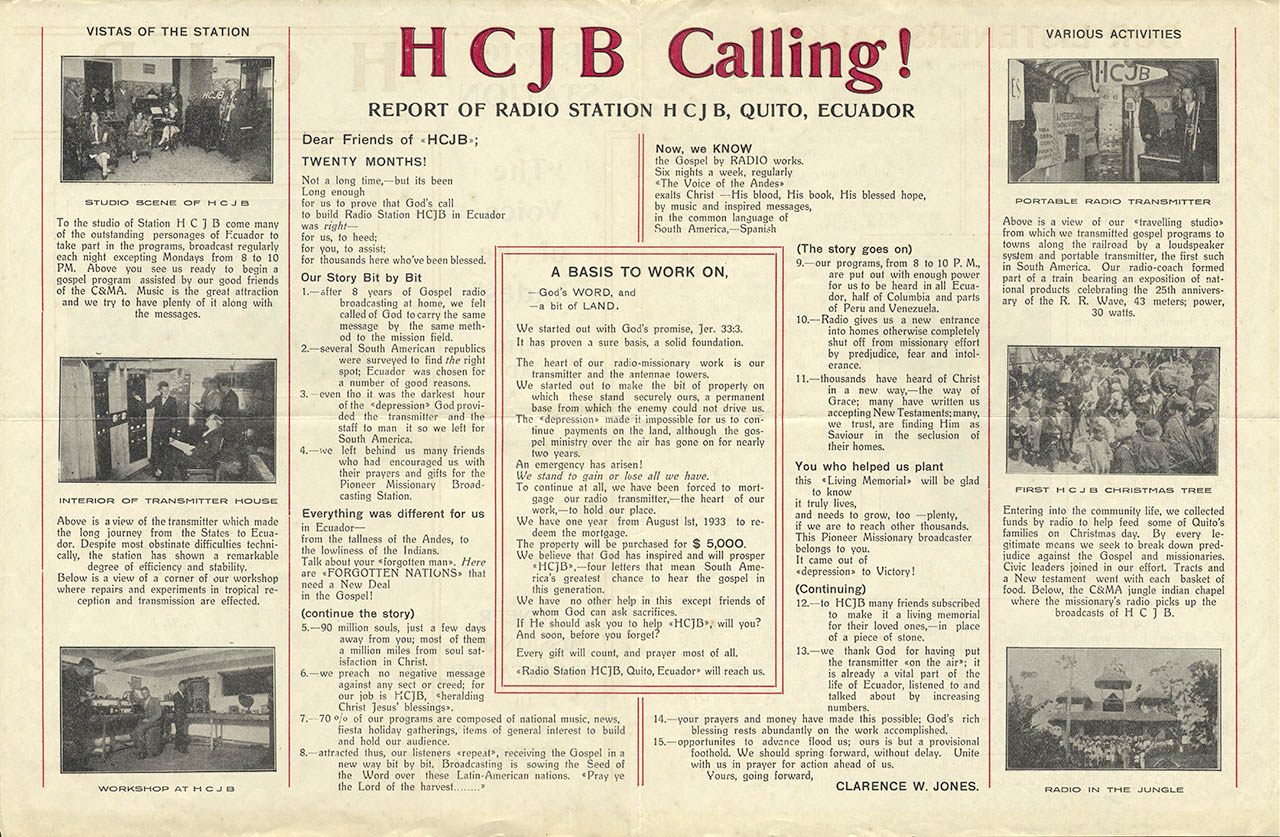
In spite of the Great Depression, the response to the above newsletter was overwhelming. Funds came in that not only paid off the mortgage on the transmitter, but also the $5000 they needed to purchase the property. By God's grace, Ecuador's Congress made an exemption to foreign owned property laws specifically for HCJB to own property in perpetuity, instead of just 5 years.
The financial strain was not over, however. Clarence taught English at a local school, directed a municipal band and did anything he could to earn money. In 1935, Clarence earned as much money working in Ecuador as was donated to the mission. But God provided enough, and before long, the mission would begin to grow.
Next: 1934 - Radio Circle and the Quito Radio Agency
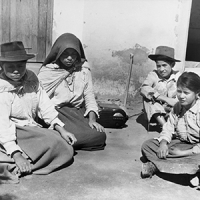

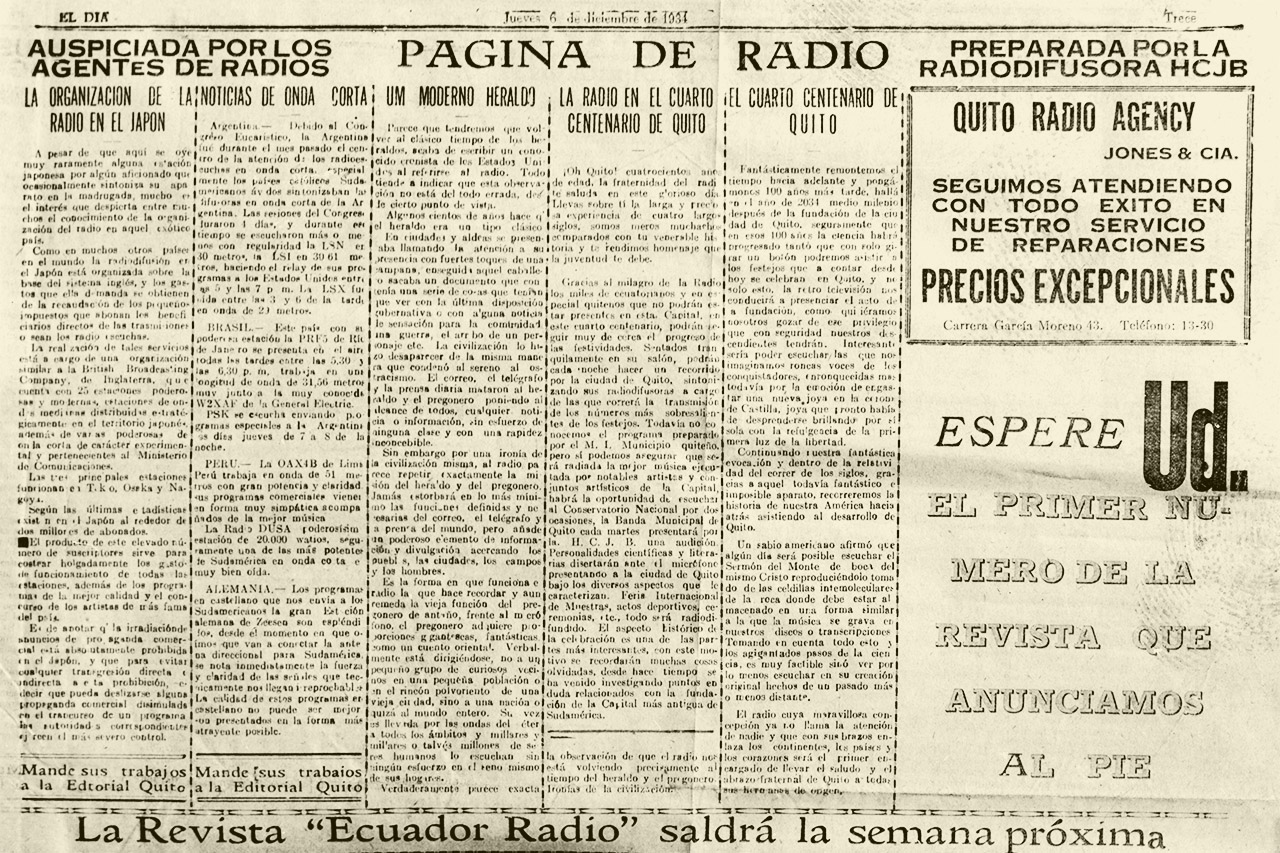 |
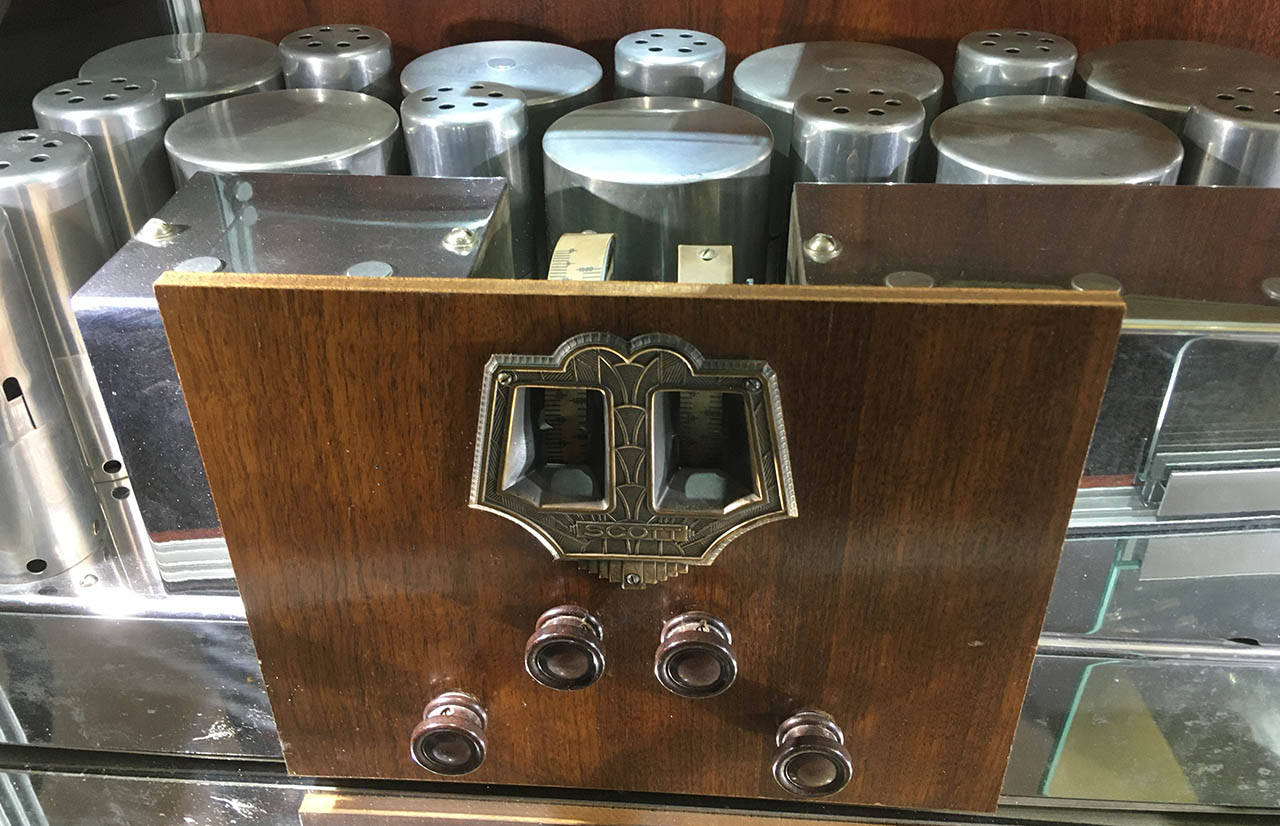 |
Clarence Jones faced the enormous challenge of building an audience since there were only five or six radios in all of Ecuador.
Clarence started the Quito Radio Agency in 1932 to distribute and sell radios. Jones had imported eight radios which were loaned to government officials and dignitaries for the first official broadcast on February 21, 1932.
The Stradivarius of Radios
Jones had hoped to generate revenue for the station by selling high-end radios to wealthy land owners. He imported the finest radios made at the time—the "Allwave 12" made by E. H. Scott in Chicago, Illinois.
The polished metal open surfaces of the E.H. Scott radios were symphony to the eyes and the sound quality was unsurpassed. Big band leader Guy Lombardo thought highly of this radio, “I do not think the tone can be improved—it is already perfect.”
In the midst of the Great Depression, the Allwave 12 sold for $212 (about $3300 today).
Pictures of HCJB’s first program in 1931 show Eric Williams using the Allwave 12 to monitor the broadcast. An advertisement of E.H. Scott in 1932 mentioned that Chicago resident, A. Luomo used his Allwave 12 radio to listen to HCJB in Quito, Ecuador. E.H. Scott radio's metal tube covers shielded interference—allowing owners to clearly hear stations over 12,000 miles away.
Clarence tried to do whatever he could to build interest in radio. He wrote articles on radio and had them published in one of Quito's newspapers. He also tried publishing a small radio magazine.
Clarence had hoped that radio would "take-off" in Ecuador, so he was discouraged that it hadn't. Radios at that time were just too expensive for most people in country. Clarence and Eric Williams had hoped to manufacture radios at a more economical price, however that turned out to not be practical or possible at that time.
There was no way for HCJB to use radio to reach people with the Gospel if they didn't have access to a radio. Clarence would have to find other solutions.
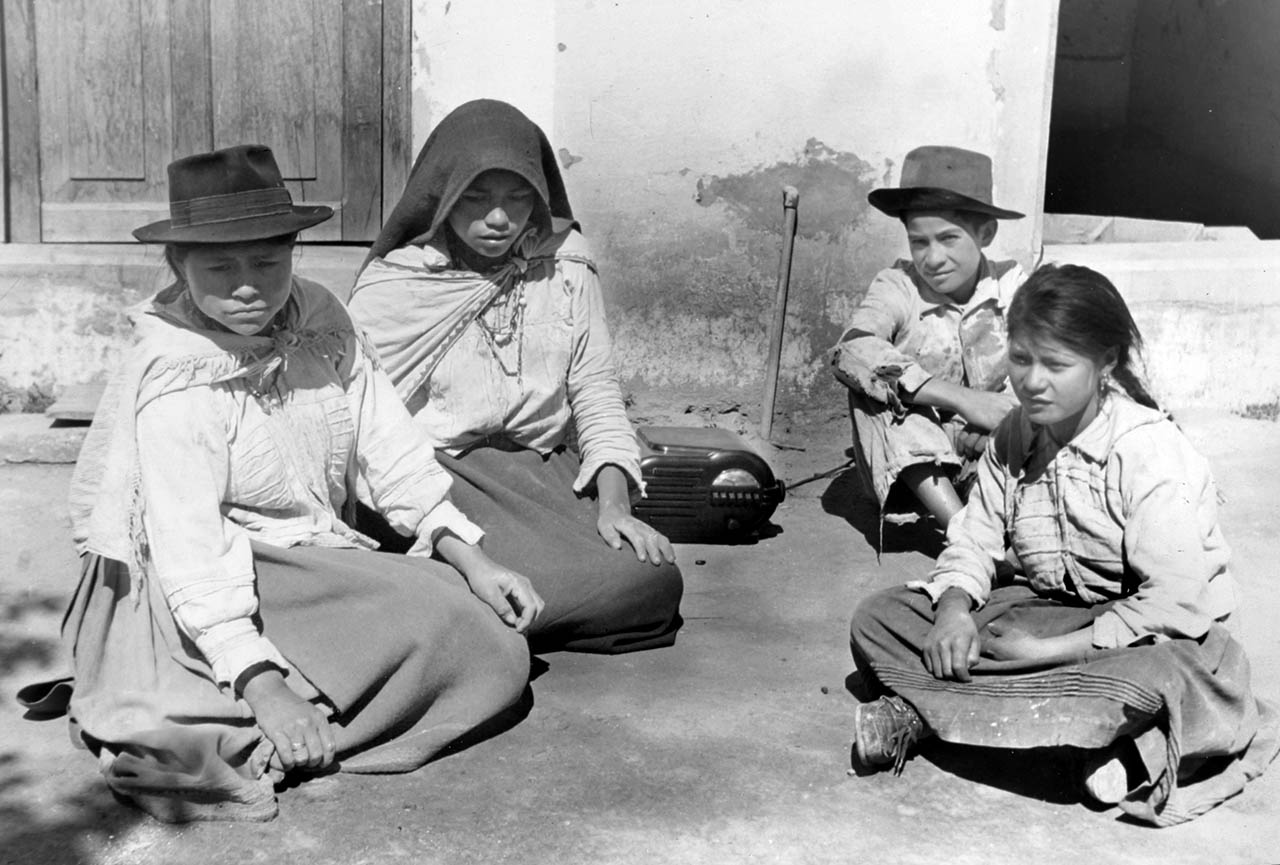 |
Radio Circle
In 1934, Clarence started the Radio Circle which established "listening posts" around the country. A radio would be entrusted to someone who would place it outside their home or at their business so that people from the community could listen to HCJB.
Next: 1936 - Evangelism on Wheels
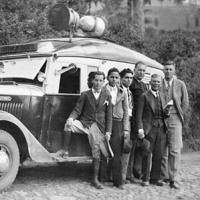

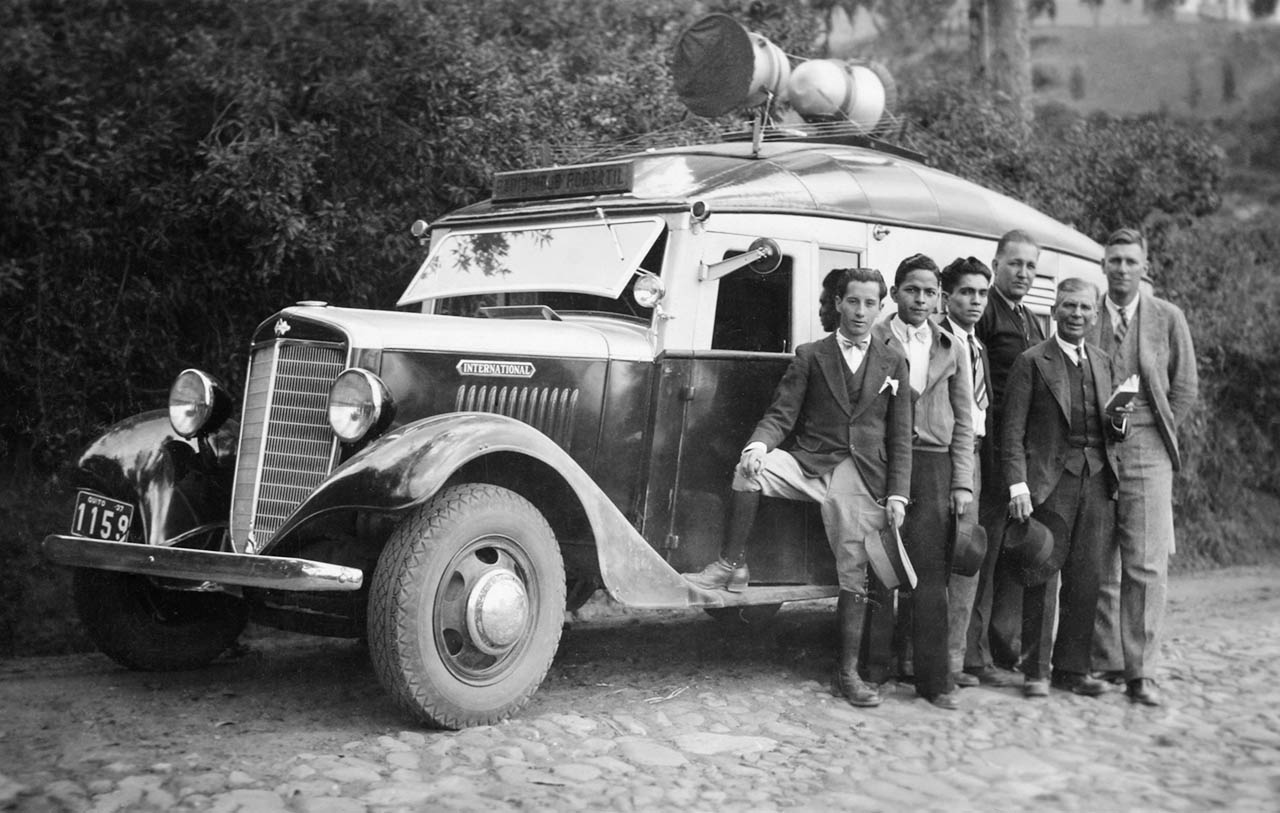 |
With Permission from the President
The success of using “radio” to attract crowds from a railroad boxcar inspired Clarence Jones and D.S. Clark to build the Gospel Sound Truck.
A 1936 truck was outfitted with a radio, portable transmitter, antenna, generator and loudspeakers to “broadcast” the Gospel to anyone within earshot of the truck.
After receiving some opposition, Clarence Jones managed to get a permit signed by Ecuador’s president that allowed them to broadcast freely from any public place in the country.
Ecuadorian pastors discipled by Christian & Missionary Alliance missionaries D.S. Clark and Reuben Larson also had an integral role in the sound truck ministry. The team played recorded music and live HCJB radio broadcasts as well as in-person evangelistic messages and testimonies. The team would also hand out Gospel tracts and portions of Scripture to anyone who wanted them.
The mission acquired a large tent that allowed them to hold week-long evangelistic services that would lead to the starting of numerous churches around Ecuador.
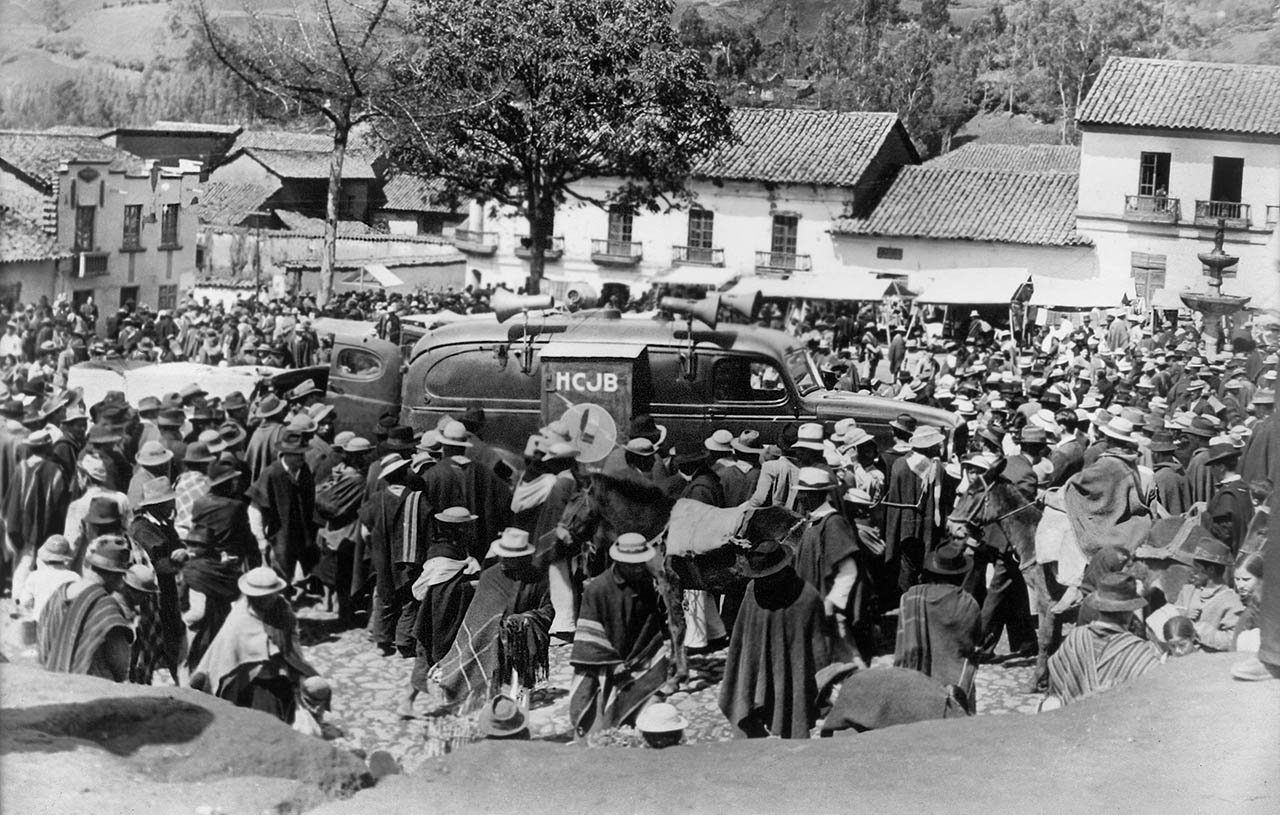 |
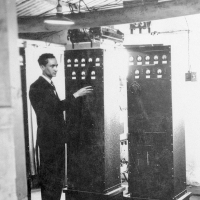

1,000 watts
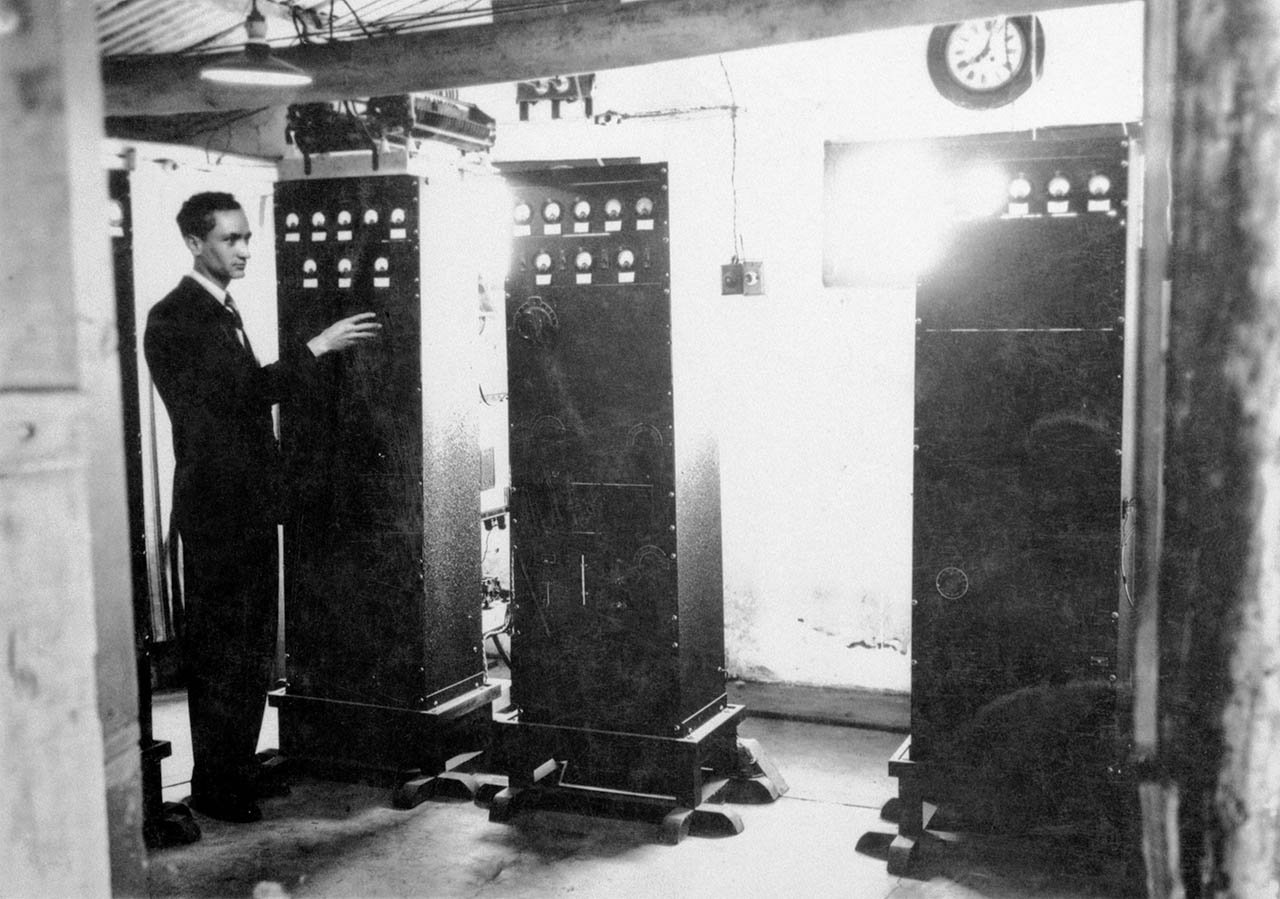 |
A Changed Heart
Engineer Victoriano Salvador joined HCJB’s technical staff shortly after the station started. Victoriano designed HCJB’s second transmitter, but as a devout Catholic, refused to help Clarence Jones build it. Salvador did eventually design and build this 1,000-watt unit in 1937.
Even though Victoriano worked diligently at the station, he did not embrace the Gospel message being aired over the very transmitters he helped build until much later in life. It was almost five decades later that Victoriano accepted Christ and was baptized at Radio Station HCJB.
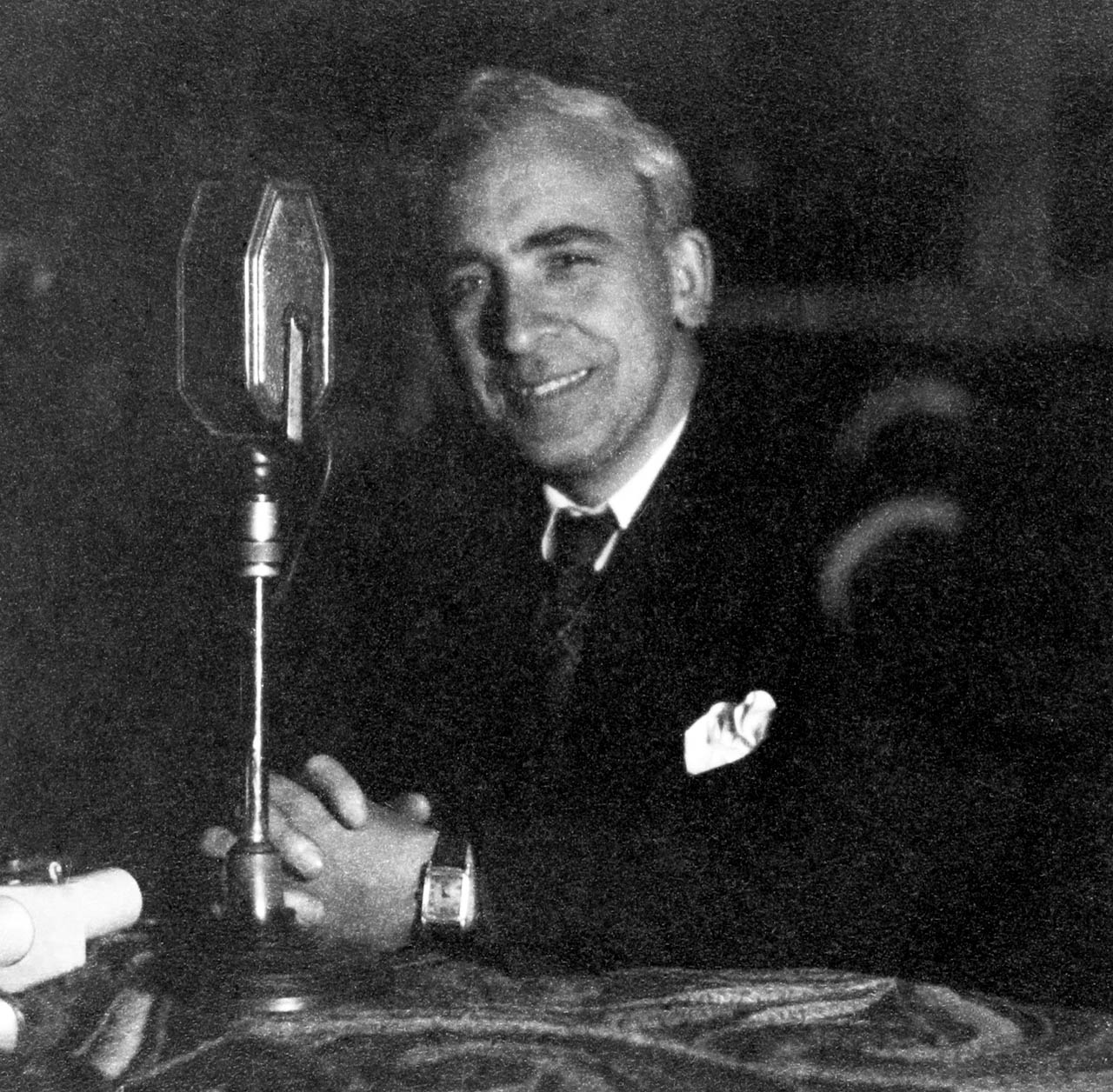 |
From Priest to Evangelist
As a child in Spain, Manuel Garrido Aldama’s parents sent him to be trained as a Roman Catholic priest. But God had other plans.
Manuel Garrido came to HCJB in 1937 as the station’s first Spanish evangelist. Listeners loved his Spanish accent and his amazing ability to explain complex Biblical truths.
In 1944, Manuel Garrido and HCJB began trying to start the "Voice of Iberia"—a radio station in Spain or even Morocco that could also reach North Africa. But God closed those doors and it would take over 50 years for HCJB to make that vision a reality.
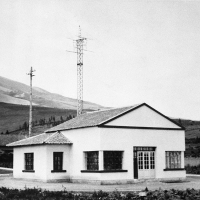
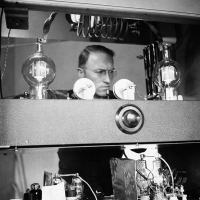

It's a piece of Junk
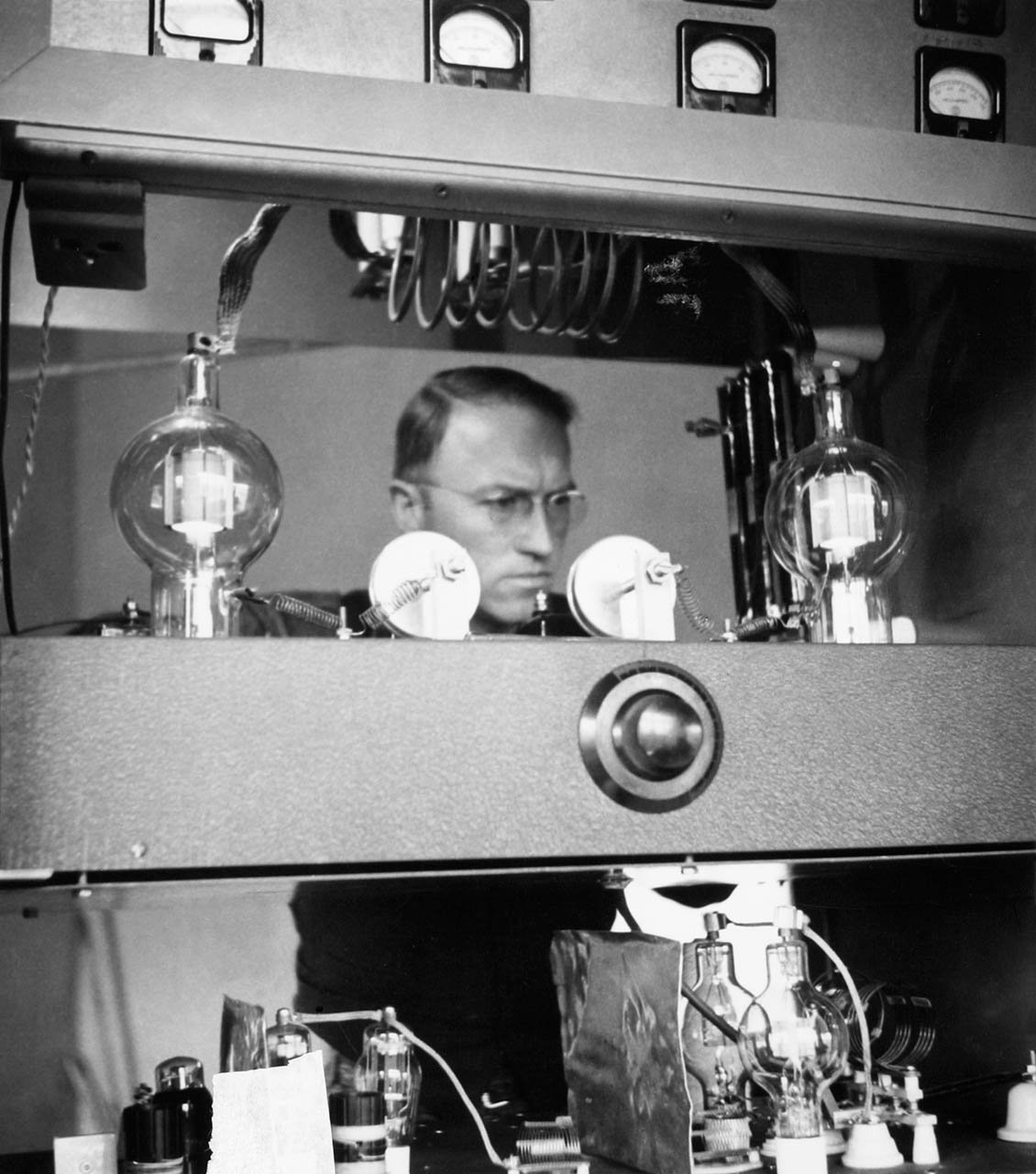 |
Clarence Moore was a pastor, teacher and radio-enthusiast who inexplicably felt God leading him to drive from his home in Michigan to Chicago. Moore obeyed and several hours later arrived unannounced at the house of his relative, Rev. "Uncle John" Meredith.
Once there, Moore asked Meredith if perhaps he had some idea why he (Moore) was there. Meredith realized that God must have wanted Moore to look at a used 5,000-watt transmitter that he was helping HCJB purchase. "Uncle John's" radio programs were aired on WMBI (Moody Bible Institute) and Radio HCJB.
When Moore and Bill Hamilton (another radio enthusiast) inspected that used transmitter, they found it to be an “obsolete piece of junk.”
Clarence Jones asked Moore if he could design and build HCJB a new 5,000-watt transmitter. Moore agreed and began work on the project at the Peoria factory of a generous Christian businessman. Moore soon realized that for just a bit more money, he could double the power to 10,000 watts.
The new high-powered transmitter was inaugurated by Ecuador's president on Easter Sunday, 1940. With 10,000 watts of power, HCJB's signal could clearly be heard around the world and allowed the mission to begin adding many languages.
But high power caused other problems. One night, electrical current began arcing off of the ends of the antenna into the air, literally melting the antenna elements. This was caused by combining high power with the high altitude (9,200 ft) and atmosphere of Quito. To temporarily solve this problem, Moore put copper toilet bowl floats on some of the tips of the antenna, but it needed a better solution.
Clarence Moore found that solution by inventing a new antenna design, which in effect had no ends, called a cubical loop, or Cubical Quad Antenna. This new antenna was installed at HCJB in Quito in 1942, and refined versions of it were used by the mission for another some 6 decades. The Cubical Quad Antenna continues to be used by many radio enthusiasts around the world.
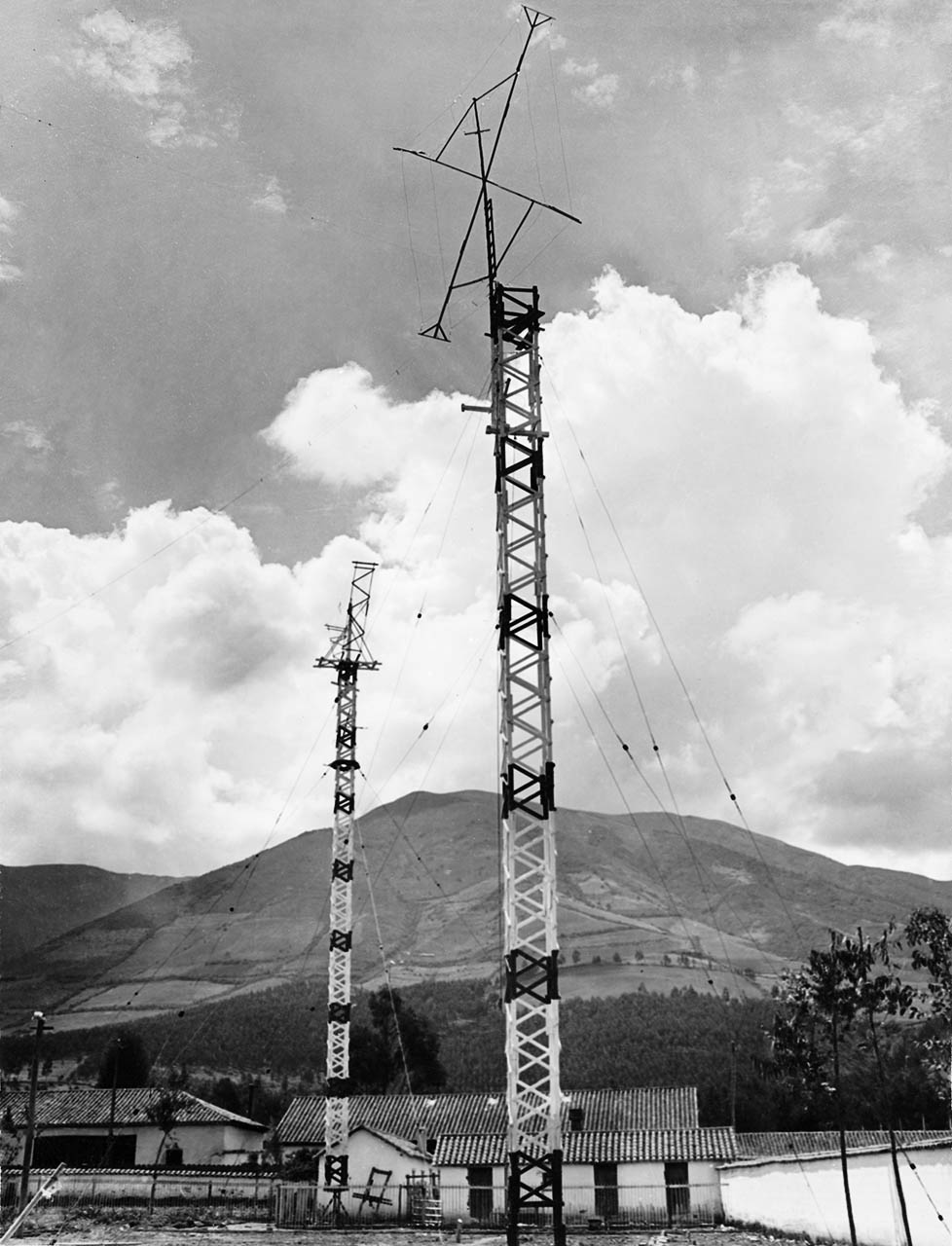 |
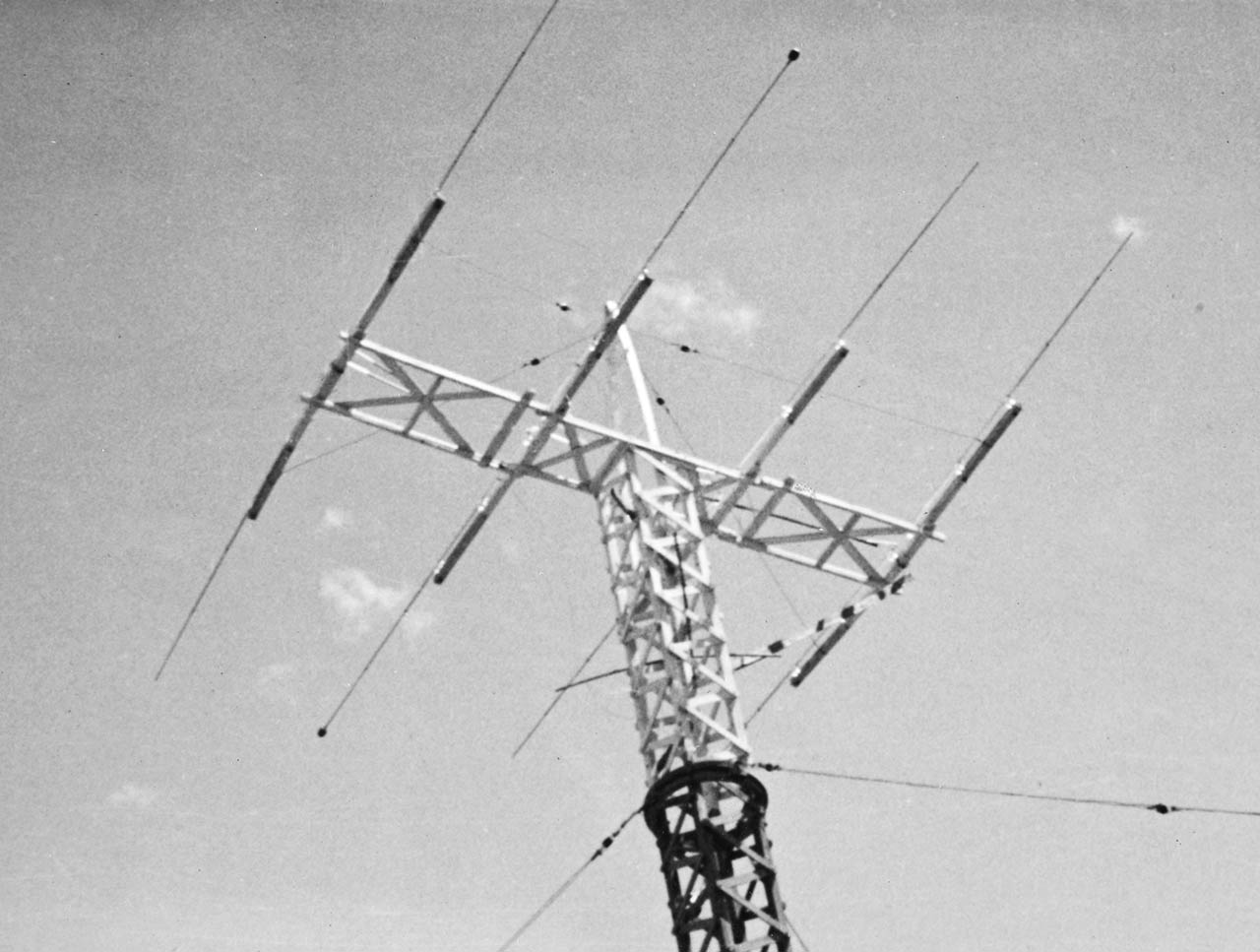 |
QSL cards and Letters to Listeners
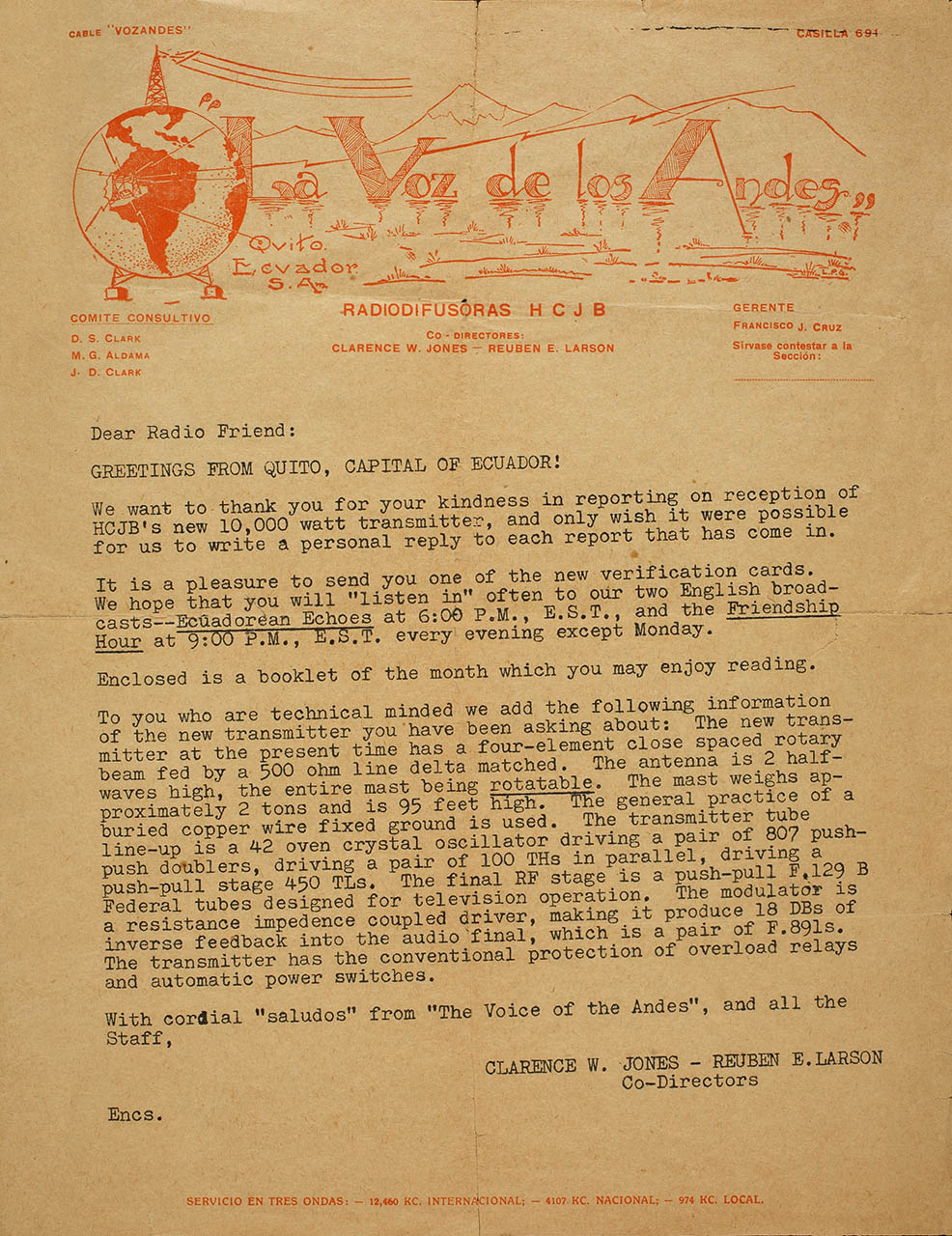 |
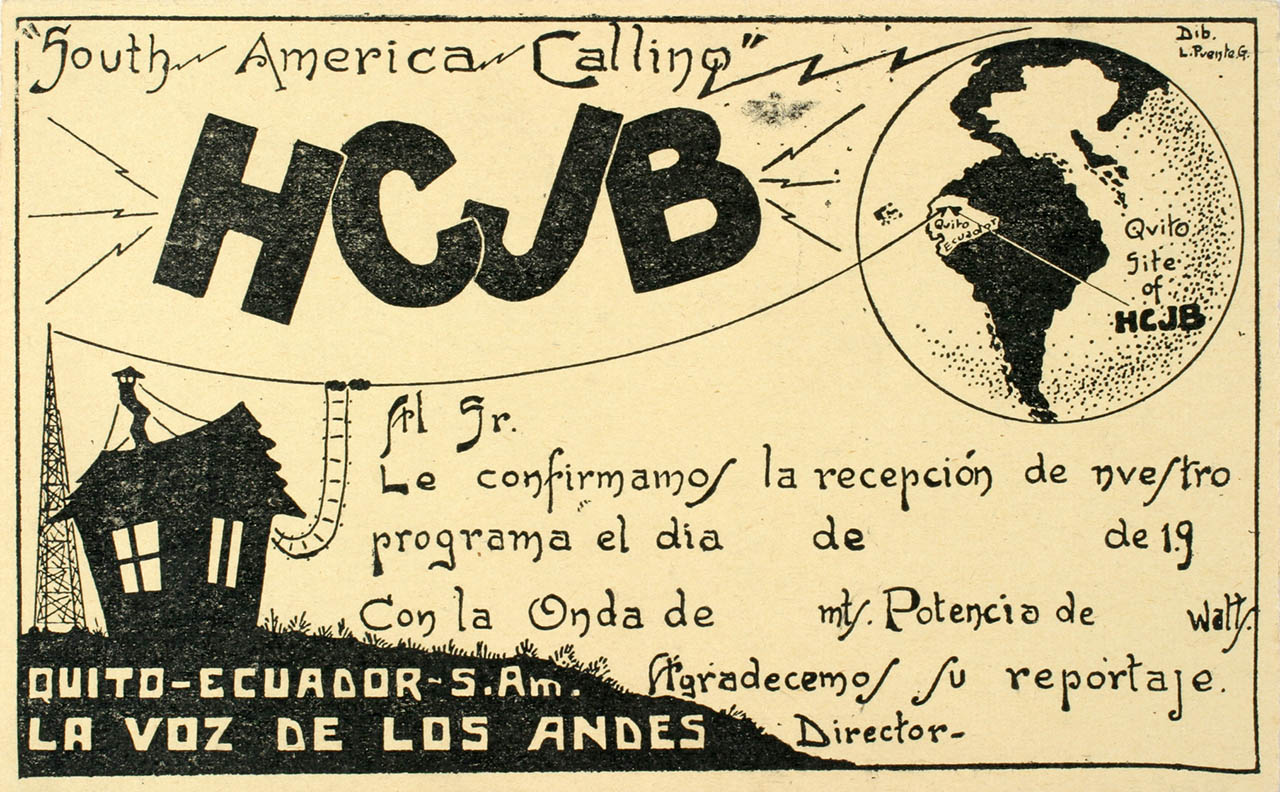 |
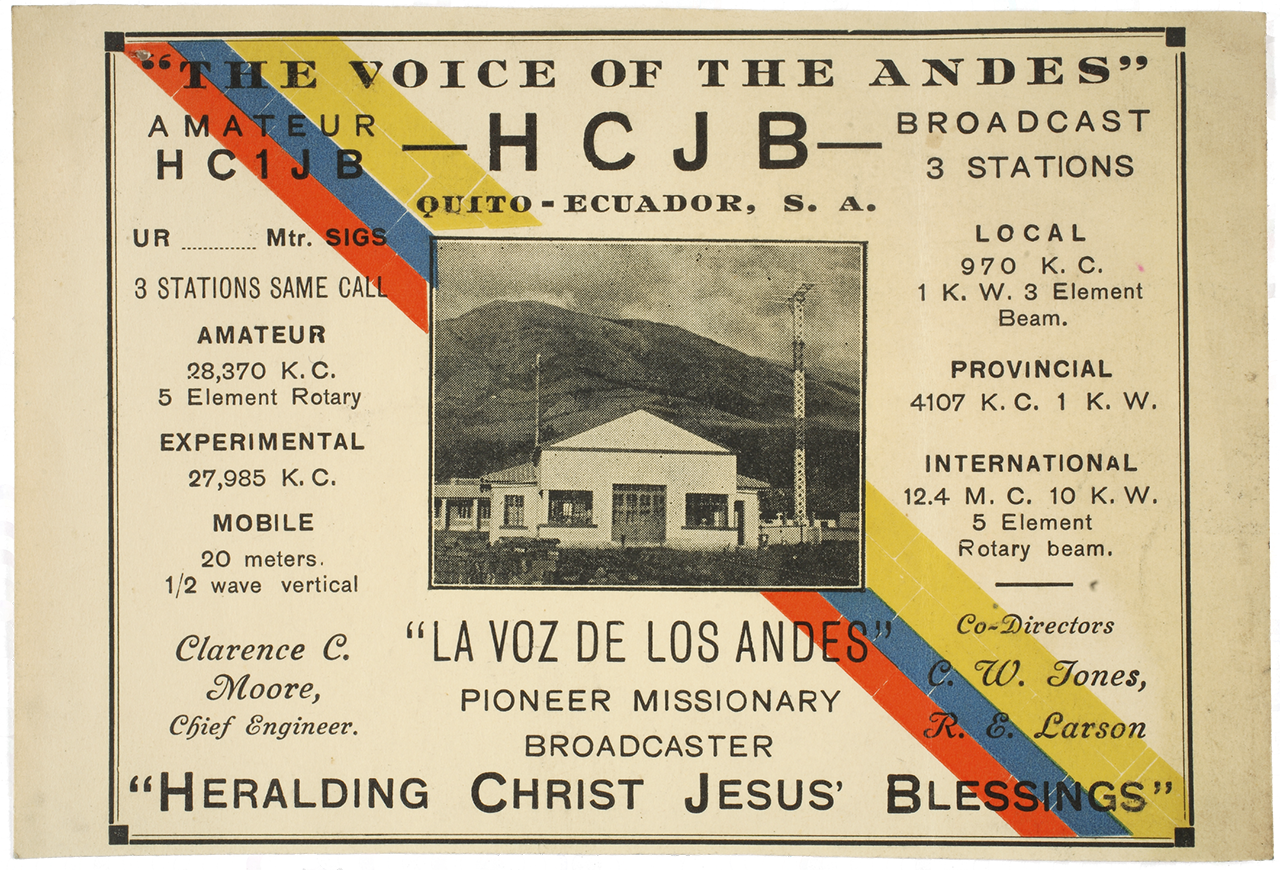 |
Parts is Parts
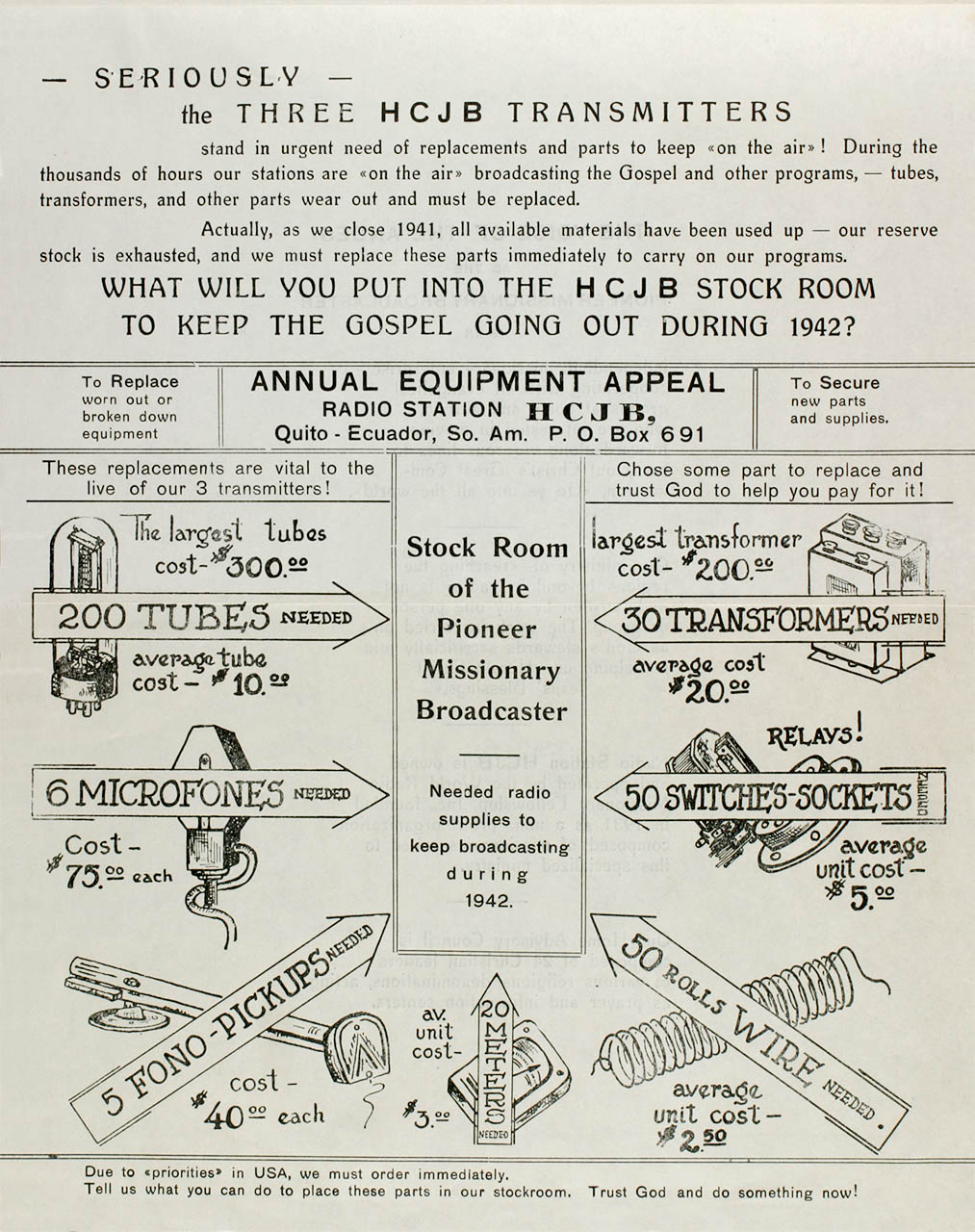 |
The Day the Tower Fell
by Clayton Howard
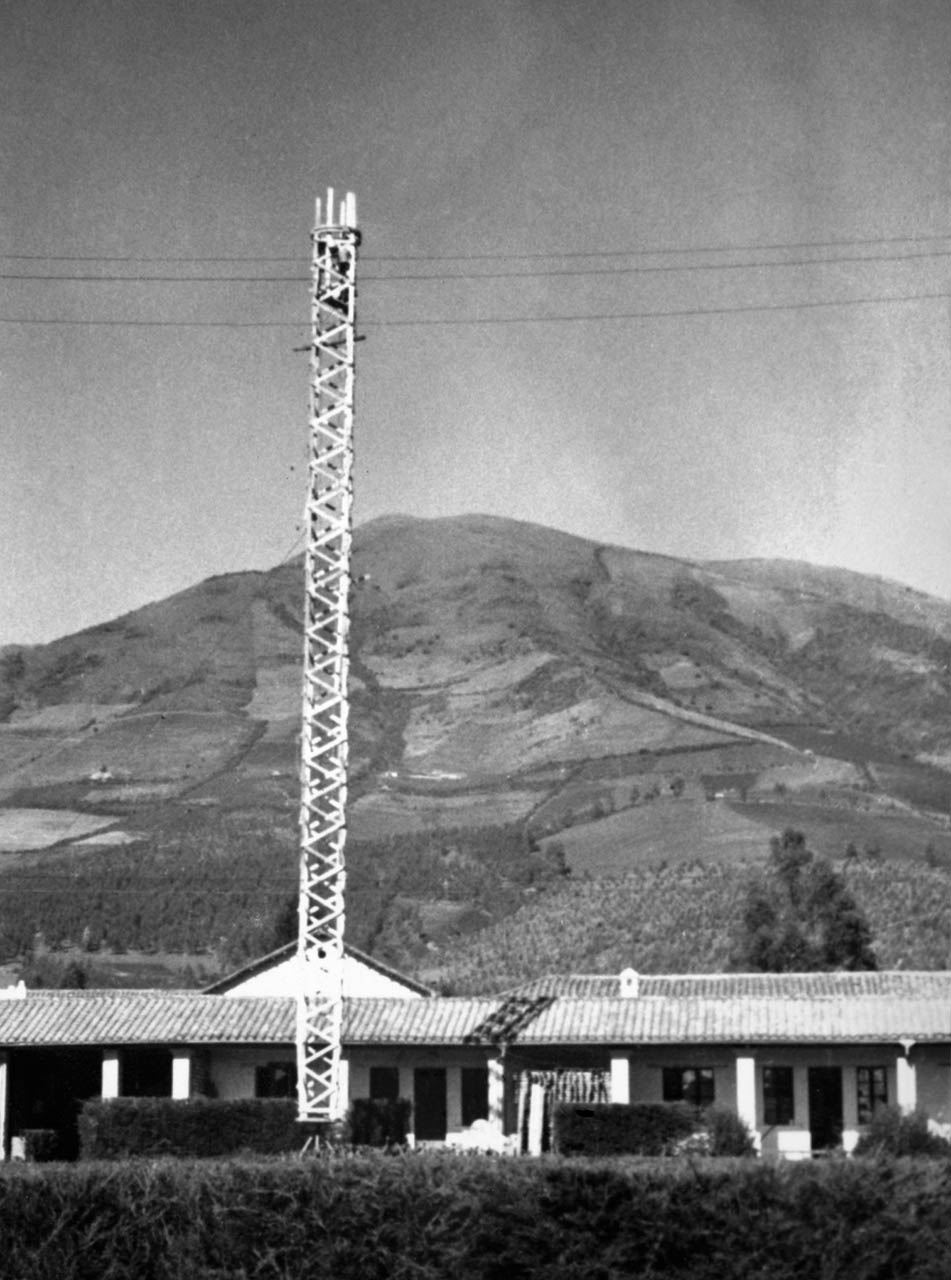 |
It all took place back in late 1942. I was given the responsibility to erect a new tower to hold the new 31 meter antenna. Dr. Miner B. Stearns offered to assist me. The tower was square in shape and was put up much like a large scale erector set. The wood pieces were cut on the ground and drilled with holes where the bolts would go to hold it together. Anchors were placed in the ground to hold the guy wires needed to hold the tower in position after it was completed.
We worked inside the square tower as we felt that was safer than working on the outside. We would climb up the tower as far as it had progressed, pull up the next piece of wood and bolt it in place. As the tower grew we moved the guy wires to a higher position on the tower. We used a heavy rope to hold the tower in position as the permanent wires were moved.
On the nearly fatal day we were probably up to a height of about 40 feet and things were progressing smoothly. We were moving one of the guy wires to a higher position so had just placed the rope substitute in place.
Dr. Stearns and I began our climb. I don’t believe we had reached the top when the rope anchor slipped from where it had been tied to the ground. All I remember is that I felt the tower begin to move and I immediately realized what has happened. They told me later that both of us began to climb down the tower as fast as we could. The next thing I remember is trying to get out of the tower and being rushed to a medical clinic.
Edmundo Zarria, one of our national technicians, realized that I had left my camera at the top of the tower. He rushed out into the street and saved the camera and also took the pictures of the wreck.
The Lord was very good to us because the tower fell to the south. There was a mud wall around the station compound at that time and the top of the tower landed on the wall.
The base of the tower was elevated a few feet on a special metal base. The part of the tower where we were never hit the ground. If it had, the structure would have collapsed and we probably would have been crushed. If it had been any other guy wire that gave, the top of the tower would have hit the ground and we could have easily been killed.
We have thanked the Lord many times for this protection He gave us. We know it was the Lord who spared our lives that day!
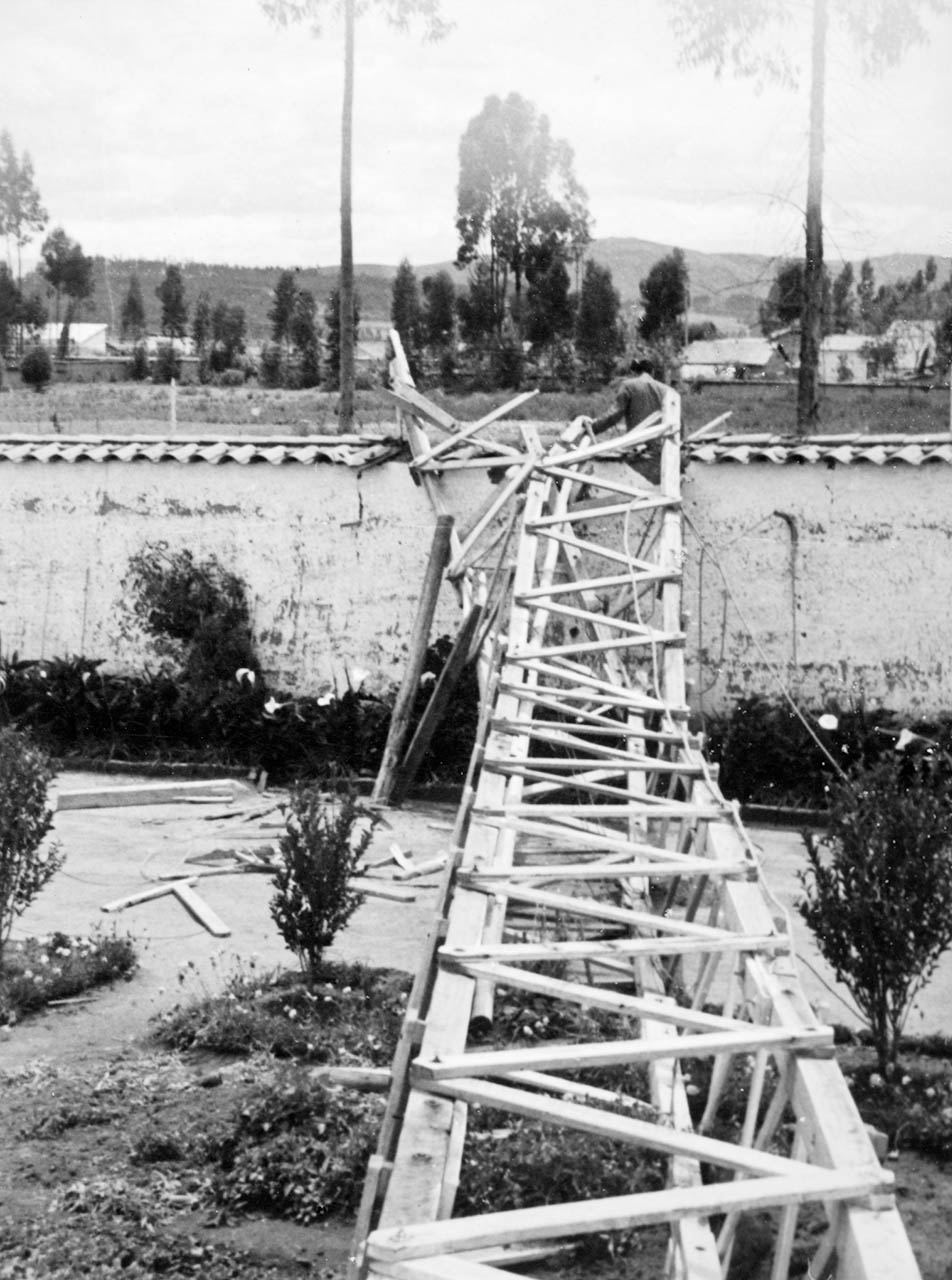 |
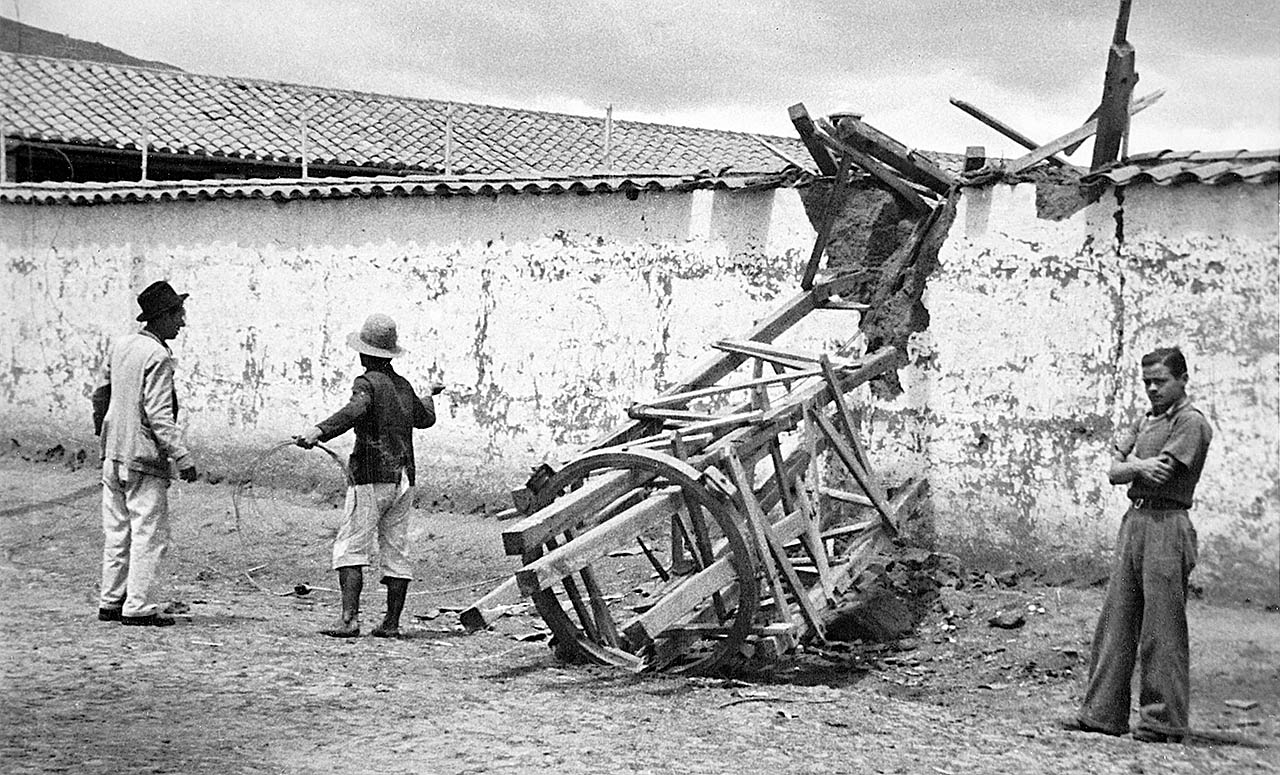 |
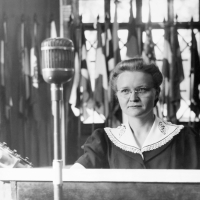

Invading the USSR
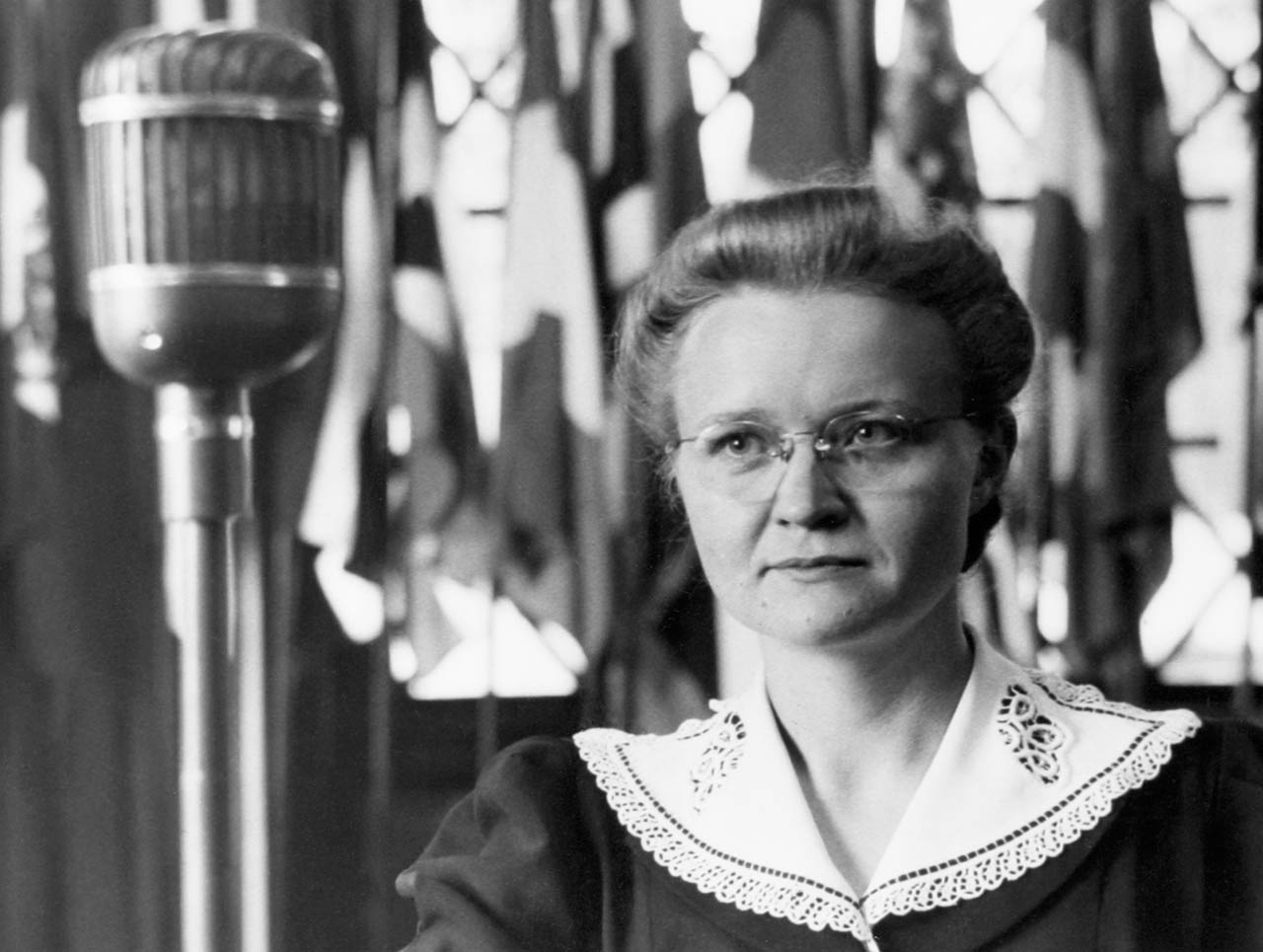 |
Peter Deyneka visited HCJB in Quito in early 1941 and made 16 Russian language test programs. During the program, Deyneka asked people to call his home phone number in Chicago if they were able to hear the program. Deyneka's daughter Ruth recalls that they had so many phone calls at their house, that they were unable hear much of the actual broadcasts. Encouraged by the response, Peter and the staff at the Slavic Gospel Association (SGA) began recording Russian programs in Chicago that were sent to Quito.
HCJB's first Russian broadcast using these programs took place on June 22, 1941—the very same day that Adolf Hitler’s armies invaded the Soviet Union. As a result, many Russian speaking listeners around the world came across these Christian programs as they scanned the airwaves for any Russian language broadcasts they could find.
The SGA sent many missionaries to Quito including Constantine Lewshenia in 1942, followed by Elizabeth Zernov in 1943, and Alex Leonovich in 1945. Elizabeth later married Constantine and the two of them produced Russian programs in Quito for many years. Their programs had a lasting impact and were often a lifeline for people in the Soviet Union. During trips to the Soviet Union and even in the U.S., Russian listeners would recognize their voices, introduce themselves and break out into tears of joy saying “You were our bread." "You were the source of our spiritual food.”
Decorated by the King of Sweden
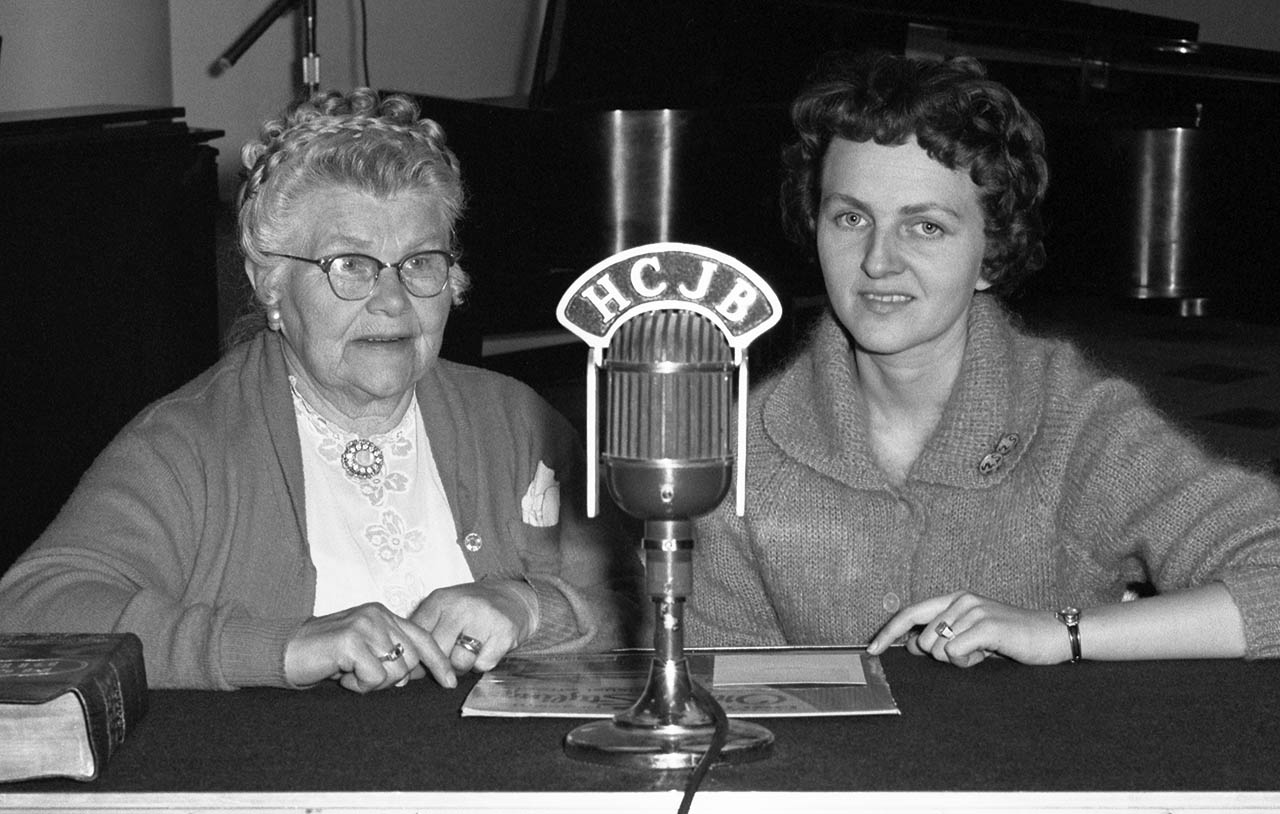 |
In 1941, Ellen de Campaña began making regular live Swedish broadcasts from Quito. In 1952, King Gustaf VI Adolf of Sweden awarded Ellen a medal of the Vasa Order for her service to Swedish speaking people around the world. Ellen de Campana was the first woman to be granted a medal of that order.
Sonja Persson (at right) came to HCJB in Quito 1959. Sonja made Swedish programs for 37 years until the Nordic shortwave broadcasts from Quito ended in 1996.
Determined to Hear HCJB. The Beginnings of Quichua Broadcasts
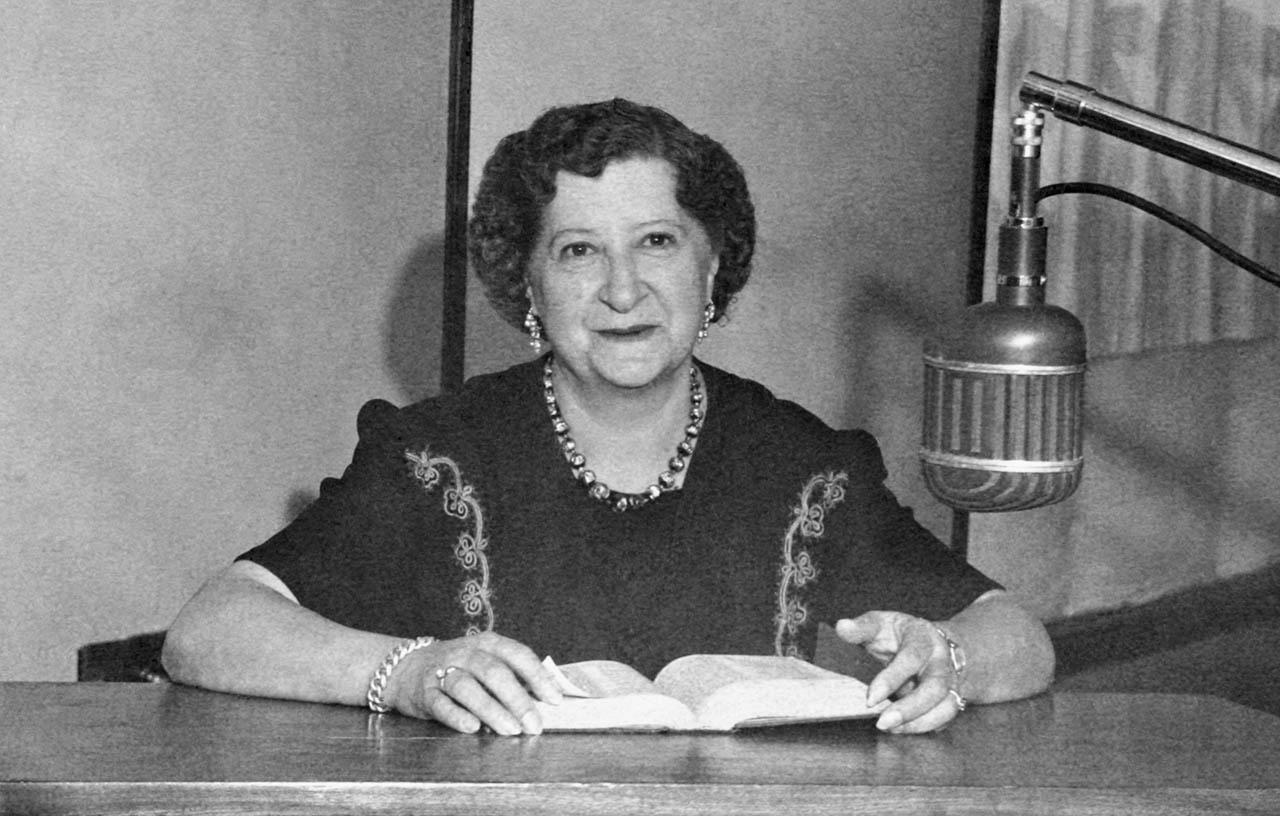 |
Carmela Ochoa couldn't afford to purchase a radio in 1936, but she managed to get one from a store on a trial basis. One of the first programs she heard was a message by Reuben Larson that stirred her heart.
When the store reclaimed the radio, Carmela got a trial radio from a second dealer and eventually a third. She called HCJB and they sent her a New Testament which she began to read. As things got worse in her family, she cried out to God for help, then went to an evangelical bookstore where by God's providence, she met D.S. Clark, who then led her to the Lord.
Carmela's faith in Jesus would cause her husband to divorce her in 1940. Not long after, Carmela heard that HCJB wanted someone to make Quichua language programs for Ecuador's large indigenous population in the Andean Highlands. Carmela's heart lept as she had learned to speak Quichua as a child.
In 1941, Carmela began sharing her new faith with Quichua speakers as she produced several programs each week.
Quichua Broadcasts and the Transforming Power of the Gospel on Display in Ecuador's Congress
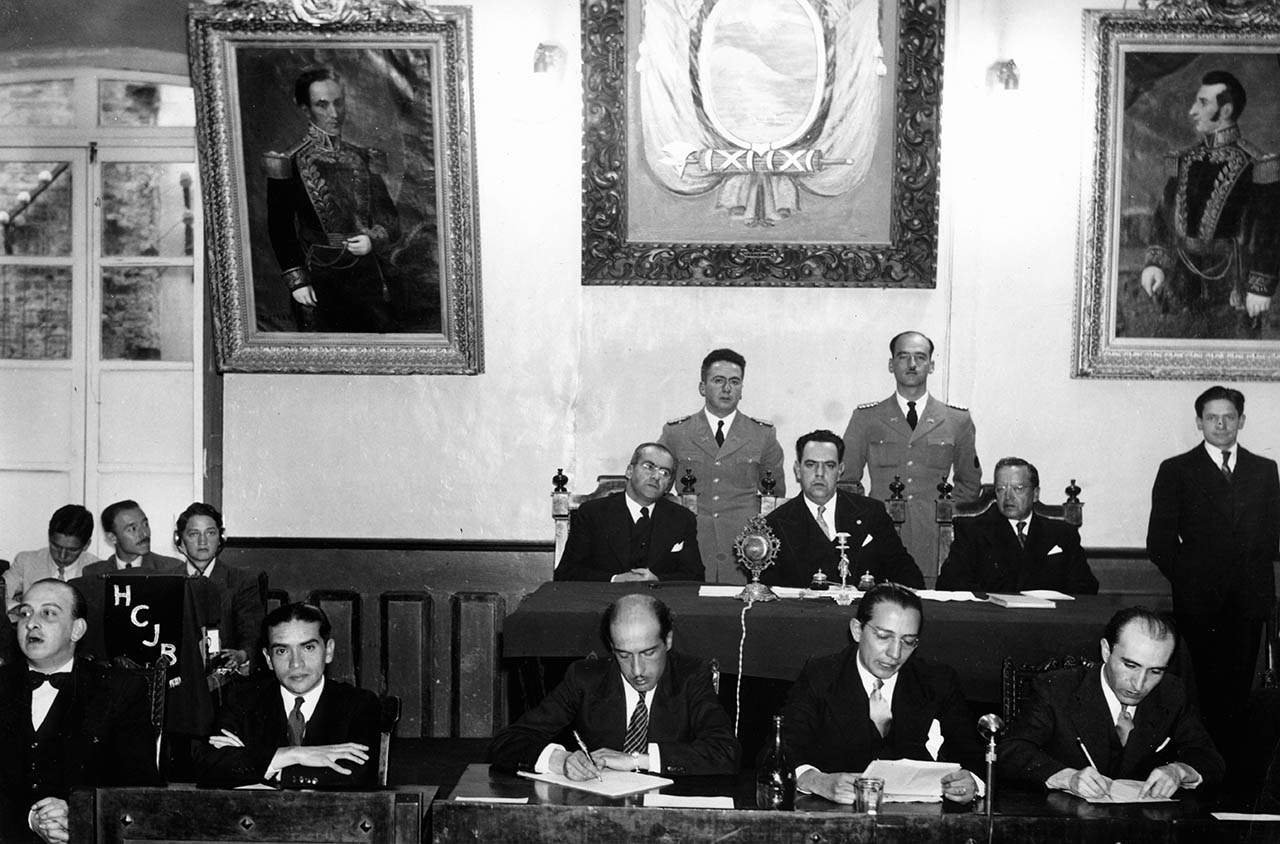 |
Several years after the Quichua broadcasts began, a bill to extend HCJB's contract with the government went before the Ecuadorian Congress for discussion. That Sunday, one of the congressman happened to go to a hacienda in the country. While he was there, several Quichua Indian workers came up to the owner mid-afternoon and asked him if they could please listen to the radio. The congressman was astonished that the Quichuas were sober and that they wanted to listen to the radio. At that time, the assumed stereotype was that every Quichua got drunk on Sunday. The congressman protested the request saying that they these simple workers did not have the ability to understand what was being said on the radio. But the Quichuas explained that Señora Ochoa spoke to them in their own language.
The visitor was impressed as the Quichuas quietly listened to the program and then graciously left the porch. The congressman was sure that the Quichua workers would now go and get drunk, so he followed them back to their homes. Instead he found them to be happy and content along with their clean and neatly dressed children. He returned to the hacienda owner and asked them what made them different and why weren't they off getting drunk. The owner responded that it is the radio station Voice of the Andes. And while he didn't know what they talked about, it had changed them into the people he witnessed. And then the hacienda owner added that he wished more of them listened to the station.
Back in Congress, discussion resumed on extending HCJB's contract. A communist group protested the contract and another group demanded that whatever congress did for HCJB, they should do for them too.
The congressman who had just seen firsthand how HCJB's Quichua broadcasts had radically transformed lives on the hacienda, stood up, told them the story, and responded that "Whenever you do anything as good for Ecuador as the Voice of the Andes, you can have help too." He then moved to pass the bill without further delay. And so HCJB's contract and permission to broadcast from Ecuador was extended for 25 more years.
Next: 1942 - Wartime Brings New Opportunities for Radio Station HCJB
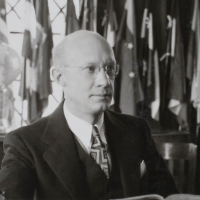

 |
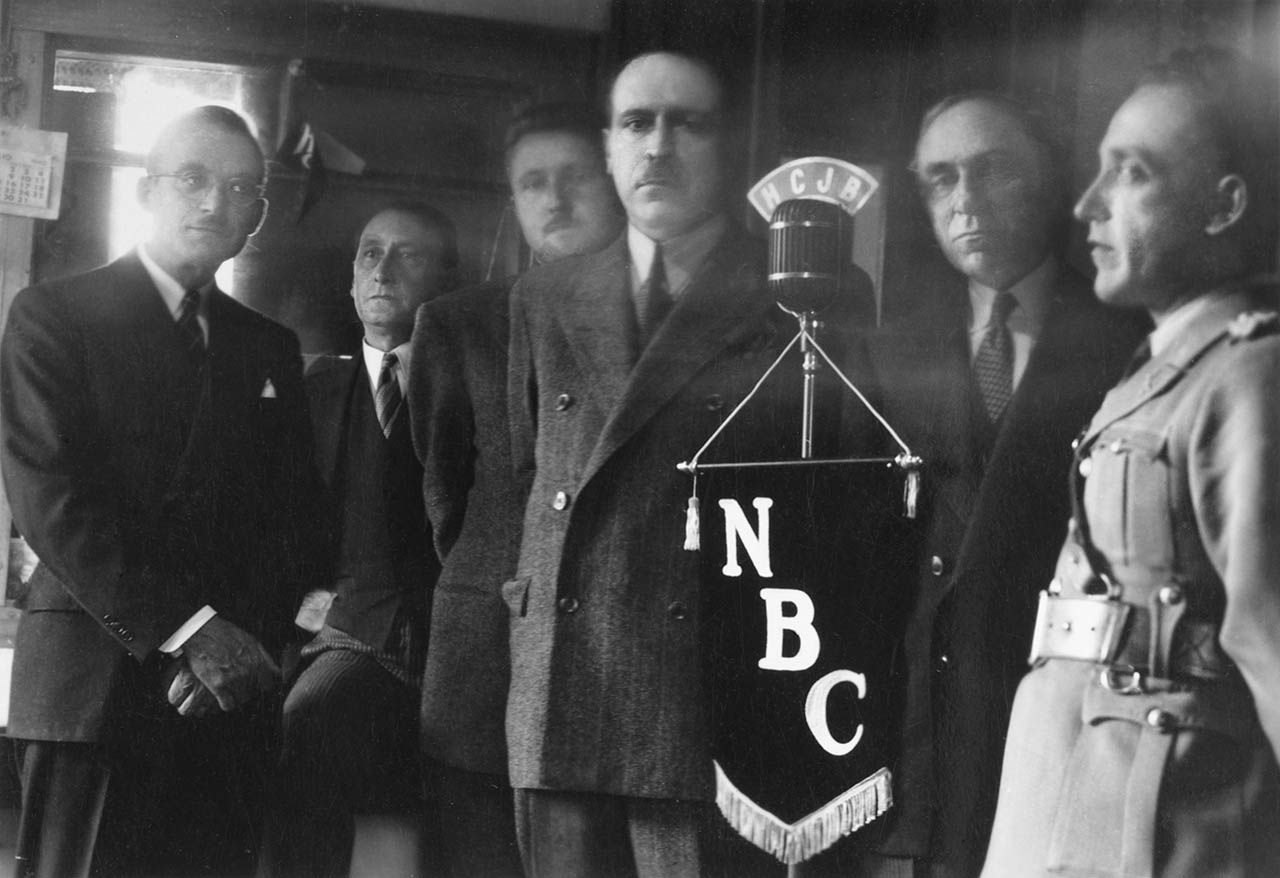 |
The outbreak of World War II brought new opportunities for radio ministry. People around the world were spending more time listening to radio. More than ever, people needed to hear the message of Jesus' love for them and the peace and hope that can only be found in Him. But what radio listeners were really searching for was news about the war and God provided an amazing opportunity for Radio Station HCJB in an unexpected way.
HCJB and NBC
As part of the war effort, HCJB was asked to become an affiliate of NBC (National Broadcasting Company)—one the largest media networks in the United States.
HCJB aired selected NBC programs and news about the Allies efforts in the war. HCJB also sent news items and recorded special programs that would be aired over the NBC network.
The affiliation with NBC not only increased HCJB's audience around the world, but income from NBC helped build a new studio and office building in 1943.
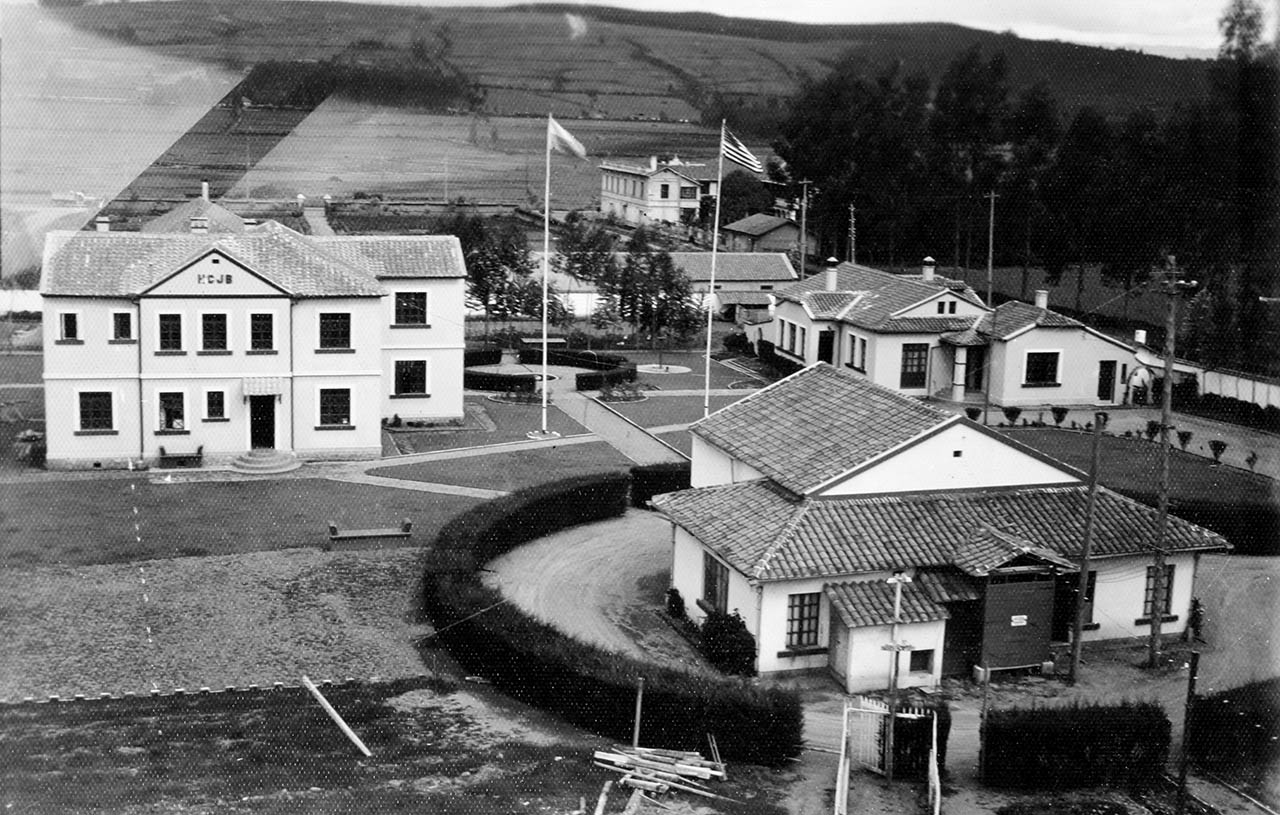 |
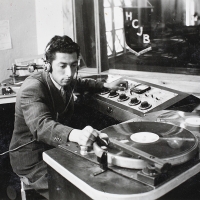

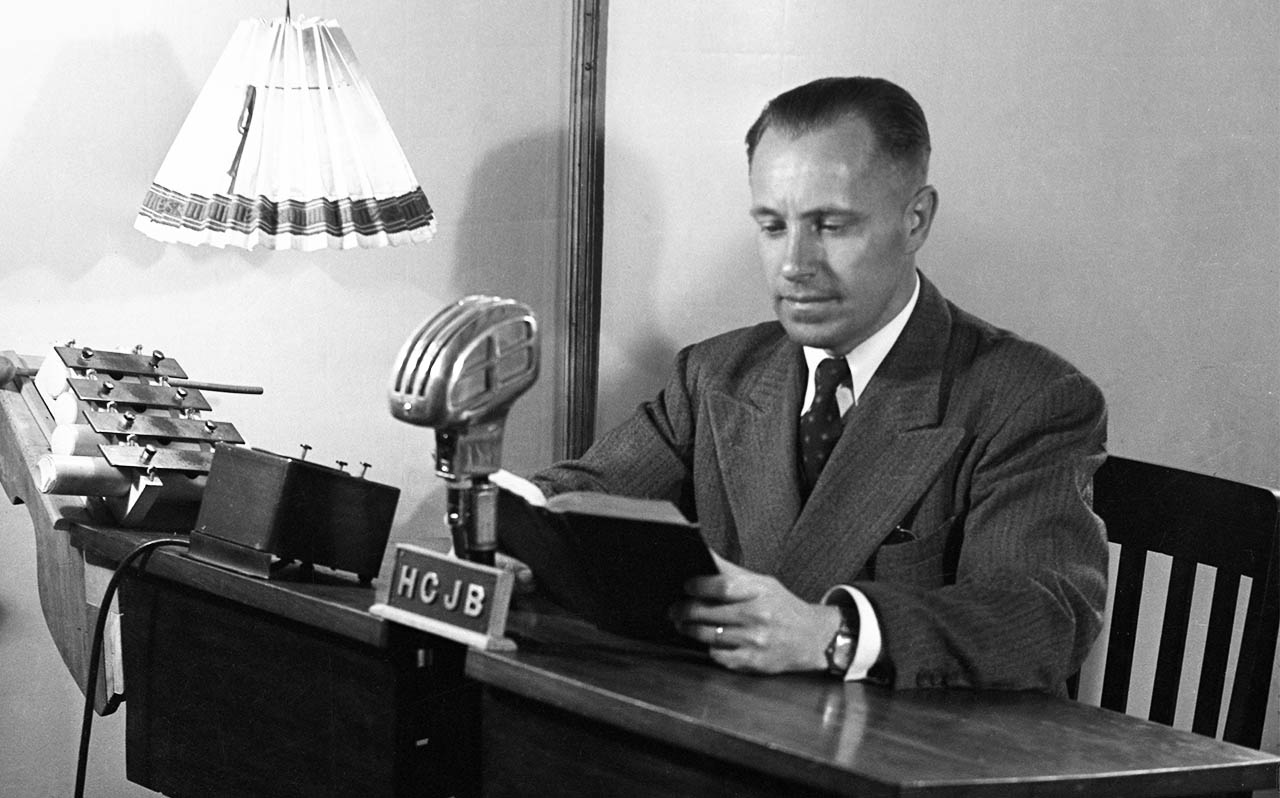 |
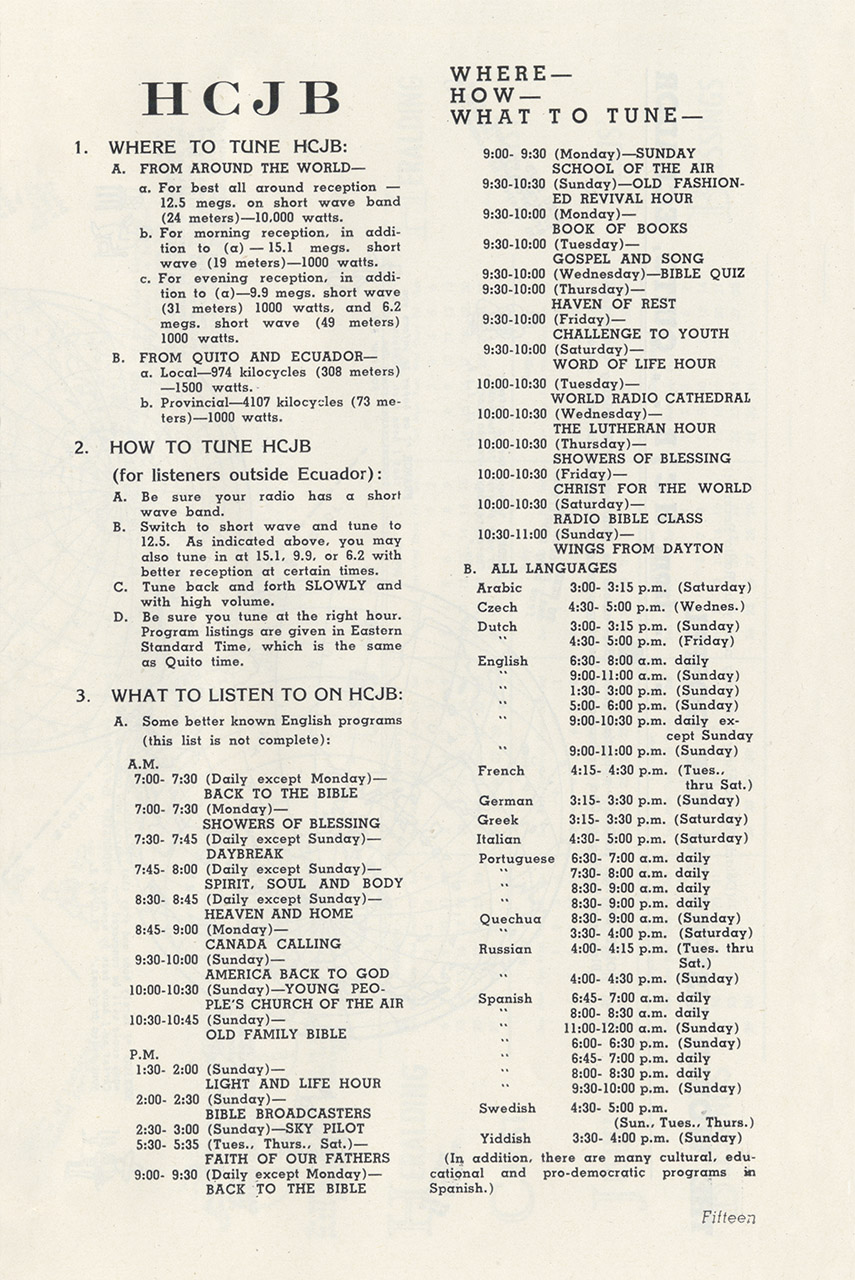 |
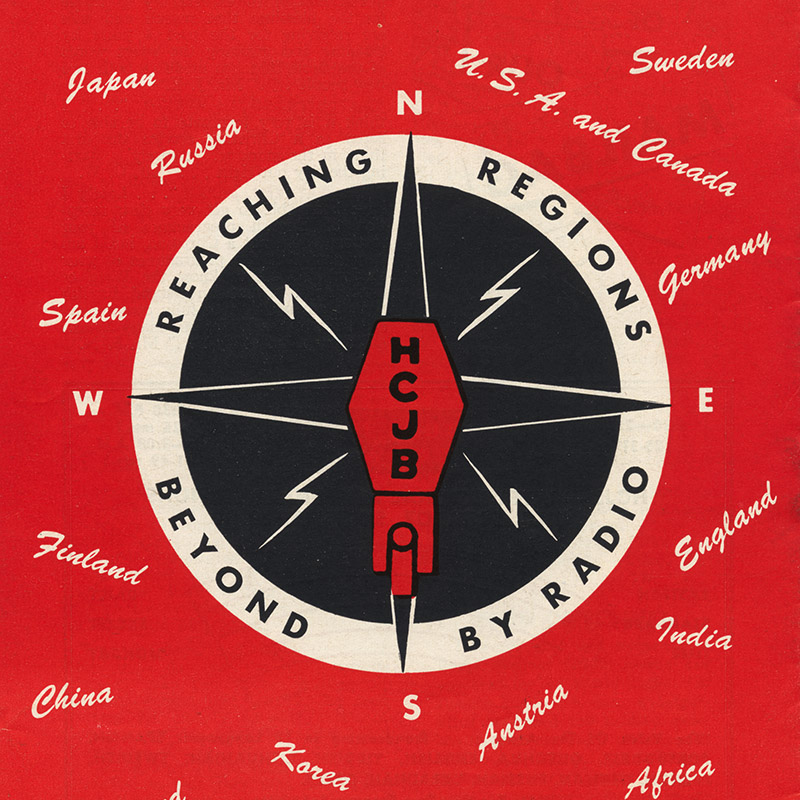 |
During the war, HCJB eagerly sought people in Ecuador and from around the world to come to the station to produce programs in new languages.
For some languages, however, the immediate and most viable solution was sending programs recorded on transcription discs—acetate-coated aluminum discs that were much larger than normal records.
By the end of 1945, Radio Station HCJB was airing live and recorded programs in 14 languages.
1931 Spanish, English
1941 Swedish, Russian, Quichua
1942 Dutch, French
1944 Arabic, Czech, Greek, Italian, Portuguese, Yiddish
1945 German
Followed by:
1948 Bohemian, Latvian, Lithuanian, Urdu
By 1950, the mission decided to refocus efforts on major languages and began recruiting additional staff to come to Quito to produce more hours per language, increase the quality of the programs, and engage in better listener follow-up.
Reaching Regions Beyond
Clarence Jones firmly believed that radio program producers should be located as close to the audience as possible. Even though people around the world could hear HCJB's shortwave broadcasts from Ecuador, the airways would only get more crowded—making it harder for people to receive a clear signal.
The mission remained determined to start missionary radio stations in all parts of the world. HCJB looked to expand into Europe, Africa, Asia and other parts of Latin America with radio. But God often had other plans.
One of the first projects pursued was a "Voice of Europe" broadcast site—to reach the continent with a stronger signal.
In 1944, Clarence Jones proposed a partnership with the Sudan Interior Mission (SIM) for the "Voice of Africa." HCJB offered to send Clarence Jones and engineer Clarence Moore for two years to help develop a station in Ethiopia or Liberia. HCJB only had 15 missionaries at that time.
In 1945, the mission pursued the "Voice of Iberia"—a station in Spain (or Morocco) to reach the Iberian Peninsula and North Africa.
Jones would later propose doing a radio survey of Asia. However after some consideration, Clarence spent 5 months traveling to 21 Latin American countries, identifying potential partners and possible locations for new stations. The survey led HCJB to create the Panamerican Christian Network to share radio programs throughout Latin America.
Next: 1949 - The Bible Institute of the Air.
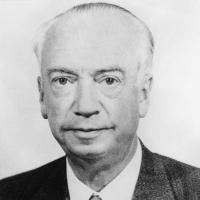
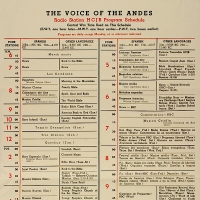
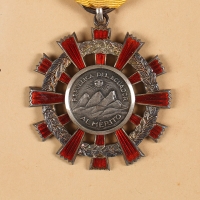
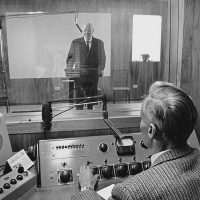

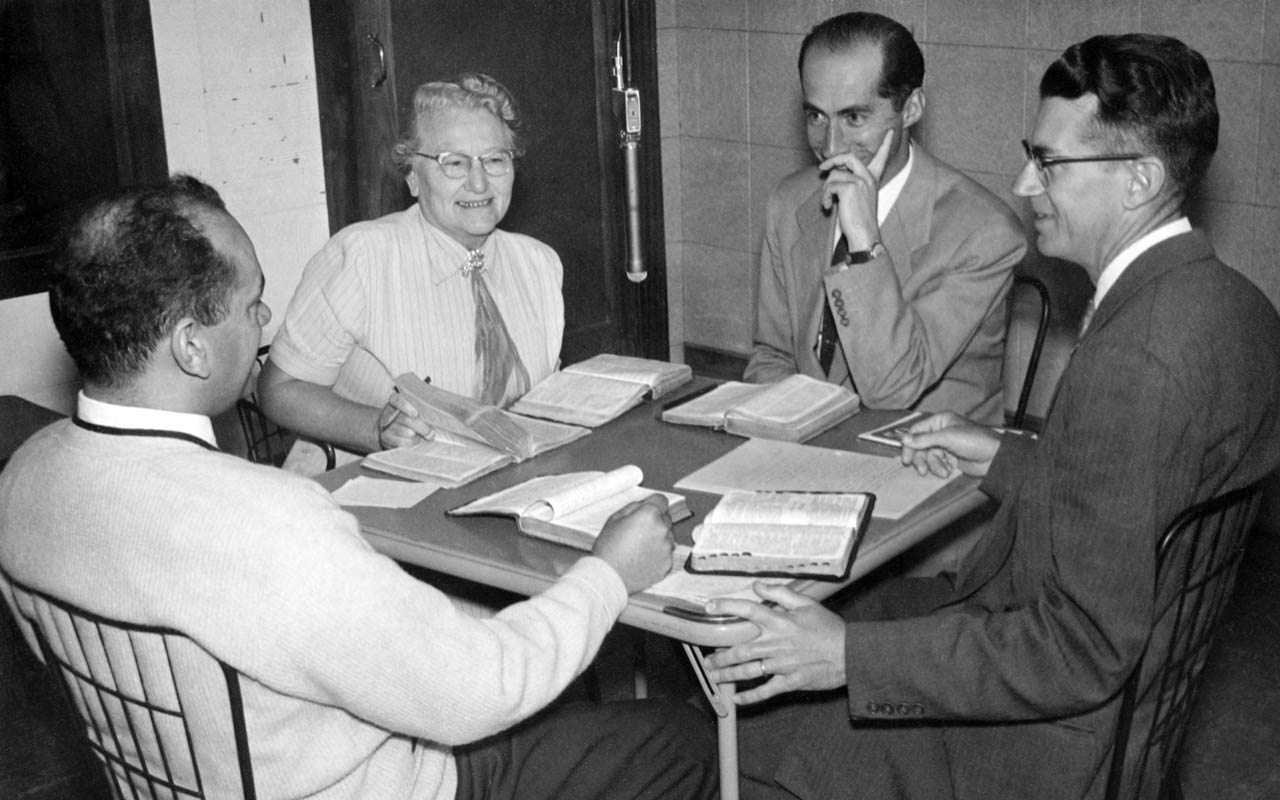 |
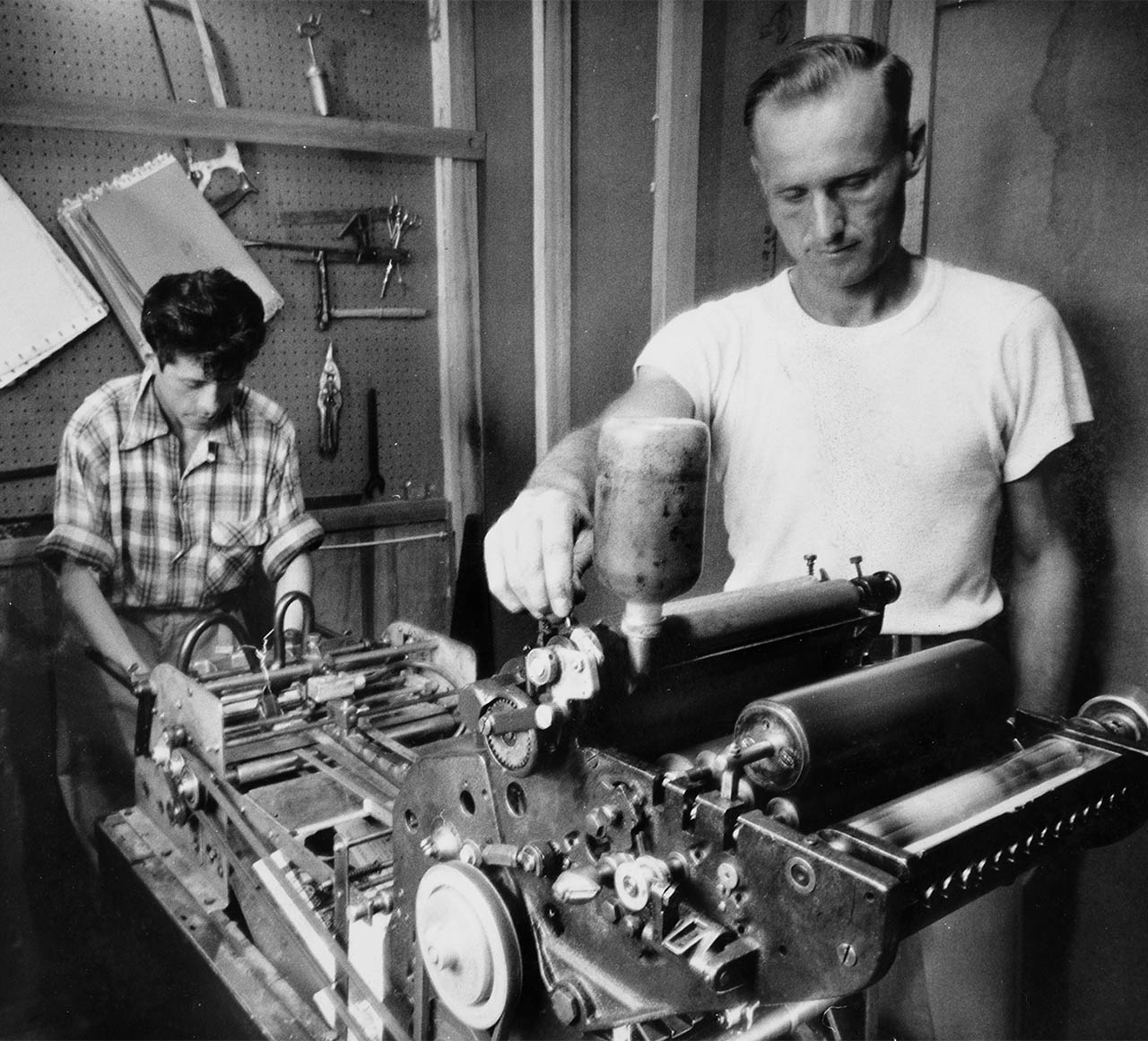 |
"We need more Bible Training" was the plea Clarence Jones heard during his five-month survey of 21 Latin American countries in 1945.
In 1949 the mission began the Academia Cristiana del Aire (Bible Institute of the Air) to help provide Bible and theological training through radio programs and correspondence courses.
Thousands of Latin Americans completed the courses. Students included pastors and lay pastors (who had no other access to formal training), church leaders, and many prison inmates.
In Cuba, unbeknownst to HCJB, some churches created copies of BIA materials so that students could complete the coursework. Local Cuban pastors would then review and grade their answers.
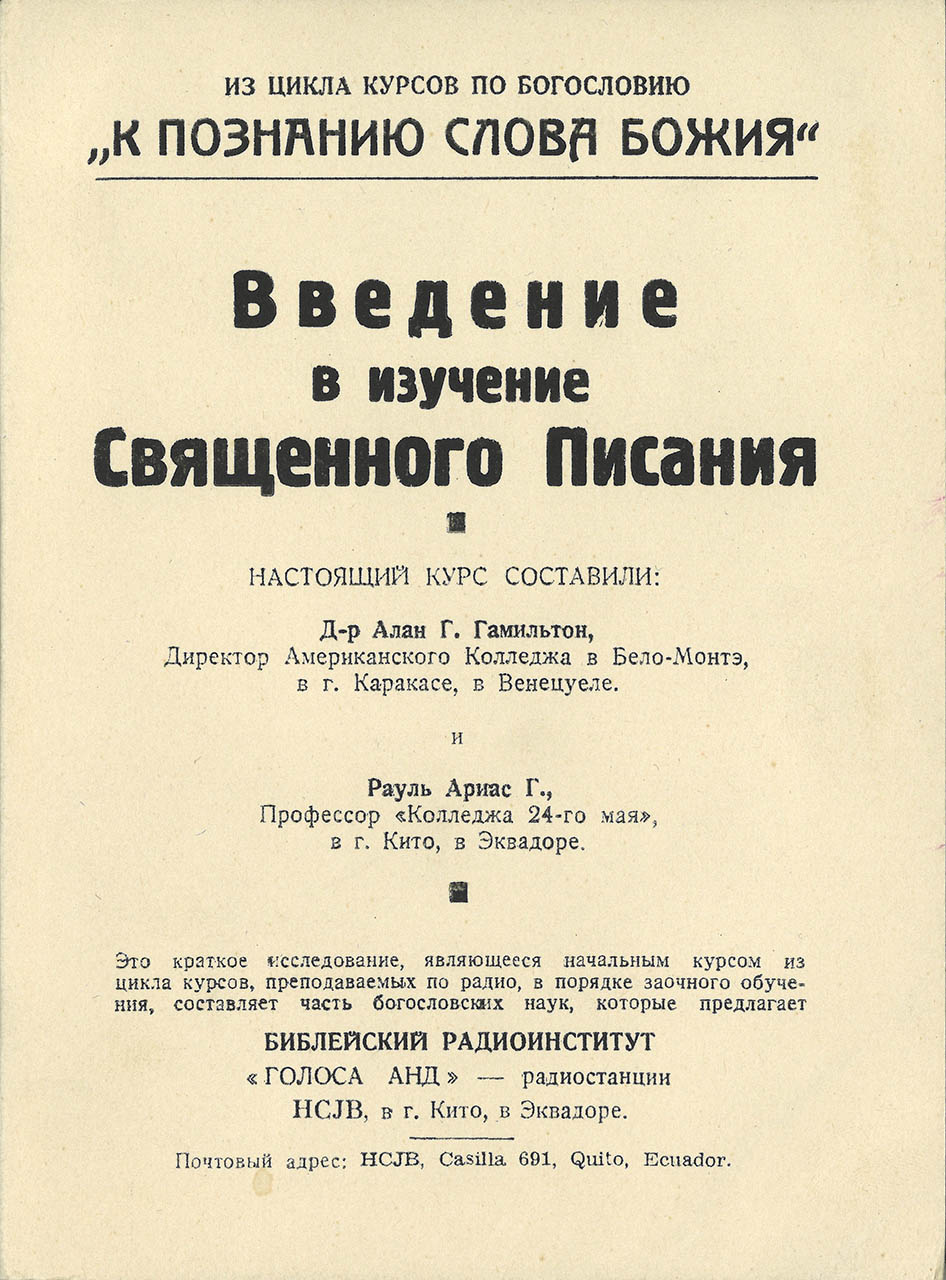 |
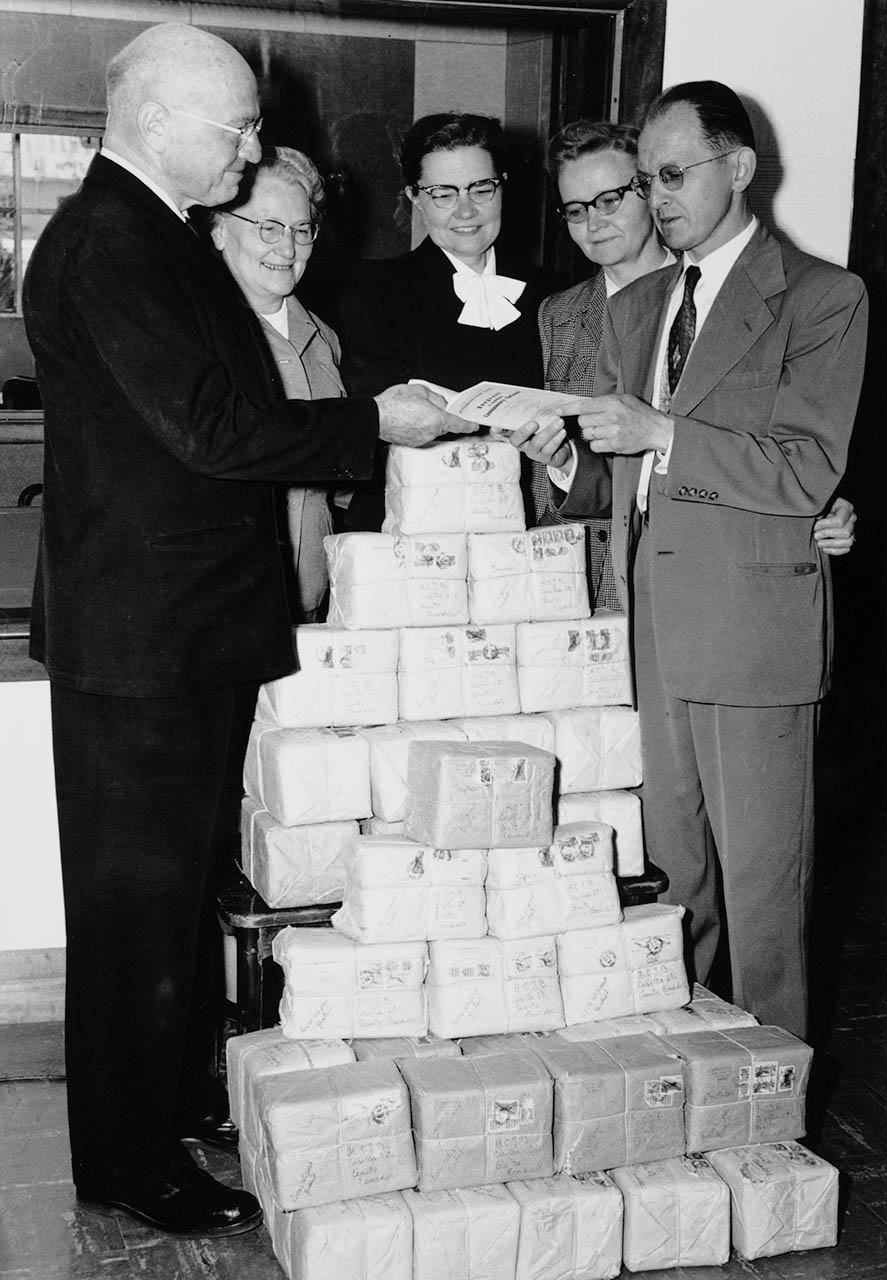 |
|
Next: 1949 - The beginning of missionary medicine in Ecuador. |
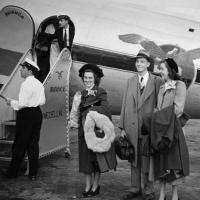

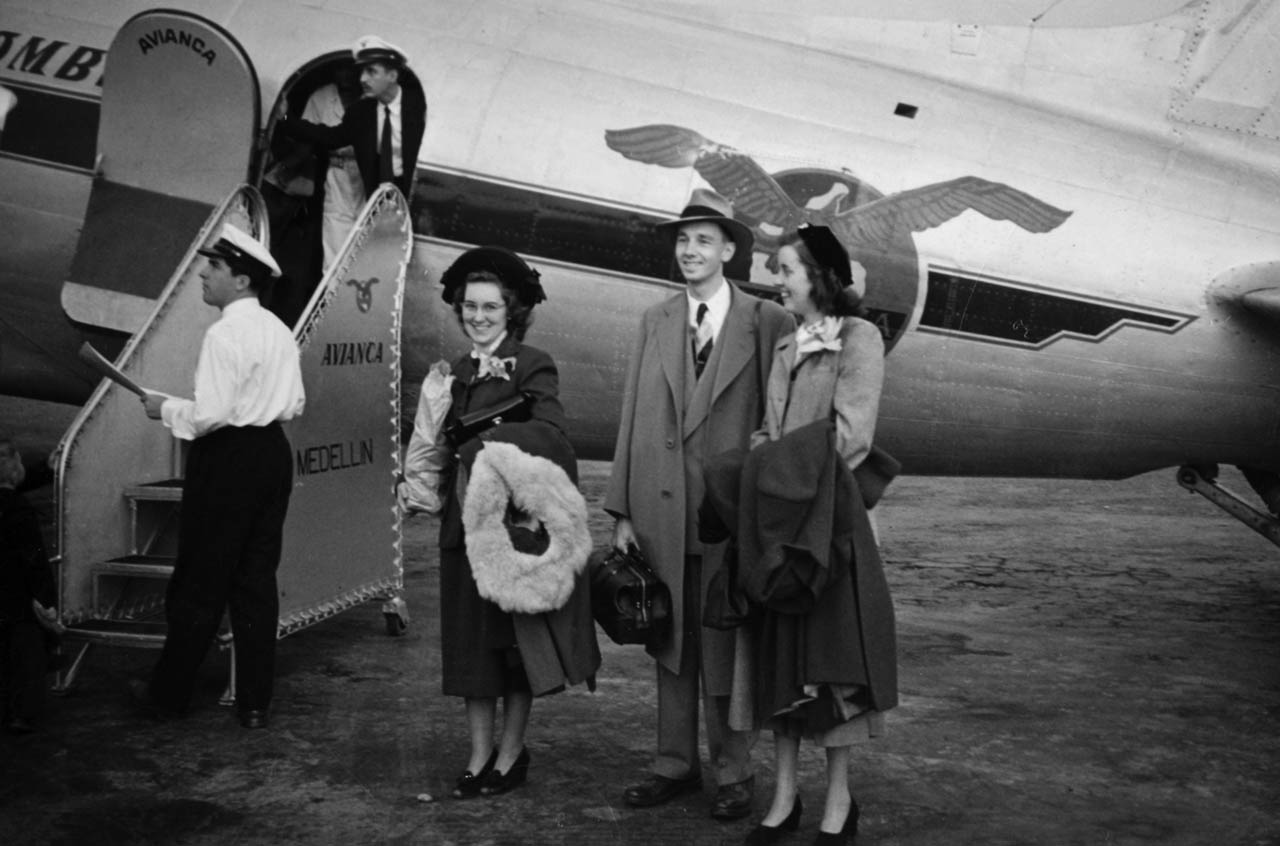 |
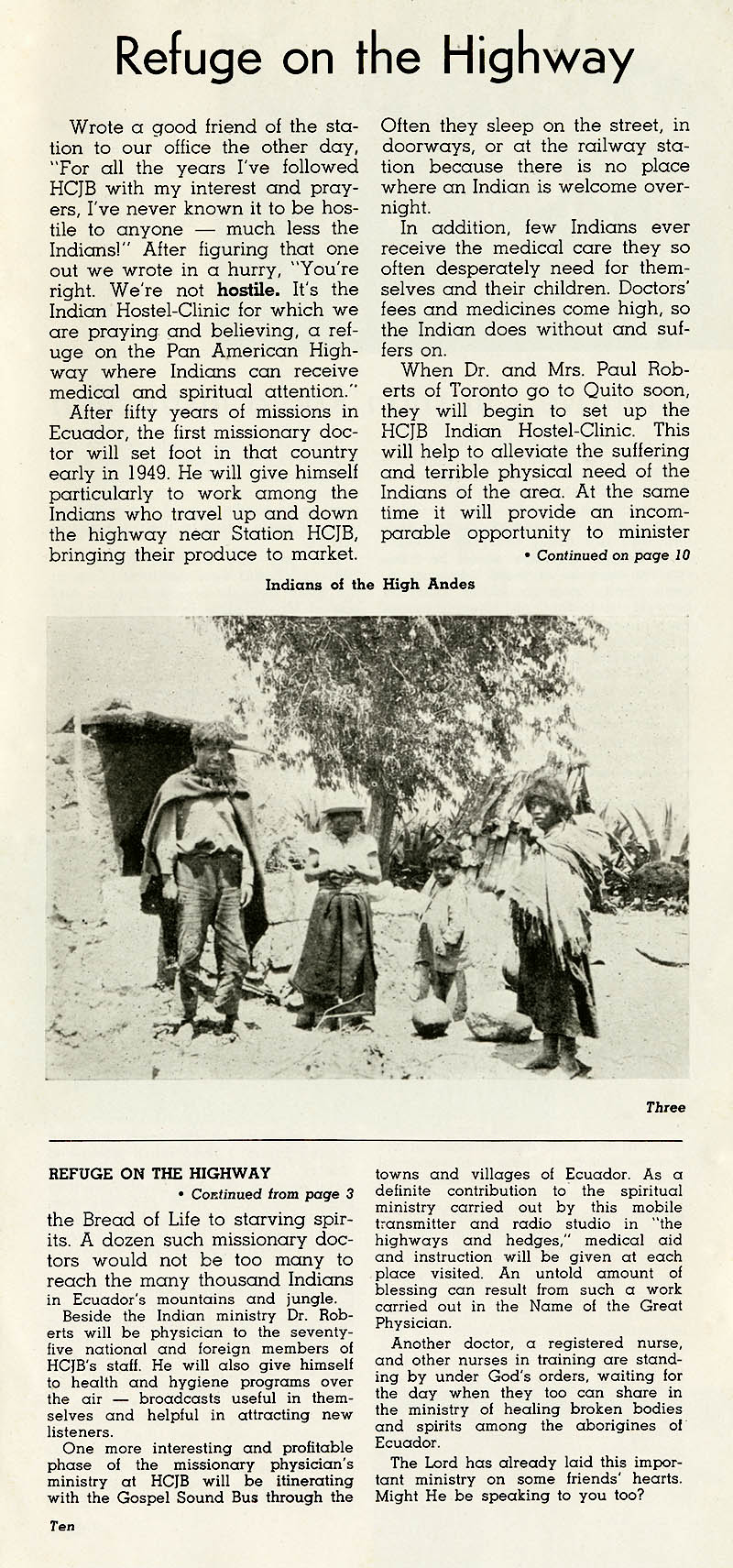 |
Clarence Jones and Reuben Larson desperately wanted a missionary doctor in Quito. Both had lost children shortly after birth in Ecuador—which they believed would not have happened if a missionary doctor had been present.
They went to every missionary organization in Ecuador and asked them to start a medical work, but all declined.
Still convinced of the need, Clarence and Reuben prayed for many years. God answered. Radio Station HCJB would begin missionary medicine in Ecuador.
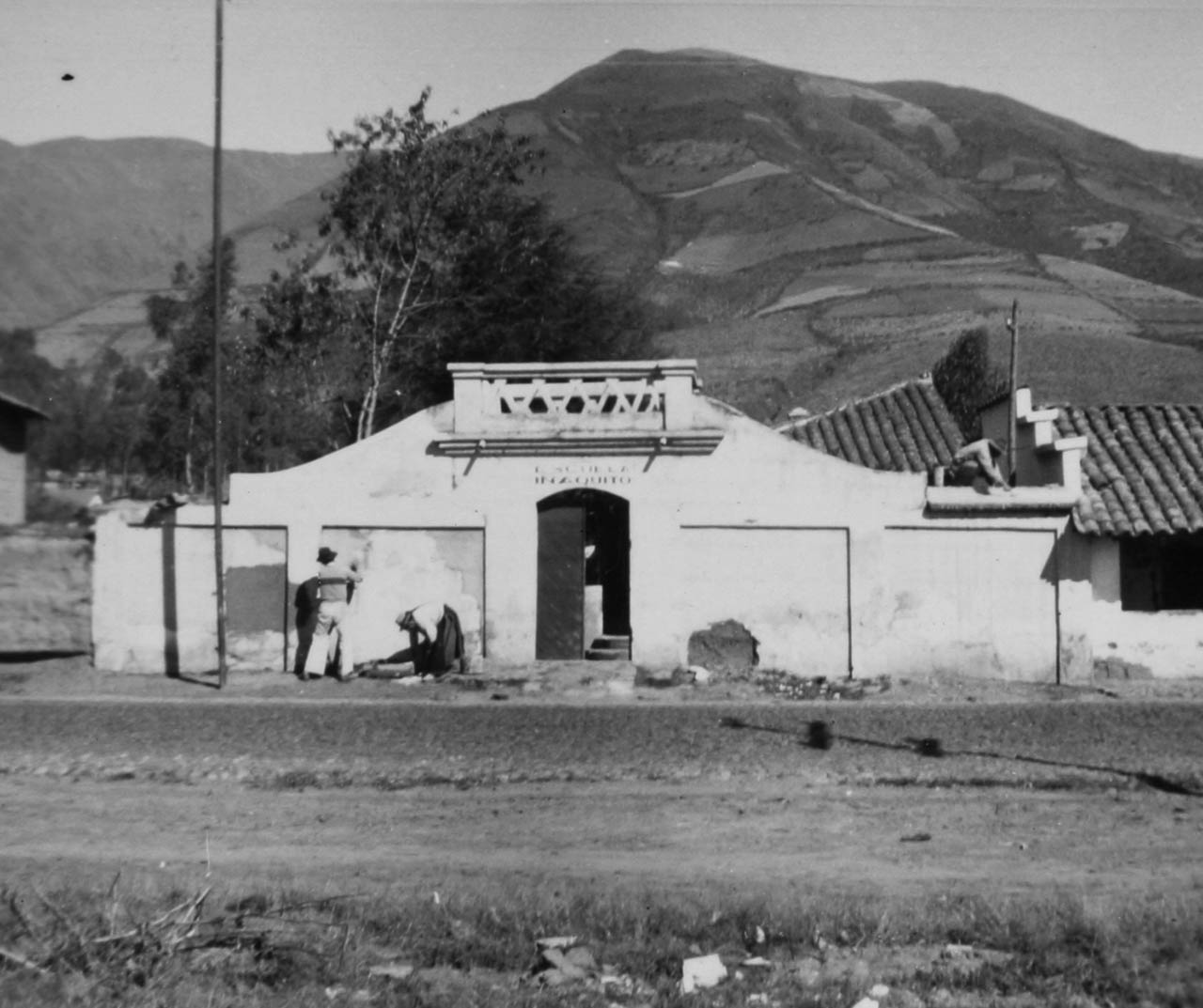 |
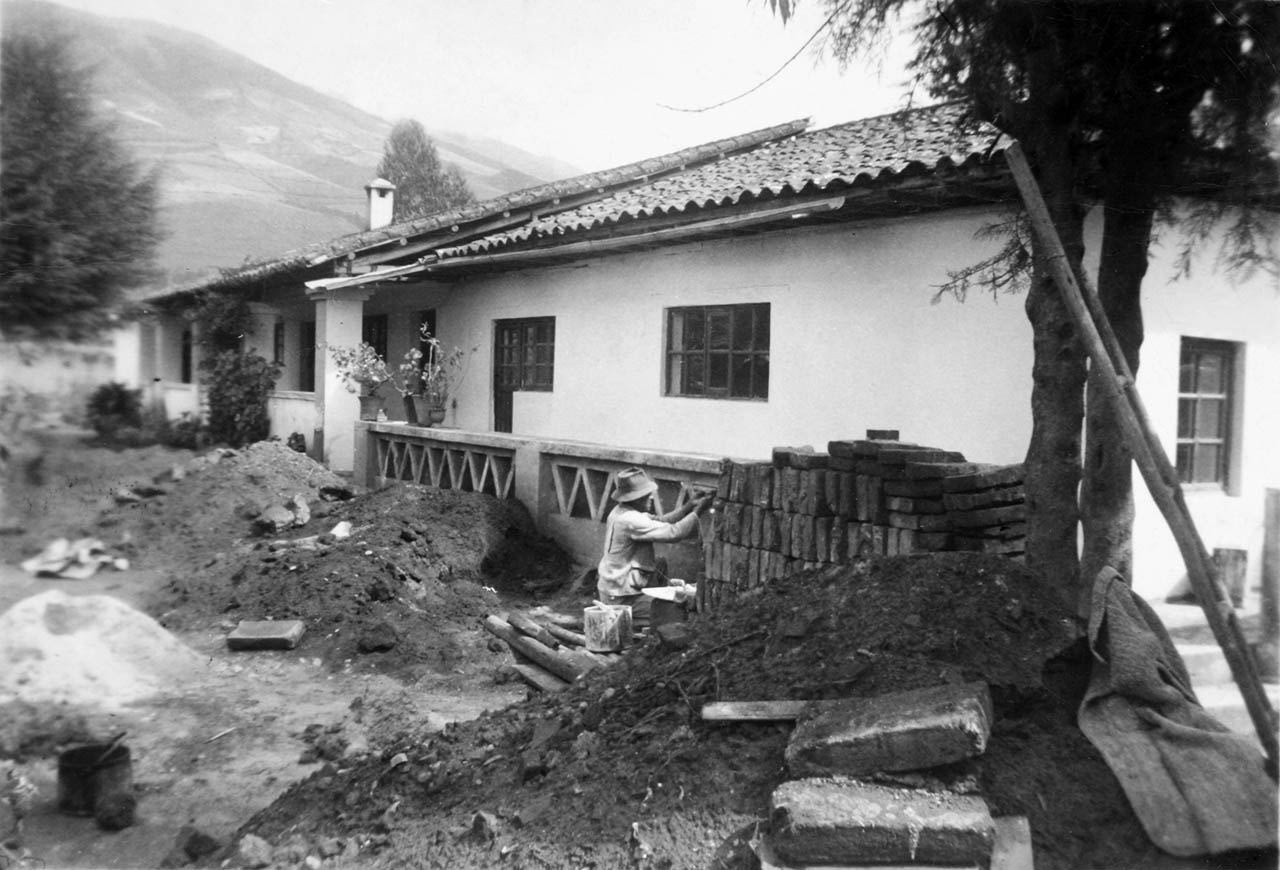 |
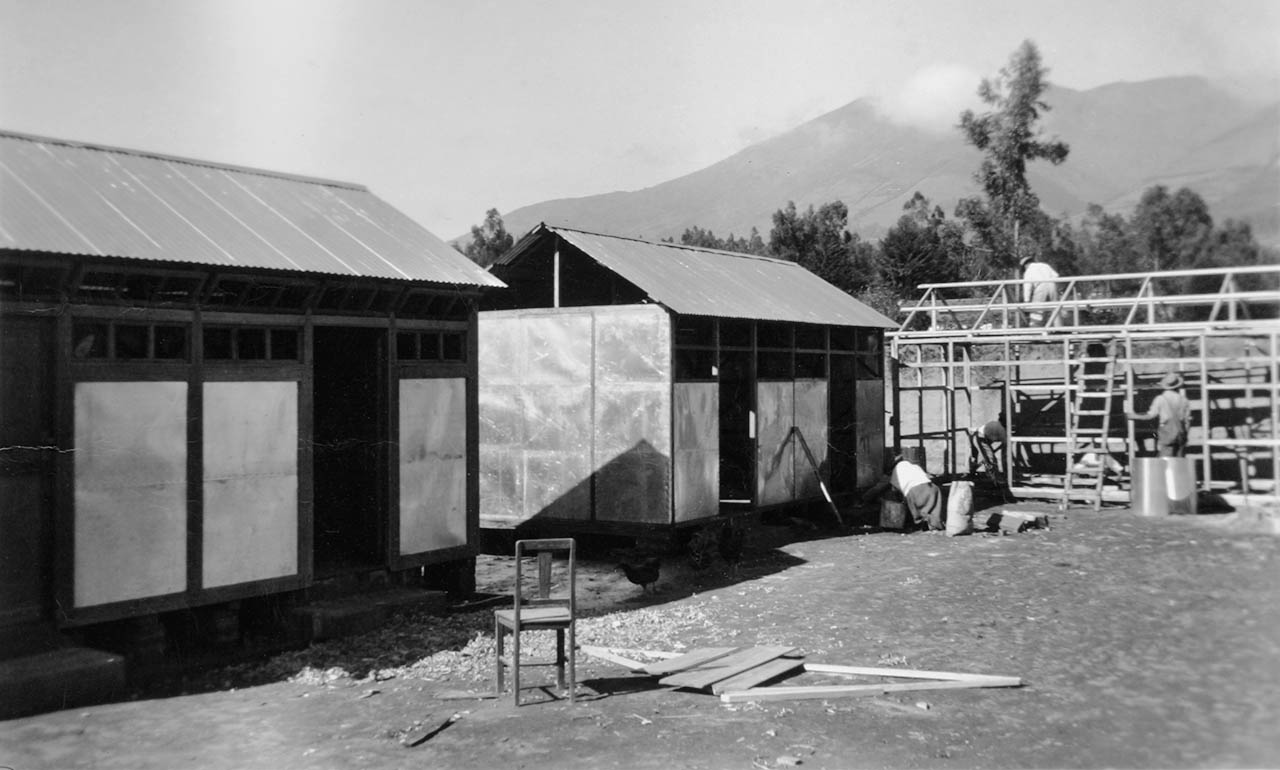 |
|
Next: 1950 - Medical Clinic and Indigenous Hostel |
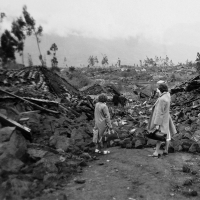
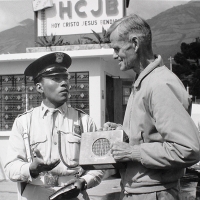
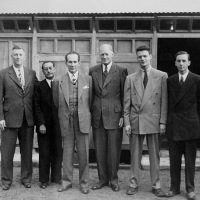

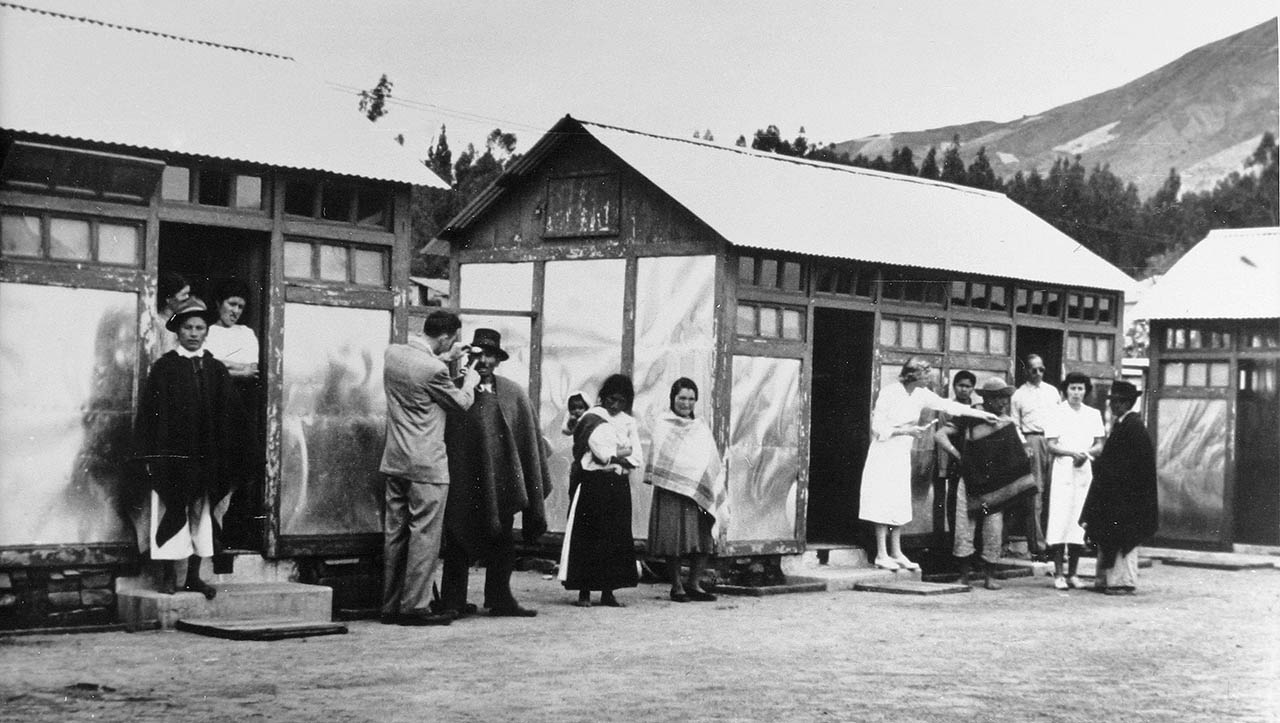 |
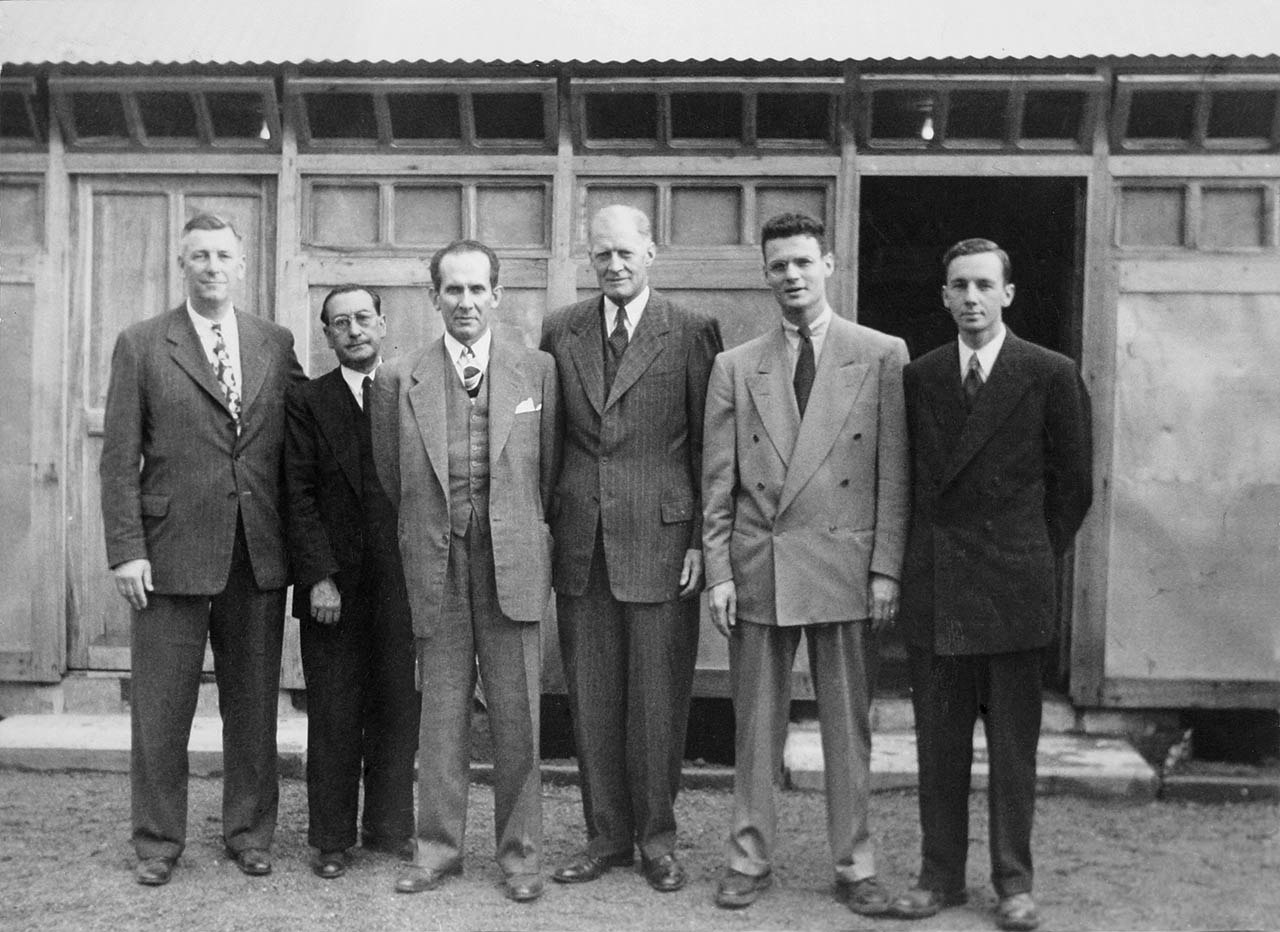 |
HCJB's medical clinic and indigenous hostel was officially inaugurated on April 28, 1950 with the U.S. Ambassador and the Ecuadorian Minister of Social Welfare in attendance.
For one Sucre, indigenous Ecuadorians had a safe and sheltered place off the streets to spend the night. And the clinic offered them basic medical care—something they otherwise had no real access to at the time.
The clinic also served Ecuadorians living around the station. However, the limitations of a small medical clinic was soon apparent as staff faced needs they could not meet with their humble facilities.
Dr. Roberts began plans for a fully equipped modern medical facility where everyone could receive the best care, regardless of their ability to pay. This dream would lead to the construction of Rimmer Memorial Hospital, now known as Hospital Vozandes Quito.
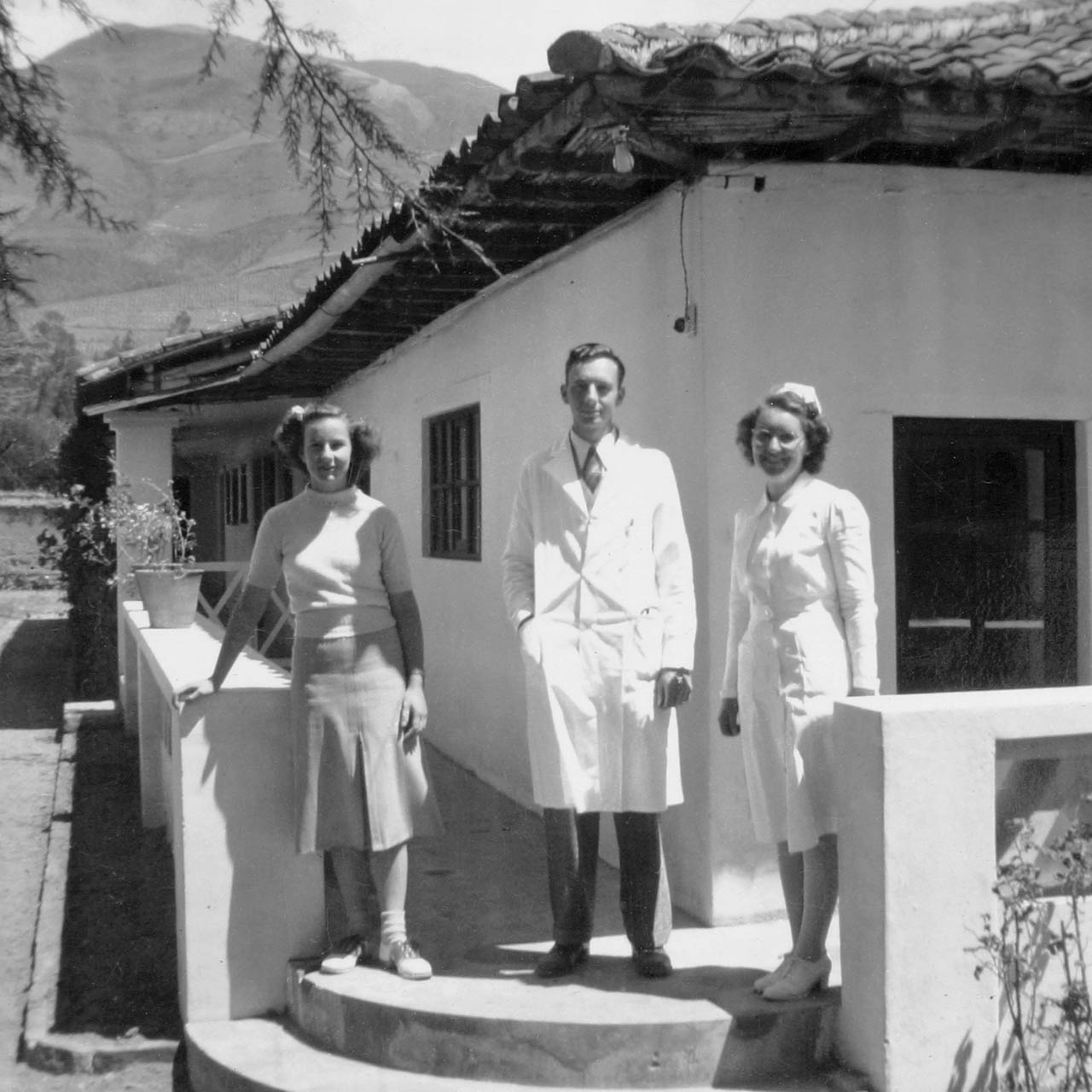 |
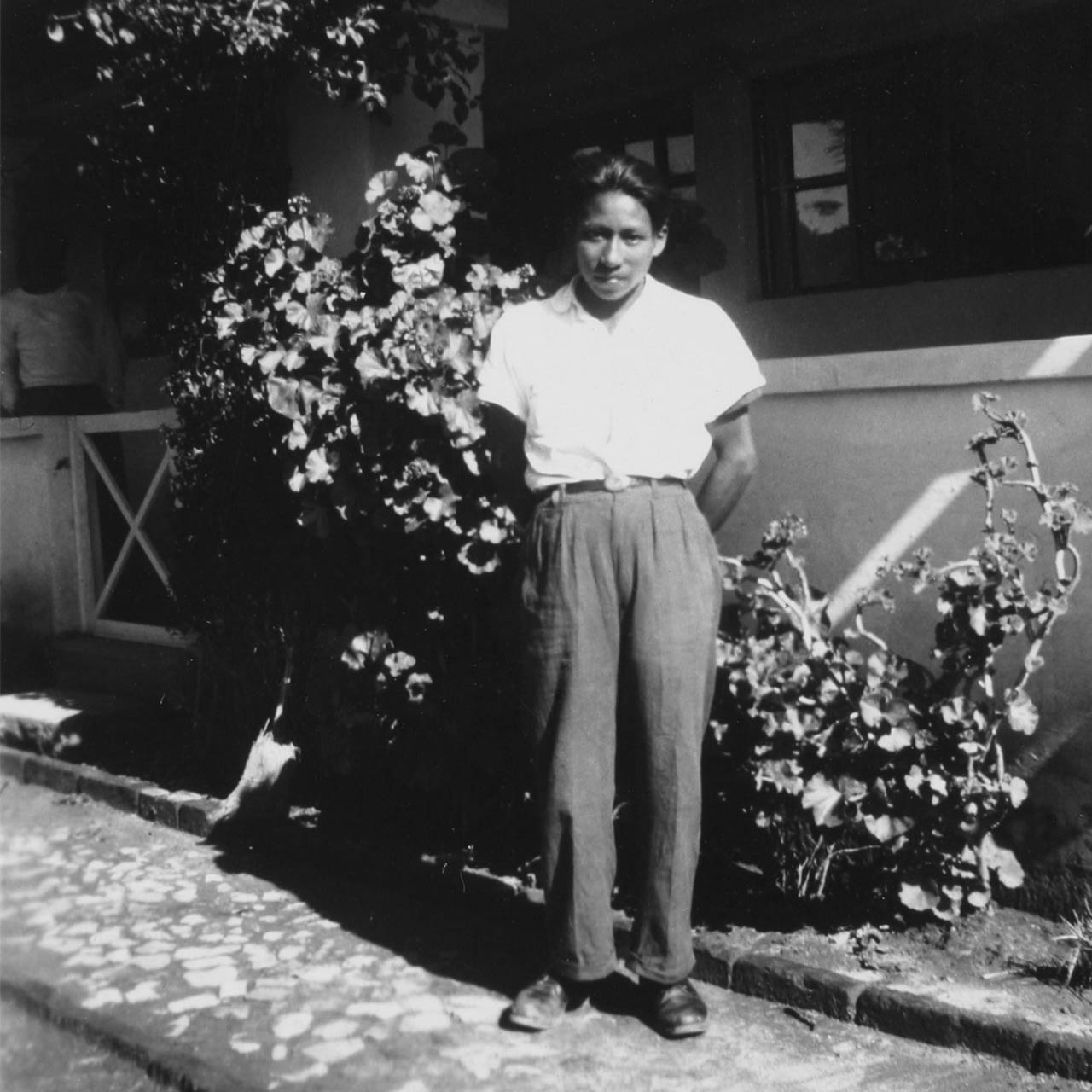 |
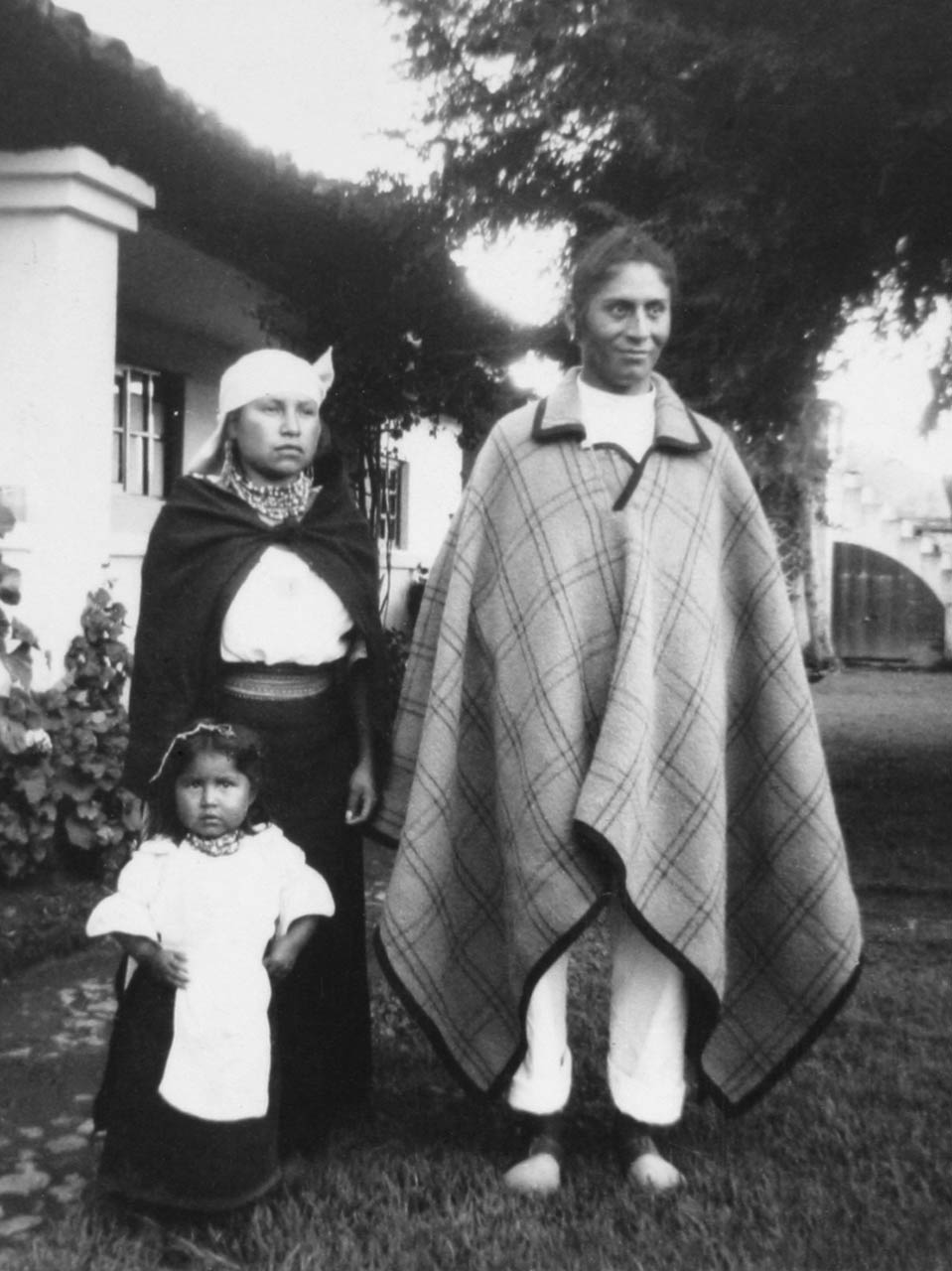 |
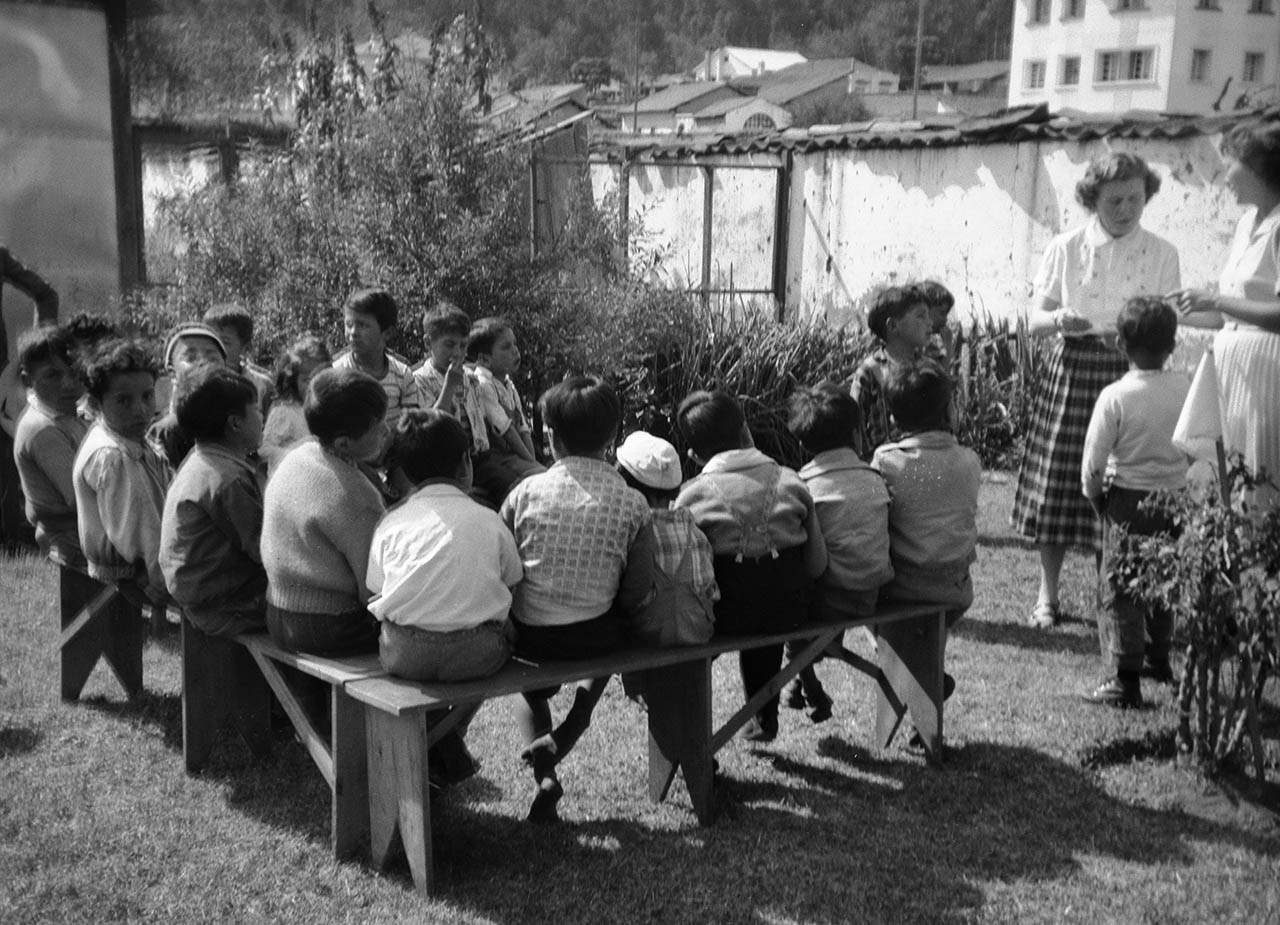 |
|
|
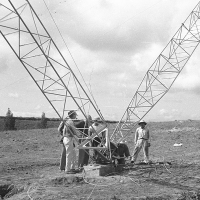
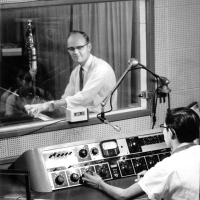
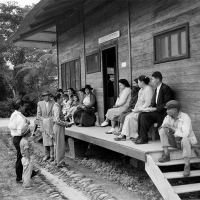

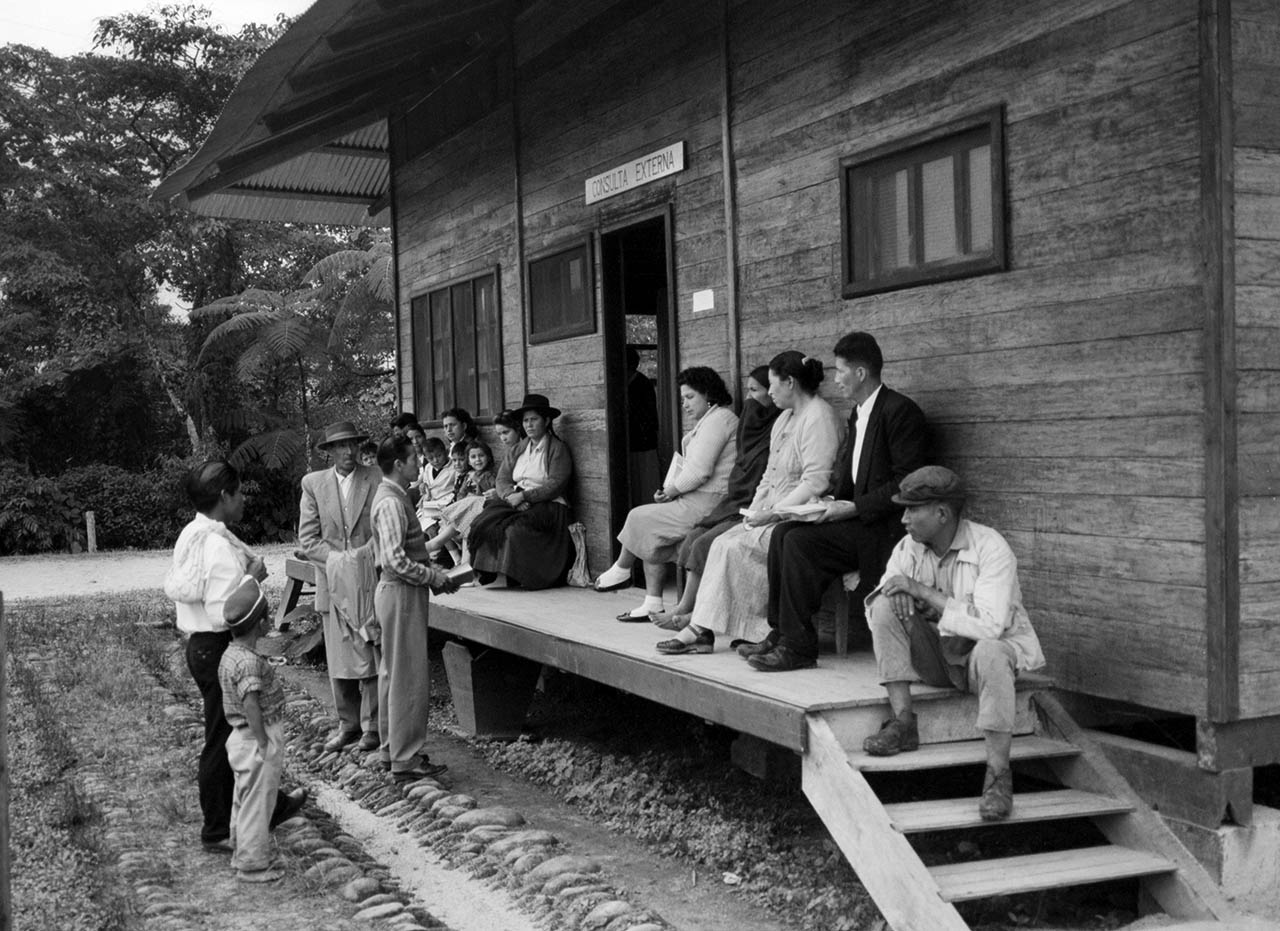 |
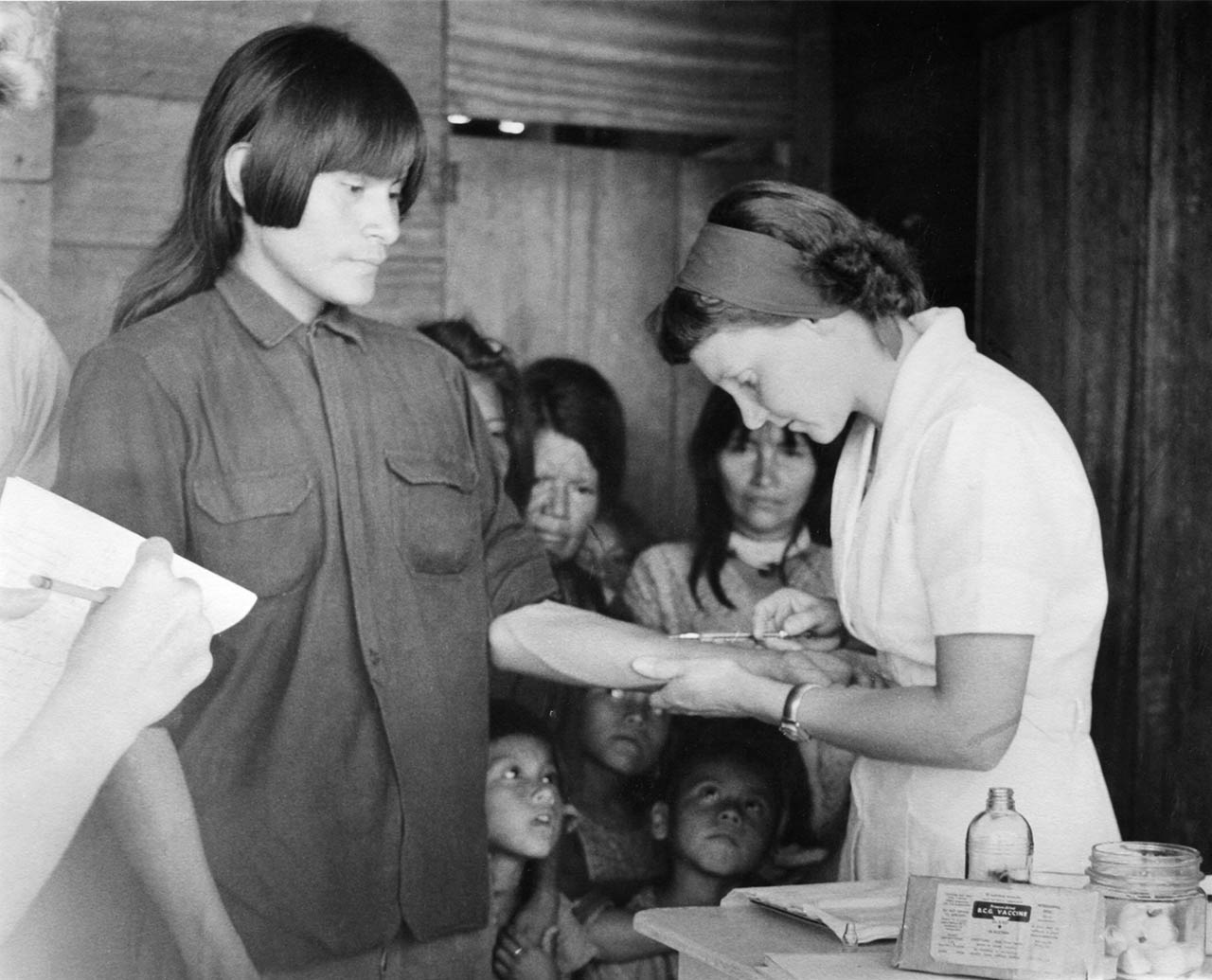 |
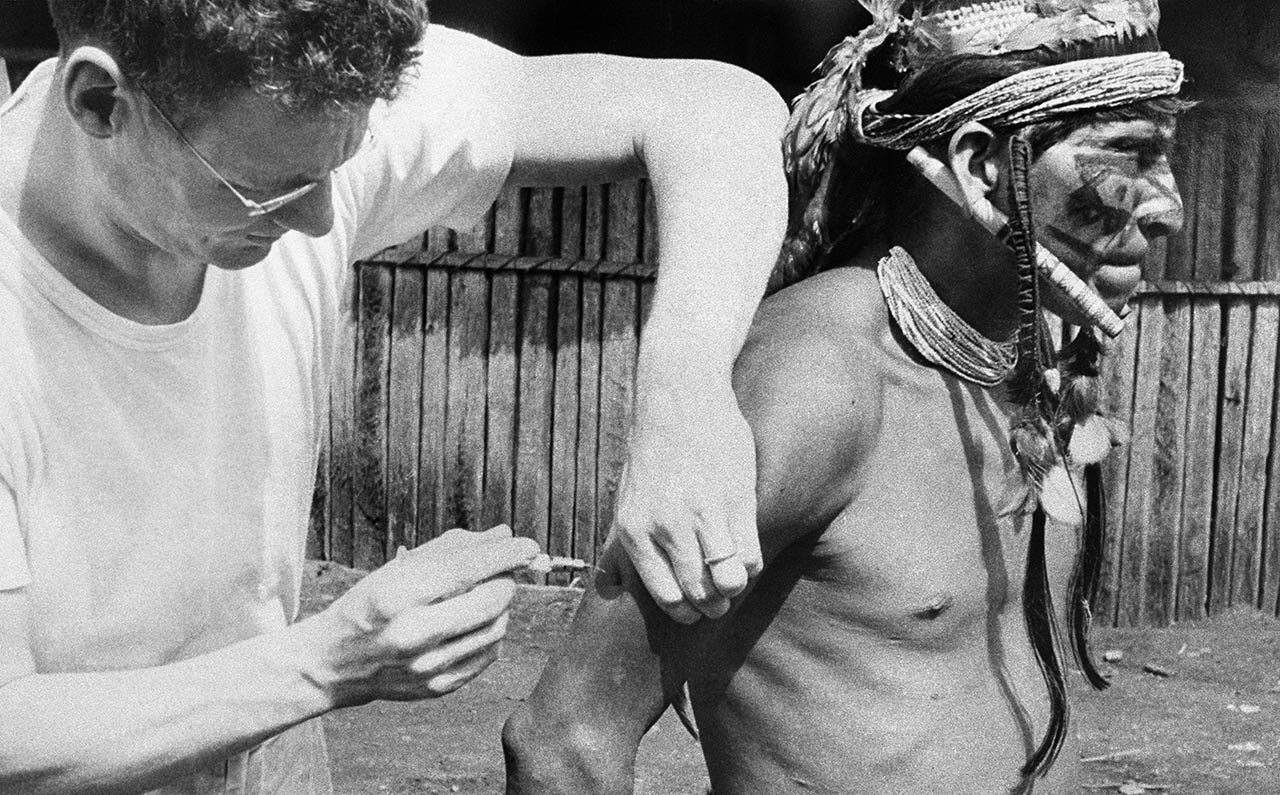 |
Shortly after Dr. Ev Fuller arrived in Quito in 1950, he met Mission Aviation Fellowship pilot Nate Saint. Nate told him about the incredible medical needs of the people living in the Ecuadorian rain forest. It was then that Dr. Fuller knew God was leading him to begin a medical ministry to the people of Ecuador's Amazon Region.
For the first few years, Dr. Fuller and Dr. Roberts alternated in taking medical caravan trips where they flew to mission stations and communities in the region. But the need was much greater.
In 1953, the mission approved a plan to build a mission hospital in Shell. Dr. Fuller had responsibilities in Quito, so he would travel down to Shell every chance he could get.
They began building a small clinic in 1954 at the site of the future hospital. Local missionaries like Nate Saint helped with construction of the clinic, and Jim Elliot did the electrical wiring. Dr. Fuller and his family moved to Shell that December, and the clinic opened a few months later.
The clinic’s small size presented obvious challenges. A nearby hotel was used as a makeshift hospital ward for recovering surgical patients, or those needing extended or overnight care. A local taxi functioned as an ambulance—providing transportation between the clinic and the hotel.
Students from the neighboring Gospel Missionary Union Seminary served as chaplains, sharing God’s Word and praying with families who gathered at the clinic.
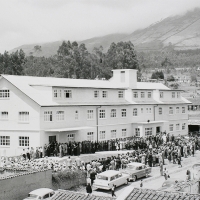
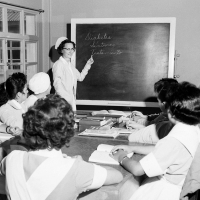
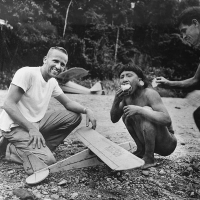
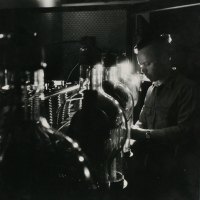
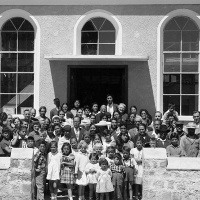
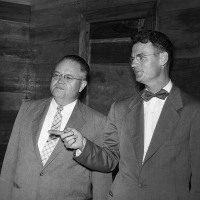
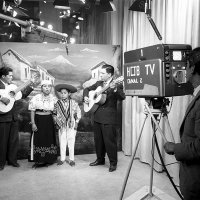

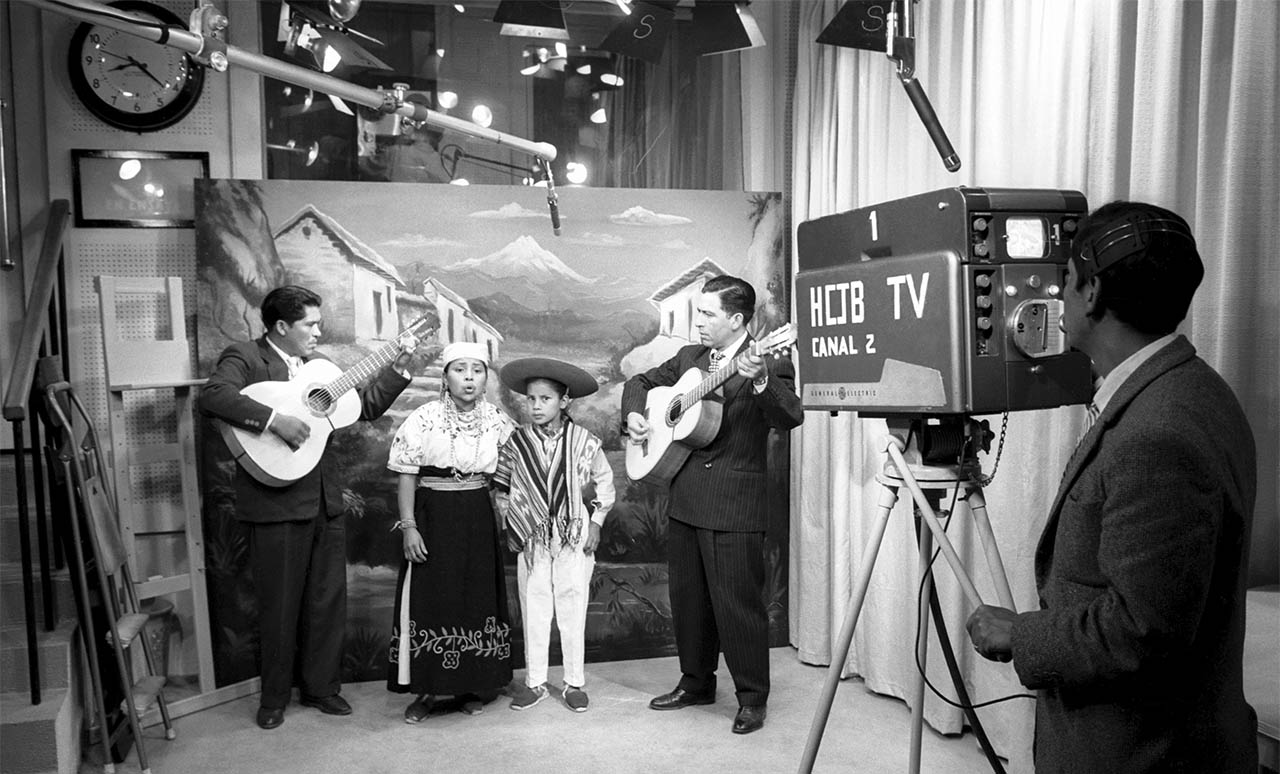 |
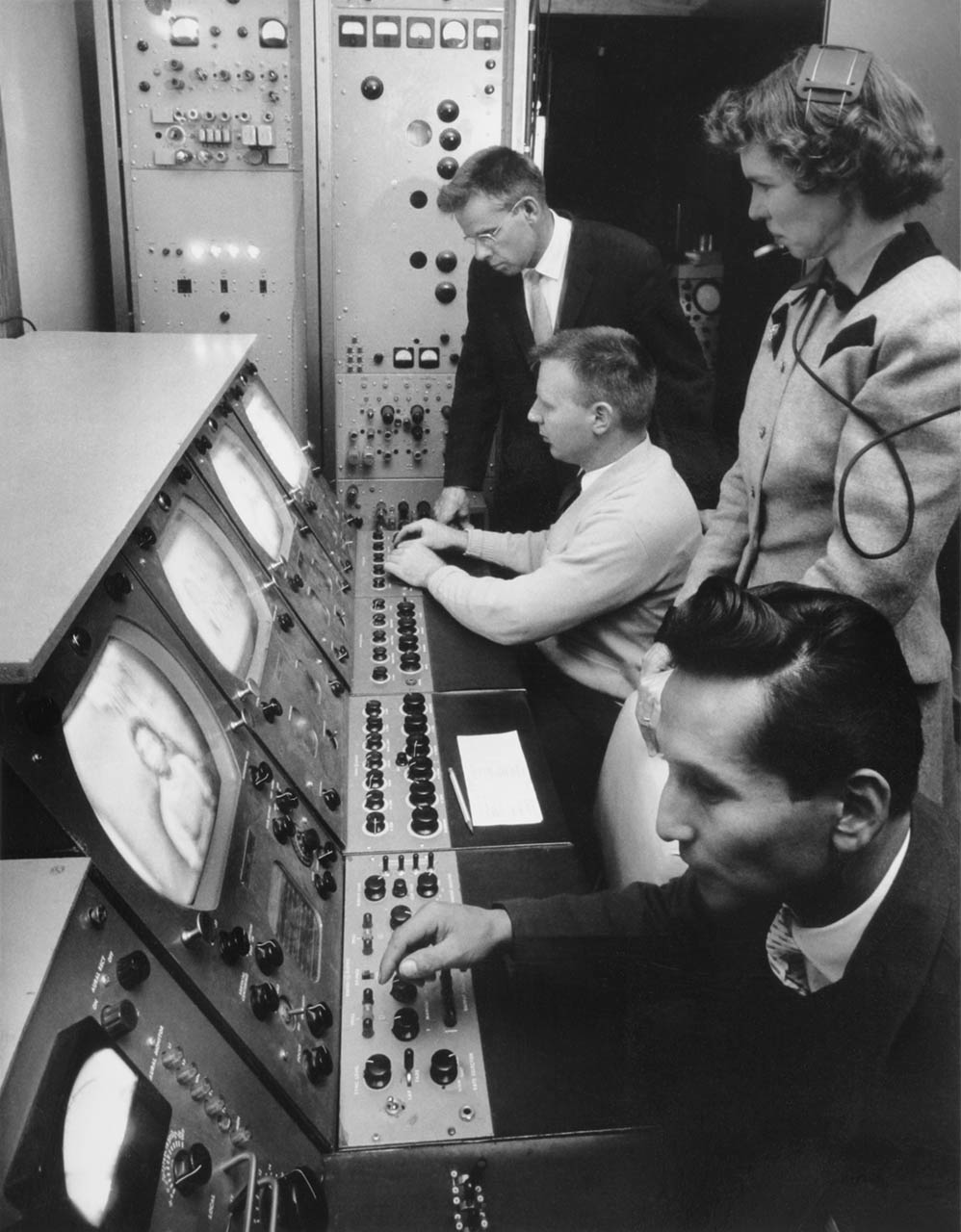 |
One Man's Scrap is Another Man's Treasure
Giff Hartwell was a radio and TV technician /engineer who dreamed of using TV to share Christ on the mission field.
One day Giff heard about some television equipment that General Electric (GE) was about to scrap, so he went and made an offer to buy it. Giff would eventually purchase thousands of pounds of more television equipment at scrap prices. The GE plant gave him access to their machine shop during lunch hours, and GE engineers gave him advice and access to drawings. Seven other companies made and donated special parts.
With a total outlay of just $1,800 plus some 2,000 hrs of work, Giff was able to compile enough equipment in his garage for two TV stations. He contacted HCJB asking if the mission would be interested. The mission replied they would be, if Gif joined the mission and came to Ecuador to help start the station.
Pioneering Missionary Television
Just as HCJB had pioneered missionary radio in 1931, the mission pioneered missionary television in 1959. HCJB-TV "La Ventana de los Andes" (The Window of the Andes) was also the first television station to go on the air in Ecuador.
Some 250 Television sets were already in the country before HCJB aired its first broadcast. Families gathered in homes, in restaurants, or any where they could, to watch the several hours of live programming aired each night.
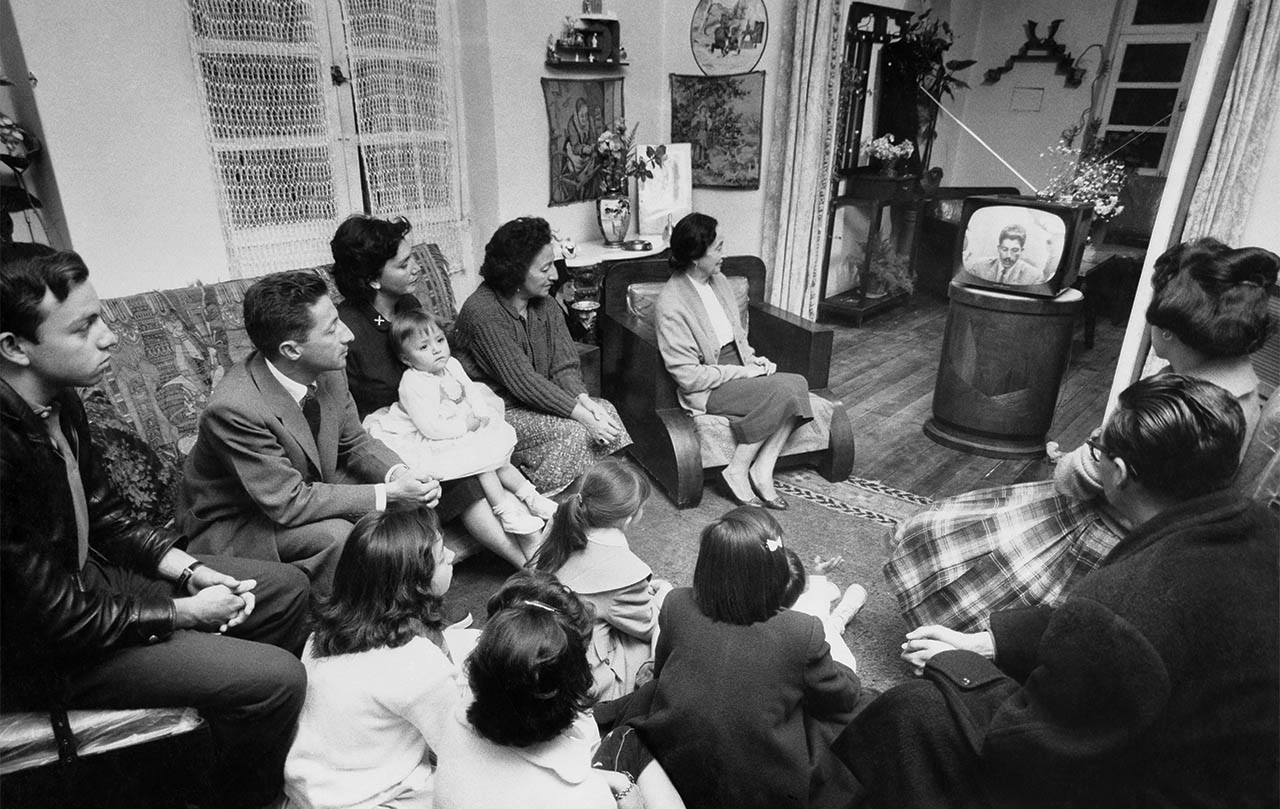 |
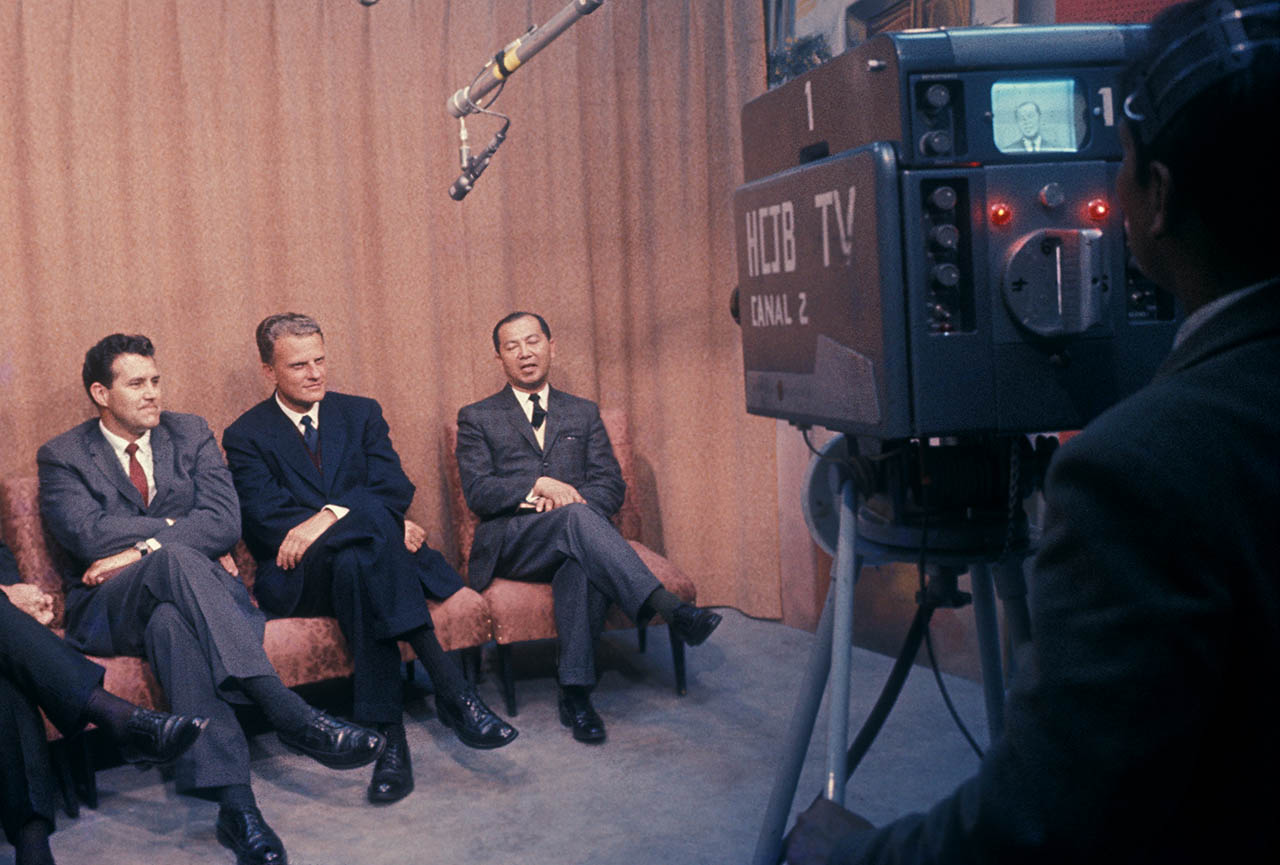 |
Operating a television station in Ecuador was challenging from the beginning. There were many delays and difficulties in getting official permissions to go on the air. The station aired regular "test" broadcasts while it waited for an official license to be granted. Interference between Ecuadorian police & military communications systems and the TV signal forced HCJB to change frequencies from channel 2 to channel 4.
But God did many wonderful things through the television station.
Well known local and international evangelists appeared on HCJB-TV including Billy Graham, Hermano Pablo and Luis Palau. A live TV telephone call-in show with Luis Palau led to a conversation that literally stopped a revolution (read more). Many people came to know the Lord and one church was started as a direct result of the station's ministry.
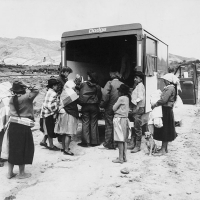
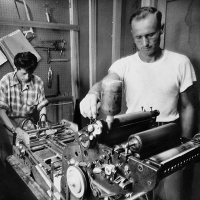
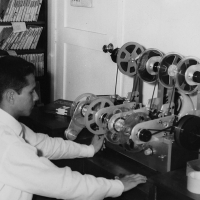
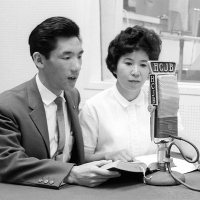

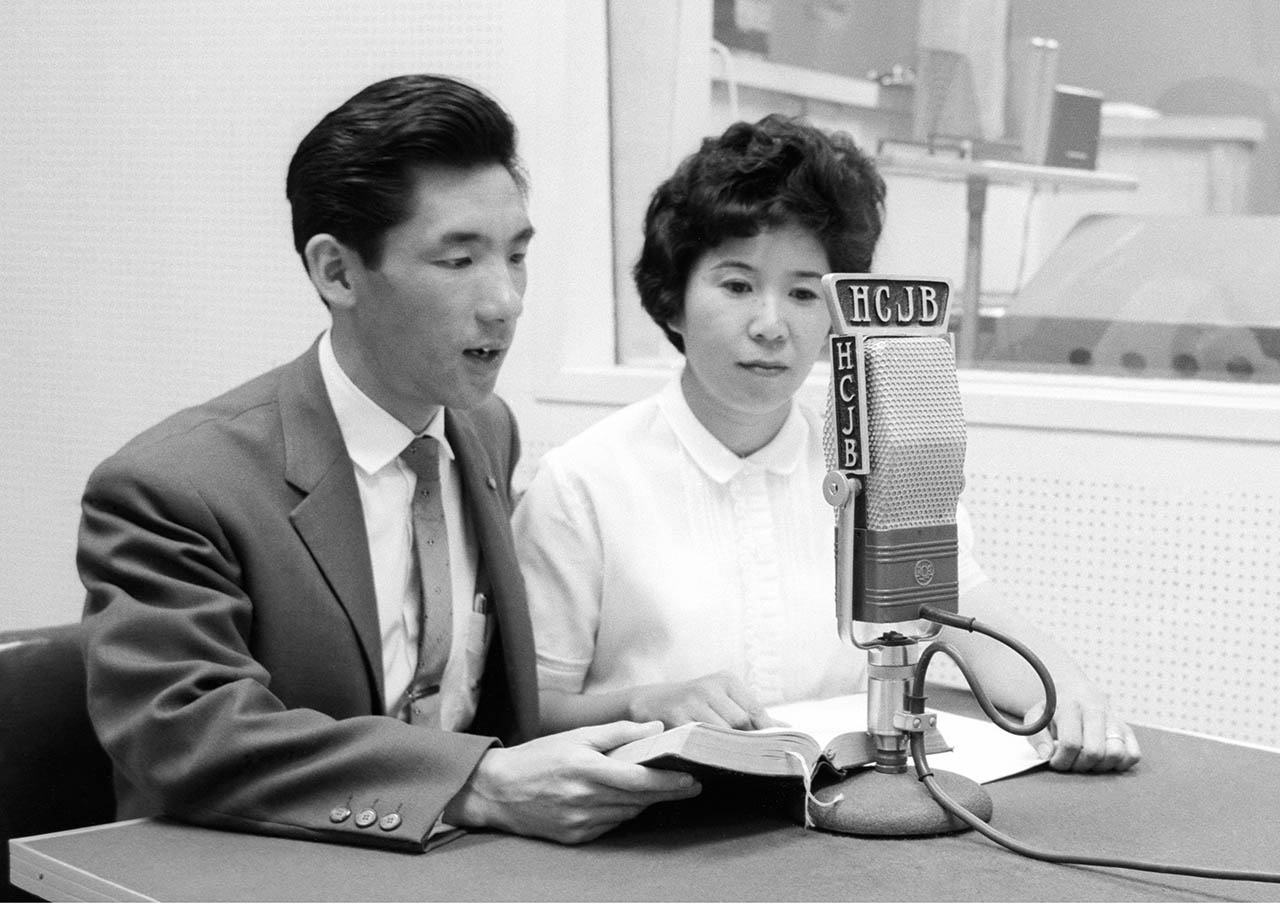 |
HCJB's Japanese broadcasts began as a result of a visit to Quito by Dr. Akira Hatori from the Pacific Broadcasting Association. Dr. Hatori was visiting Japanese immigrants in Brazil. He knew that HCJB was broadcasting in programs like Russian and German, so he wondered why not Japanese. Dr. Hatori visited the station in Quito, Ecuador and asked if HCJB would broadcast Japanese programs to the millions of Japanese immigrants living throughout South America. Not surprisingly, the HCJB said they would, if Dr. Hatori provided the programs. Once back in Japan, Dr. Hatori asked Kazuo Ozaki to begin recording programs for HCJB on reel-to-reel tapes which were then mailed to Ecuador. HCJB began airing these programs in 1962.
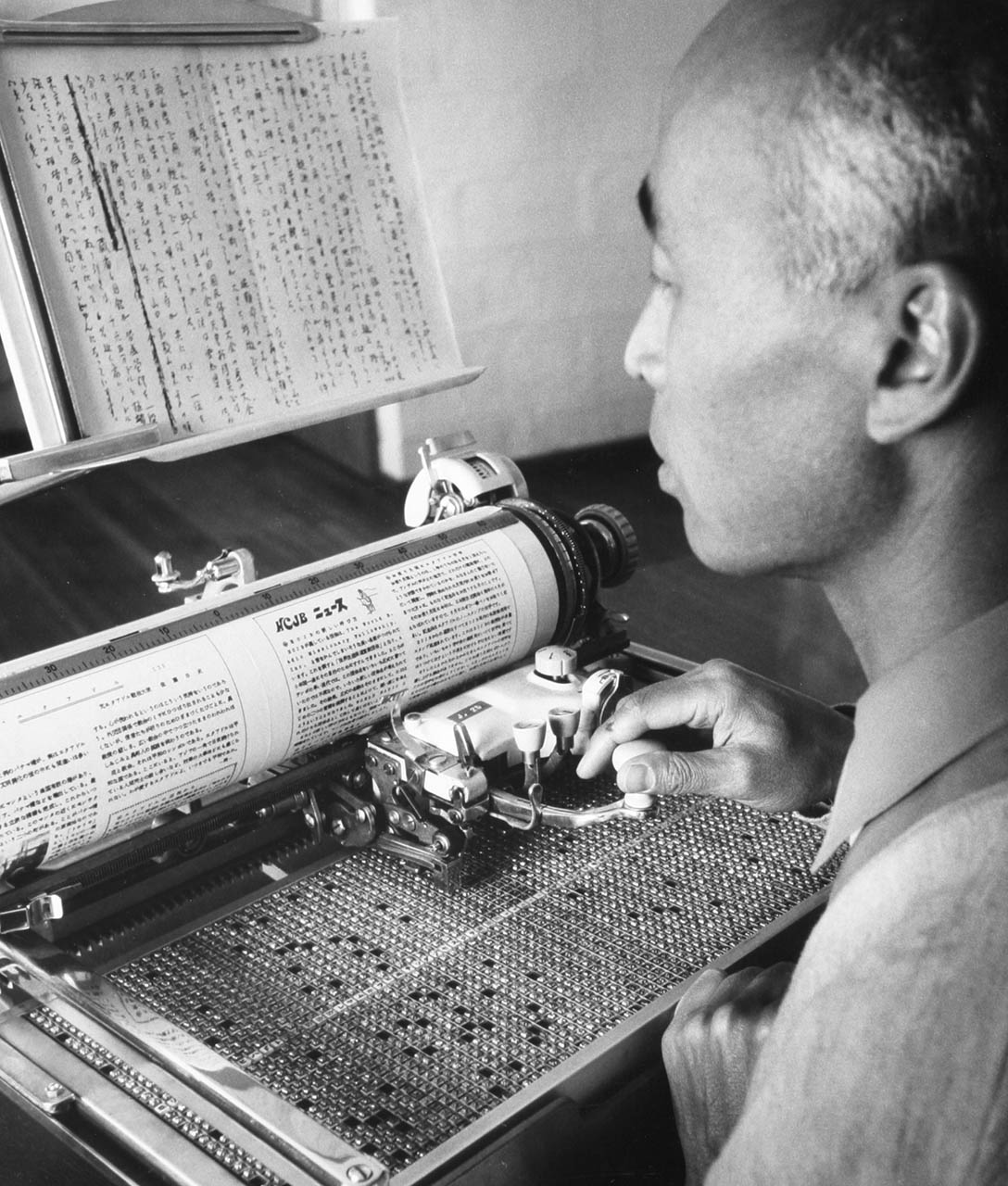 |
One day missionary Hardy Hayes happened to walk by the HCJB’s program control room and heard a very odd program being aired. So he asked the operator what language it was. The operator said it was Japanese. In God's divine providence, Hardy had briefly served as a missionary in Japan, so he immediately recognized there was a problem. The tapes were being played backwards.
Kazuo Ozaki remembers:
"About a month later, we received a letter from HCJB sharing challenges they were facing in using taped programs. On one occasion the tape was played backwards but NOBODY noticed it. This could easily happen again. They pleaded for us to not send the tapes, rather someone who could speak the language!
So, who would go? …to South America? …so faraway. …Ecuador? Where is it?
Then, it dawned on me. When I was a seminary student at Japan Christian College, I met Marj Saint who was visiting from Ecuador and presenting the story of the five missionaries killed in the eastern jungles of Ecuador. [including her husband Nate Saint] I had helped translate her slide show. Marj had re-married Abe Van der Puy, who was the president of HCJB at that time. Abe and Billy Graham were classmates at Wheaton College along with Dr. Hoke, the founder of Japan Christian College, another interesting “connection” with HCJB.
Another HCJB connection was Vic Springer, a friend and TEAM missionary. We worked together to plant a church in Kurihama. I was later surprised to hear that his brother, Joe, was a missionary with HCJB in Ecuador.
Isn’t that amazing that God had already surrounded me with HCJB connections. He was putting things in motion for my future.
We left Japan in June of 1963. It was difficult raising financial support from Japanese churches, so we continued raising support for another 6 months in the U.S. Not knowing anybody in such a large vast country felt like Moses might have felt, wandering around in the wilderness. Every night, before we would go to bed, we would sing the song that says, “I don’t know about tomorrow, but I know who holds tomorrow and I know who holds my hand!”
On January 6, 1963, we arrived in Quito. HCJB missionaries and Ecuadorian staff gathered to welcome us. I greeted them with, “Doy gracias a Dios por poder venir al Ecuador!” Robert Savage, the field director, had encouraged me to memorize this phrase in advance. It means, “I give thanks to God for allowing us to come to Ecuador!”.
After meeting Frank Cook, the station manager, I told him that we would need to wait to begin our broadcasts until the program tapes arrived from Japan.
However, instead of tapes, a letter arrived that gave the cost of producing the programs. Frank promptly responded, “We do not buy program tapes, we produce our own programs! Missionaries come from all over the world and broadcast the gospel in their native language to their people back home!”
So, on May 1, 1964, my wife and I found ourselves in front of a microphone. The Japanese ambassador gave a speech and the HCJB choir sang Great is Thy Faithfulness. The studio was filled with missionary colleagues celebrating the first Japanese program made and broadcast from the Andes Mountains.”
By the 1970’s, the Ozaki’s were discouraged by how few letters they got from listeners.
Kazuo cried out to God asking, “Why don’t we get more letters?”
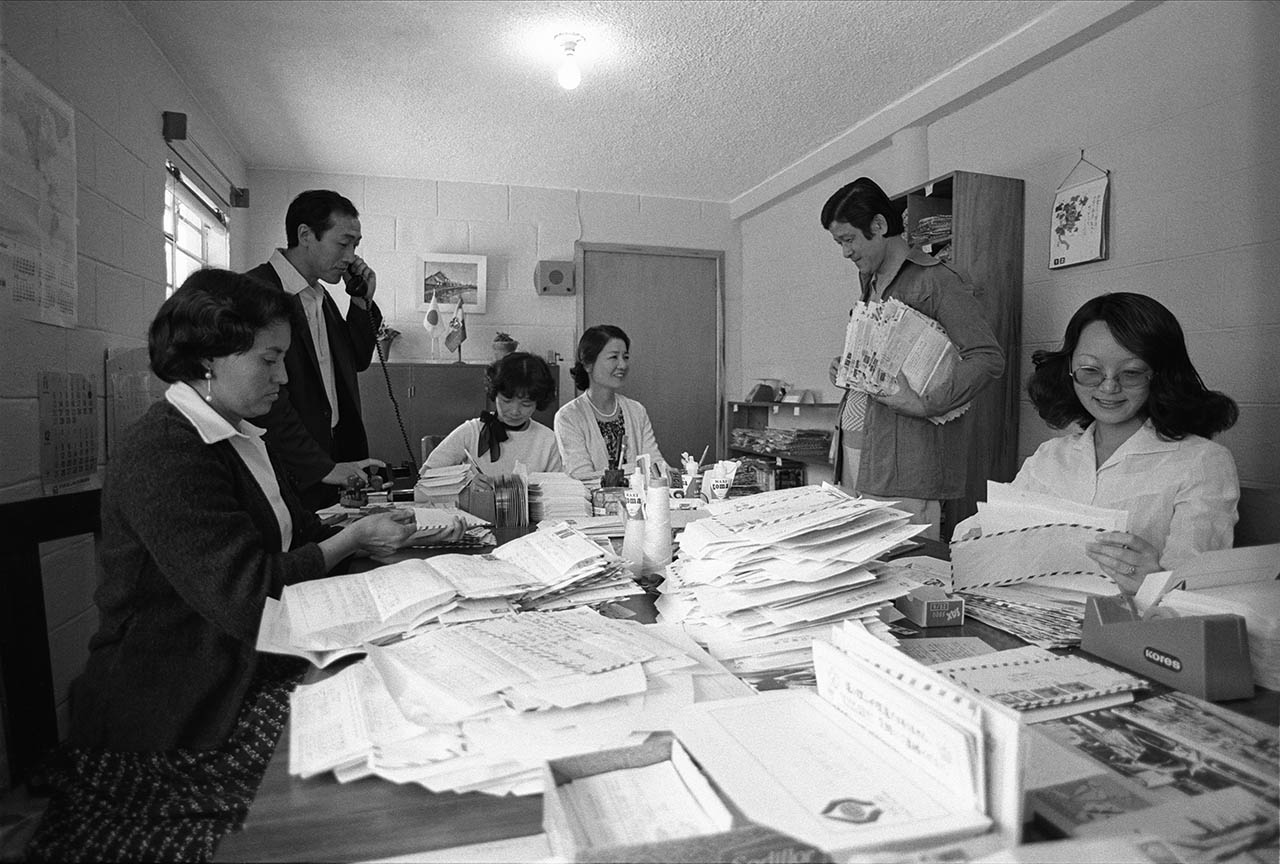 |
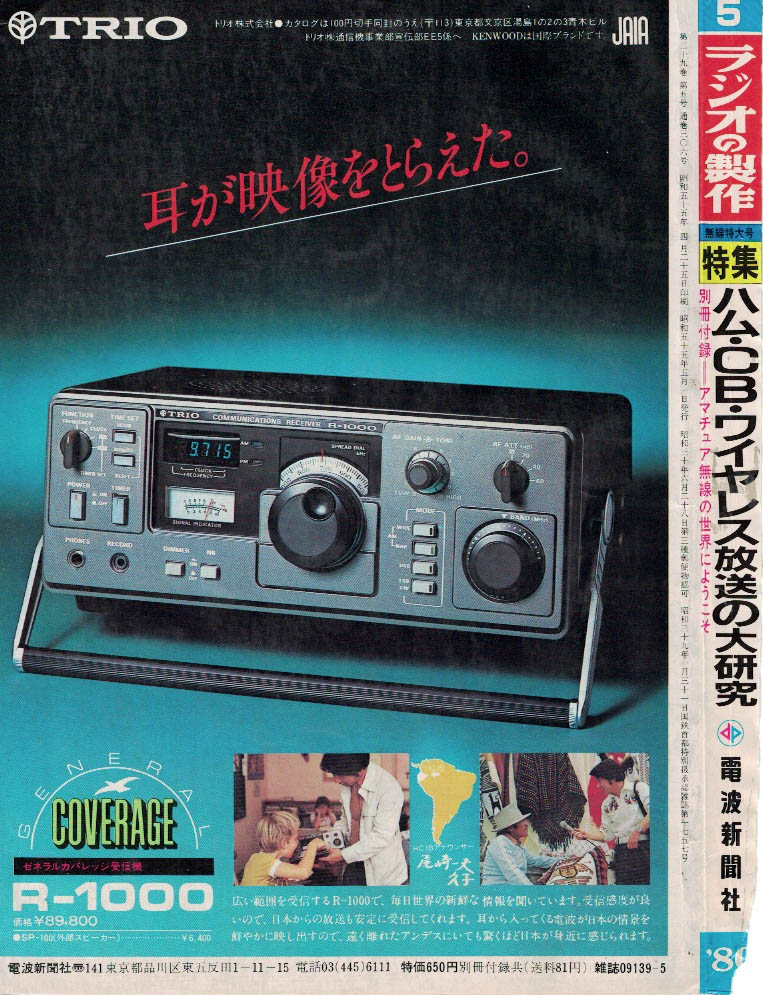 |
1972 - 4,301 letters.
1974 - 19,972 letters.
1975 - 48,141 letters.
1976 - 63,416 letters.
Kazuo was overwhelmed with all of the mail they had to respond to. So much so he began begging God, “to stop sending us so many letters.”
What caused the sudden interest in HCJB’s Japanese programs?
One of Japan’s largest radio manufacturers began advertising that their radio could receive HCJB's Japanese programs from Ecuador. The radio pictured in the ad was tuned to HCJB's frequency. What is more amazing, is that these ads were placed in the most prominent place possible--the back covers of major Japanese amateur radio magazines. Later ads would include photos of Kazuo Ozaki recording programs in Ecuador!
God would continue to open many more unexpected doors for the Ozaki's to gain listeners. On several occasions, Japanese television crews traveled to Ecuador to meet and film the Ozakis in action.
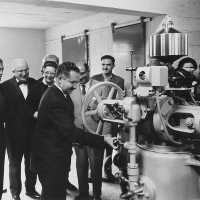
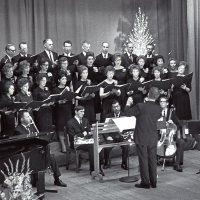
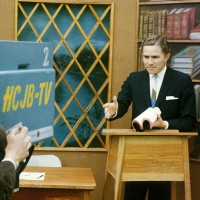

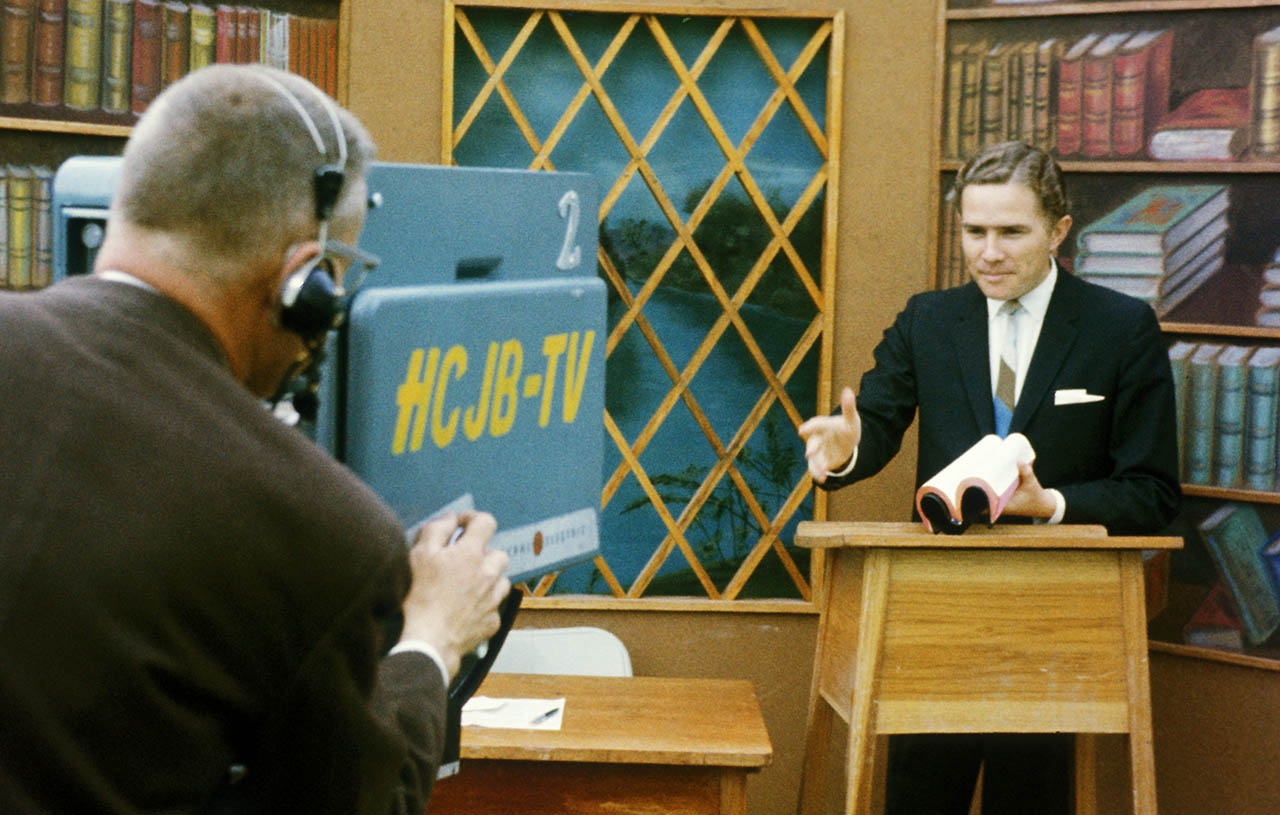 |
by Luis Palau
It's a challenge to counsel someone by telephone while a million people are watching you on television. Yet those pressure-packed minutes in the studio have proven to be some of the most fruitful in my entire ministry.
A friend of mine at HCJB dreamed up the idea of doing live counseling at HCJB's TV studio in Quito. I would talk for a few minutes, then invite viewers to call in with questions. When I stepped before the cameras for the first time I had no idea what would happen.
Once we went on the air the phones never seemed to stop ringing. The program was called "Respond," and the people certainly did.
One November night in 1965, shortly after launching "Respond," I had just prayed with a woman who received Jesus Christ as Savior. The next call was brief. A high-pitched, squeaky voice requested an appointment the next day at 9:30.
The next morning, a small woman walked through the gates of the HCJB property, followed closely by two huge men. As she entered the office, her eyes traveled to every corner before she finally sat down.
"You pastors and priests;' she began with disgust. "You are a bunch of thieves and liars and crooks. All you want is to deceive people. All you want is money!" She went on that way for more than 20 minutes, swearing all the while and smoking every last bit from each cigarette she lit.
I prayed silently, "Lord, how shall I handle this?" Finally, she was finished. I began, "Is there anything I can do for you? How can I help"
She stared at me then broke into uncontrollable sobs. When she was spoke again, the edge was gone from her voice: "You know in my 38 years, you are the first person who has ever asked me if he could help me:" She was Maria Benitez-Perez, which I recognized as the name of a wealthy, influential family. "I am the female secretary of the Communist Party in Ecuador," she said. "I am a Marxist-Leninist and I don't believe in God:'
With that she took off on another breathless tirade against me, all preachers and priests, and the church.
"Why did you come here?" I broke in. "Just to insult me?"
For the next three hours, she told me her story. Maria had left home and run away from a religious school as a rebellious teenager. The communists befriended her, and she became a party leader.
'When my mother died and the bishop came to officiate at the ceremony, I mocked him while my mother's body lay there in the casket;' she said. "And I've always felt a little guilty about that, even though I don't believe in God, of course:'
Every time she got onto the subject of God, she became enraged. But just as often, she would return to her mother's funeral.
"Hey, Palau;' she said, "supposing there is a God--which there isn't- but just supposing there is, do you think he would take a woman like me?"
I had read once that when dealing with a professed atheist, the best approach is to take one truth from the Bible and stay with it. The Lord gave me Hebrews 10:17.
"Look, Maria, don't worry about what I think. Look at what God thinks:' I opened to the verse and turned the Bible so she could see.
"I don't believe in the Bible...."
"But we're just supposing there's a God, right?" I said. "Let's just suppose this is His Word. He says, 'Their sins and iniquities I will remember no more.' "
She waited as if there had to be more. "But listen, I've been married three times, and in bed with a lot of men:'
I said, "Their sins and iniquities I will remember no more."
"But I haven't told you half my story. I stabbed a comrade who later committed suicide."
"Their sins and iniquities I will remember no more."
"I've led student riots where people were killed."
"Their sins and iniquities I will remember no more."
Seventeen times I responded to Maria's objections and confessions with that verse. Finally I asked, "Would you like Christ to forgive all that you've told me about, and all the rest that I don't even know?"
"He can't do it," she said.
"You want to try it?"
"It would be a miracle."
"Take a step of faith. Invite Him into your life and try Him. See what will happen."
Maria stared at me for a long moment, and then bowed her head. "All right," she whispered.
I led her in a simple prayer, confessing her sins, asking forgiveness, and receiving Christ Jesus.
She returned a week later to tell me she was reading the Bible. An HCJB missionary helped disciple her.
I didn't see Maria again until January. Her face was disfigured; several of her front teeth were missing.
She had told her fellow communist leaders, "I am no longer an atheist. I believe in God and in Jesus Christ. I am resigning from the party. We are all a bunch of liars. We deceive people when we tell them there is no God:'
A few days later, four of Maria's former comrades attacked her. She was forced to hide in the basements of churches and in the homes of missionaries.
"There's going to be a revolution in June," she told me matter-of-factly. "We've had it all planned for months." It was to be a typical Latin American uprising, students and agitators causing a disturbance in the streets, luring out the army, which would then be attacked and overthrown. The chairman of the Communist Party for Ecuador would take over the country.
Maria remained on the run until June, when the Marxists' network of spies tracked her down. But she talked her four captors into retreating to a farm, where they could rest and read a few Christian books she had chosen for them.
On the morning of the revolution, the Communist Party leader came out of hiding in Colombia to talk to Maria, his long-time friend. "Why did you become a Christian?" he asked.
"Because I believe in God and Jesus Christ, and my faith has changed my life."
"You know," he said, "while hiding out, I have been listening to HCJB shortwave radio, and those Christians-they almost have me believing there is a God!"
"There is!" Maria said. "Why don't you become a Christian and get out of this business? Here, take this Bible and this book [Peace With God, by Billy Graham]. You can go to the farm and read them."
He accepted her offer. Later that morning, the disturbance that was supposed to trigger revolution fizzled into chaos, because the leaders were off on a farm, reading.
What a tremendous impact TV and radio have on the "untouchables"- people who for one reason or another live completely outside the influence of any Christian witness... except what they might hear on the air. I'm thankful for the opportunity I had to learn that lesson at HCJB's TV studios many years ago.
Copyright 1990 by Luis Palau.
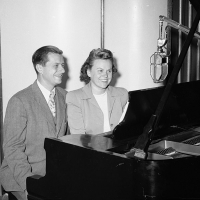
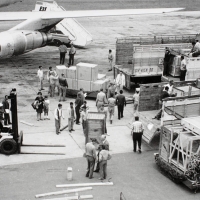
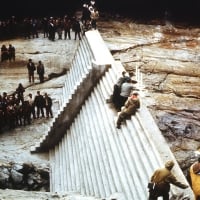
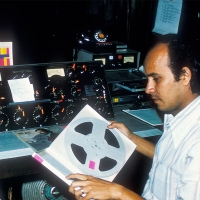
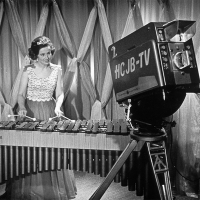
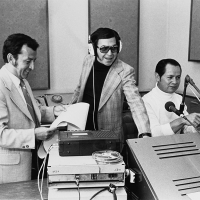

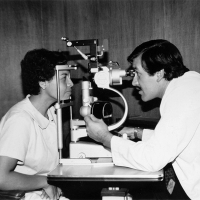
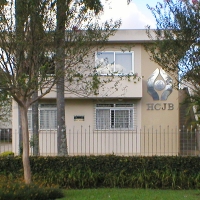
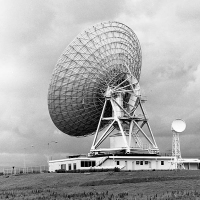

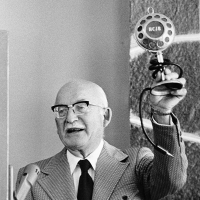

Religious Broadcasting Hall of Fame started. Charles Fuller, Walter Maier, Clarence Jones, and John Zoller were the first inductees.
